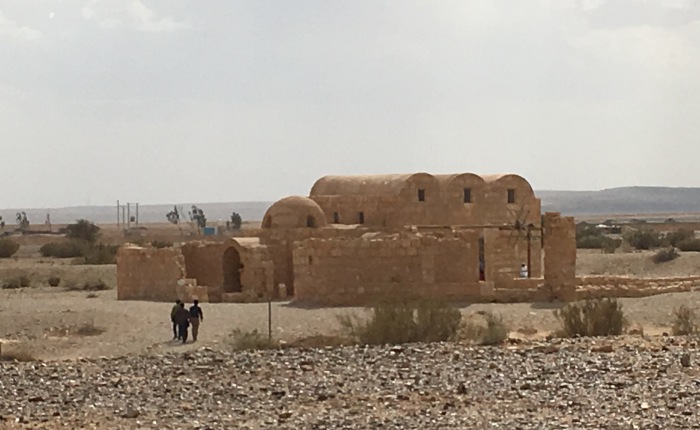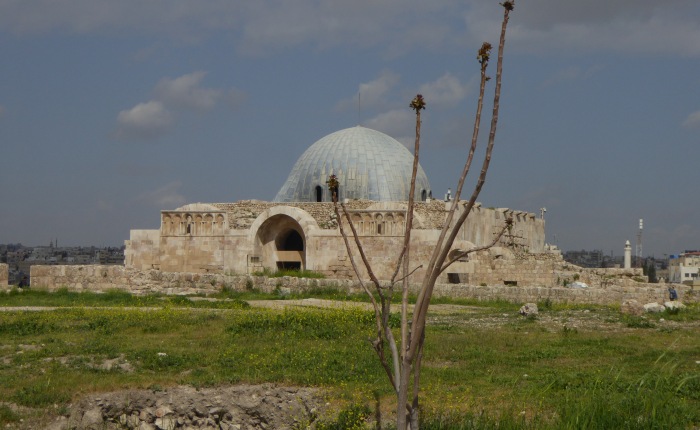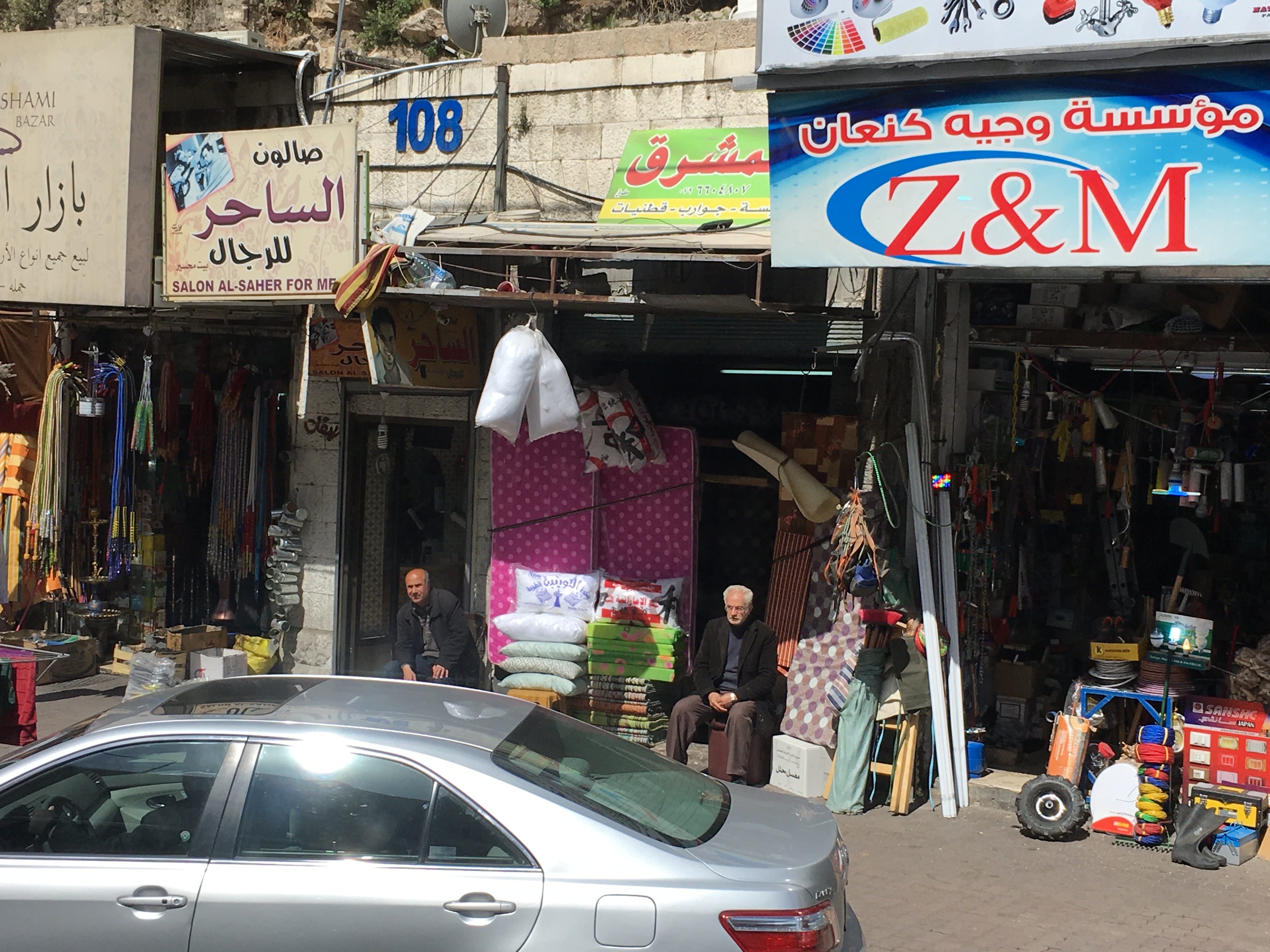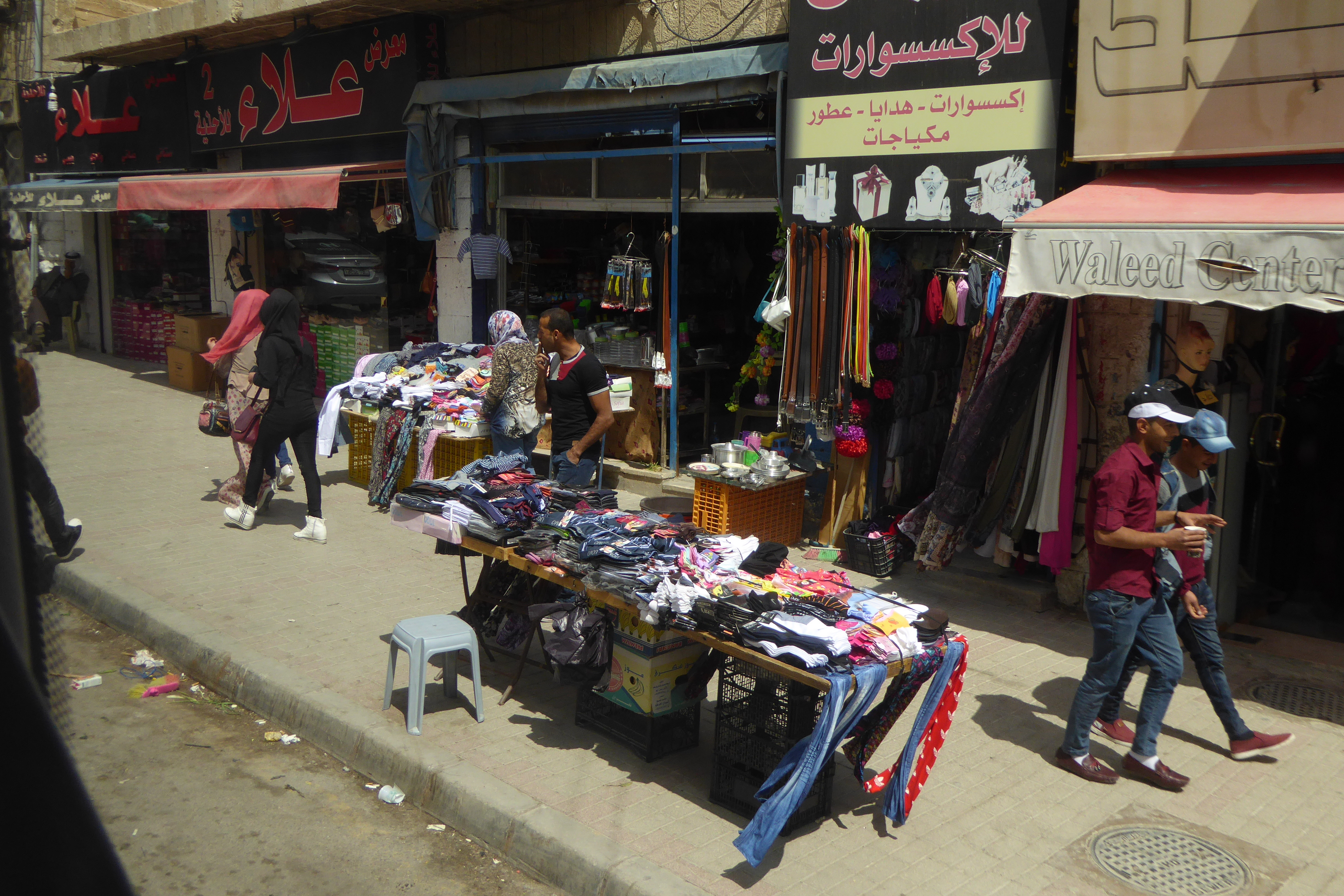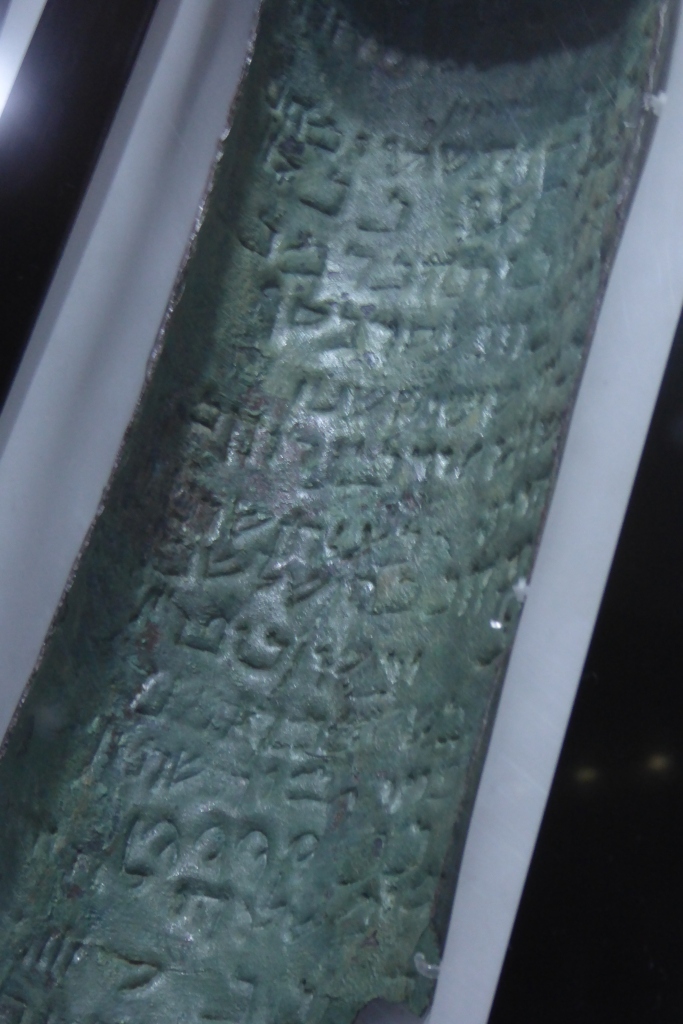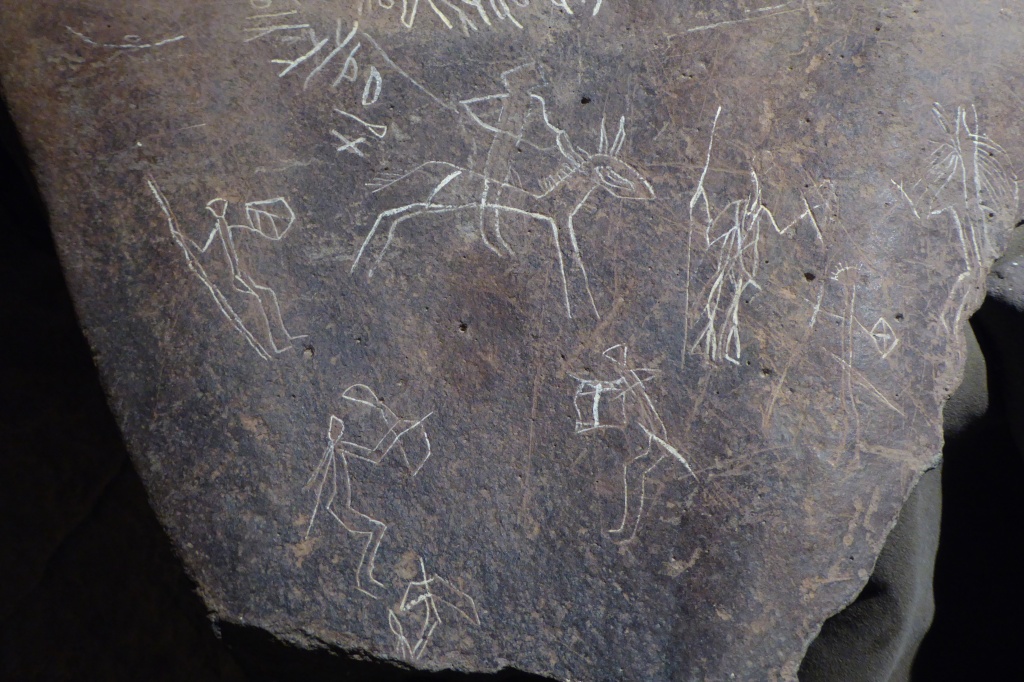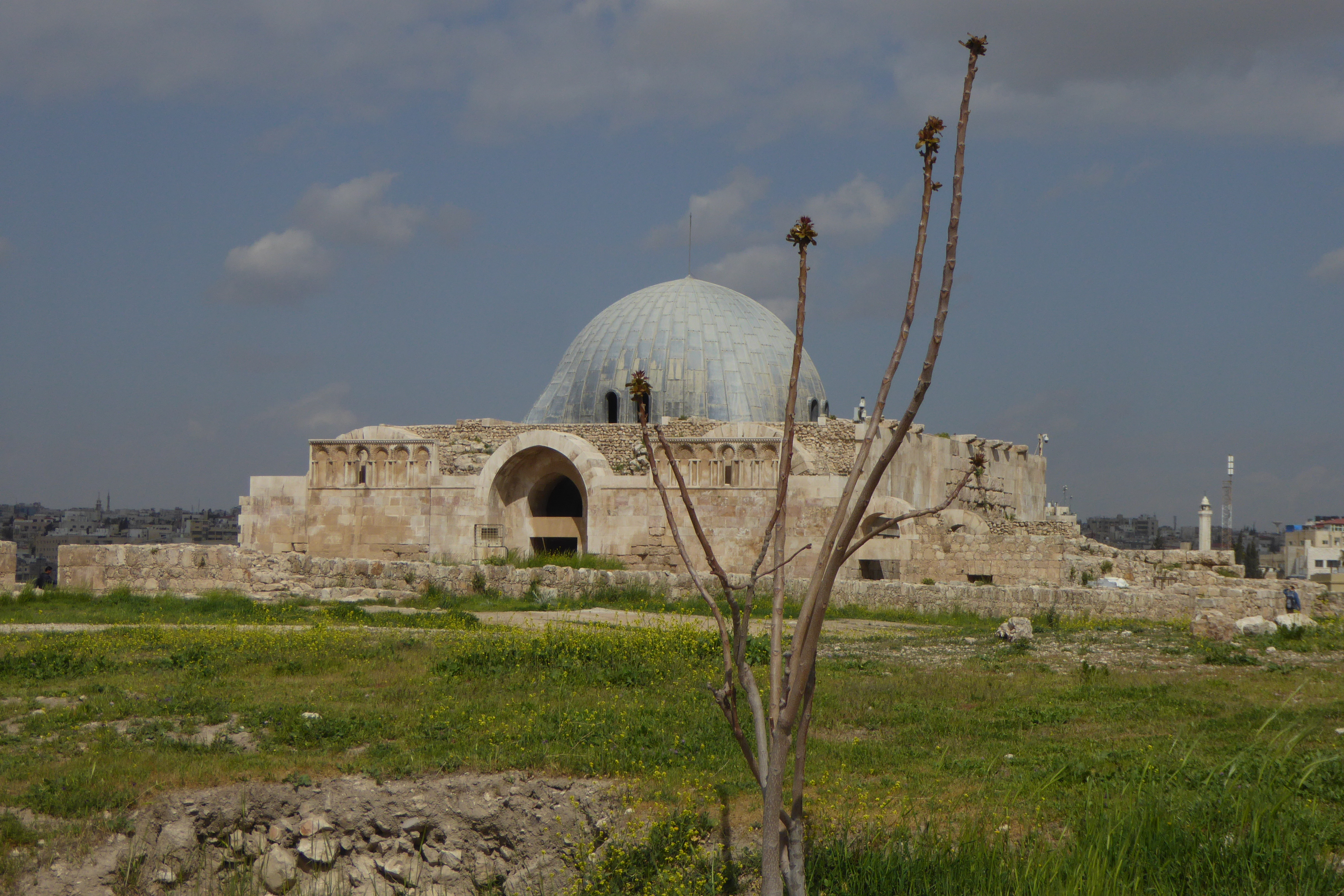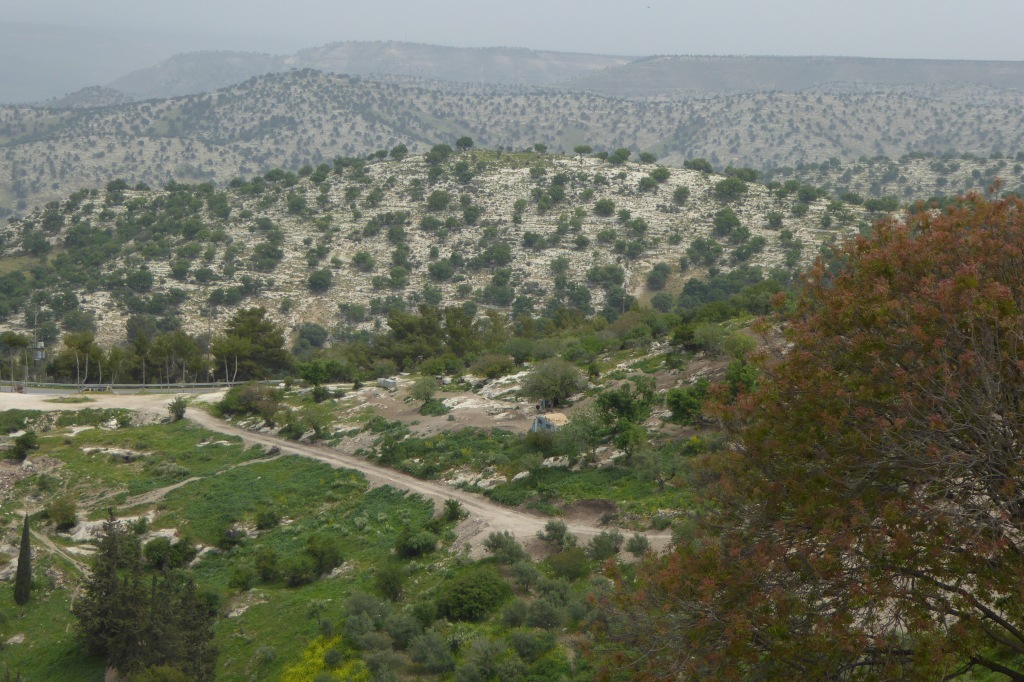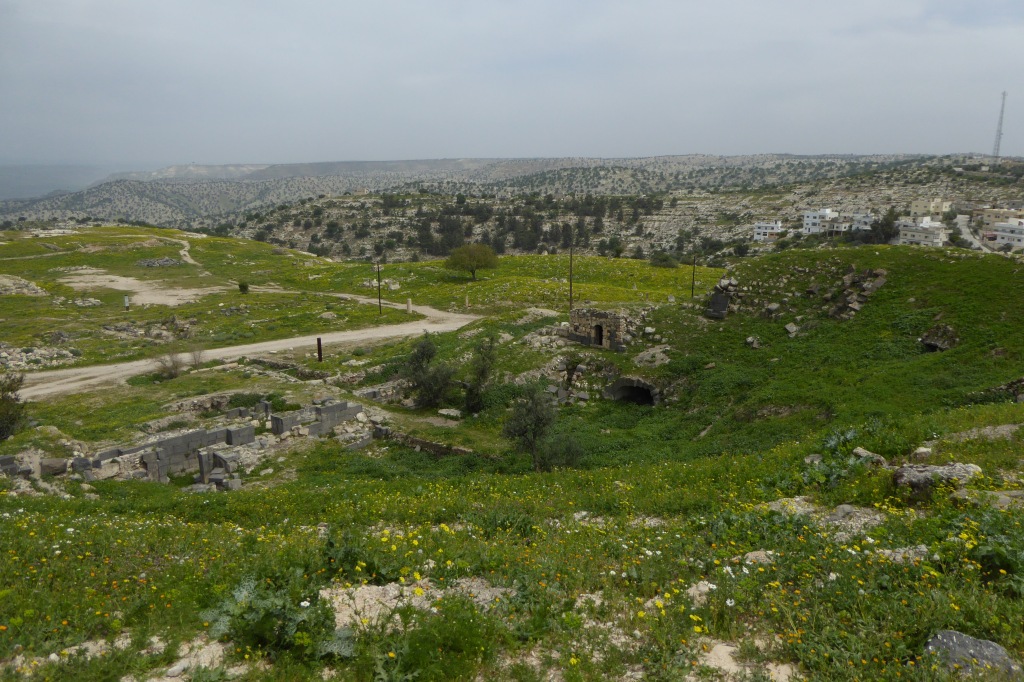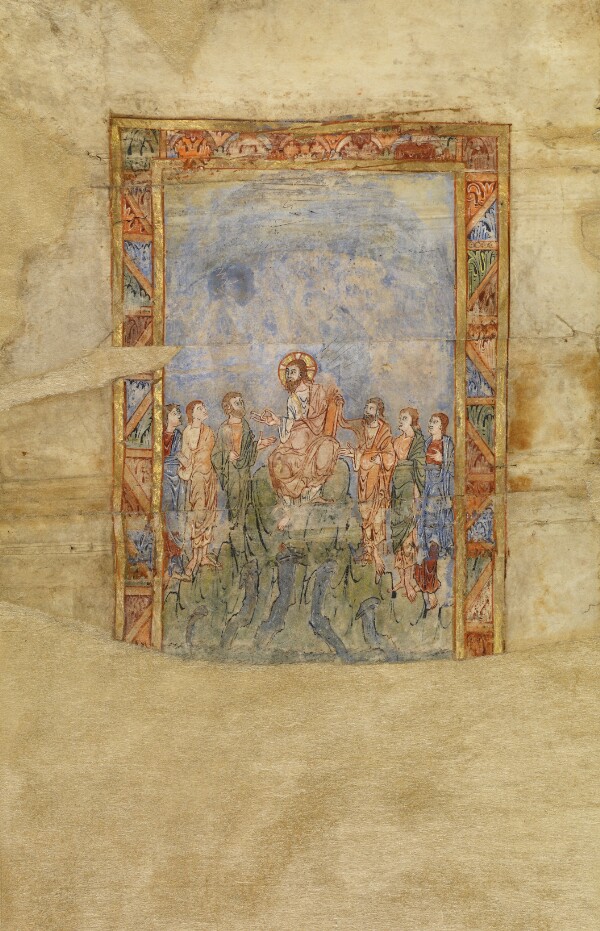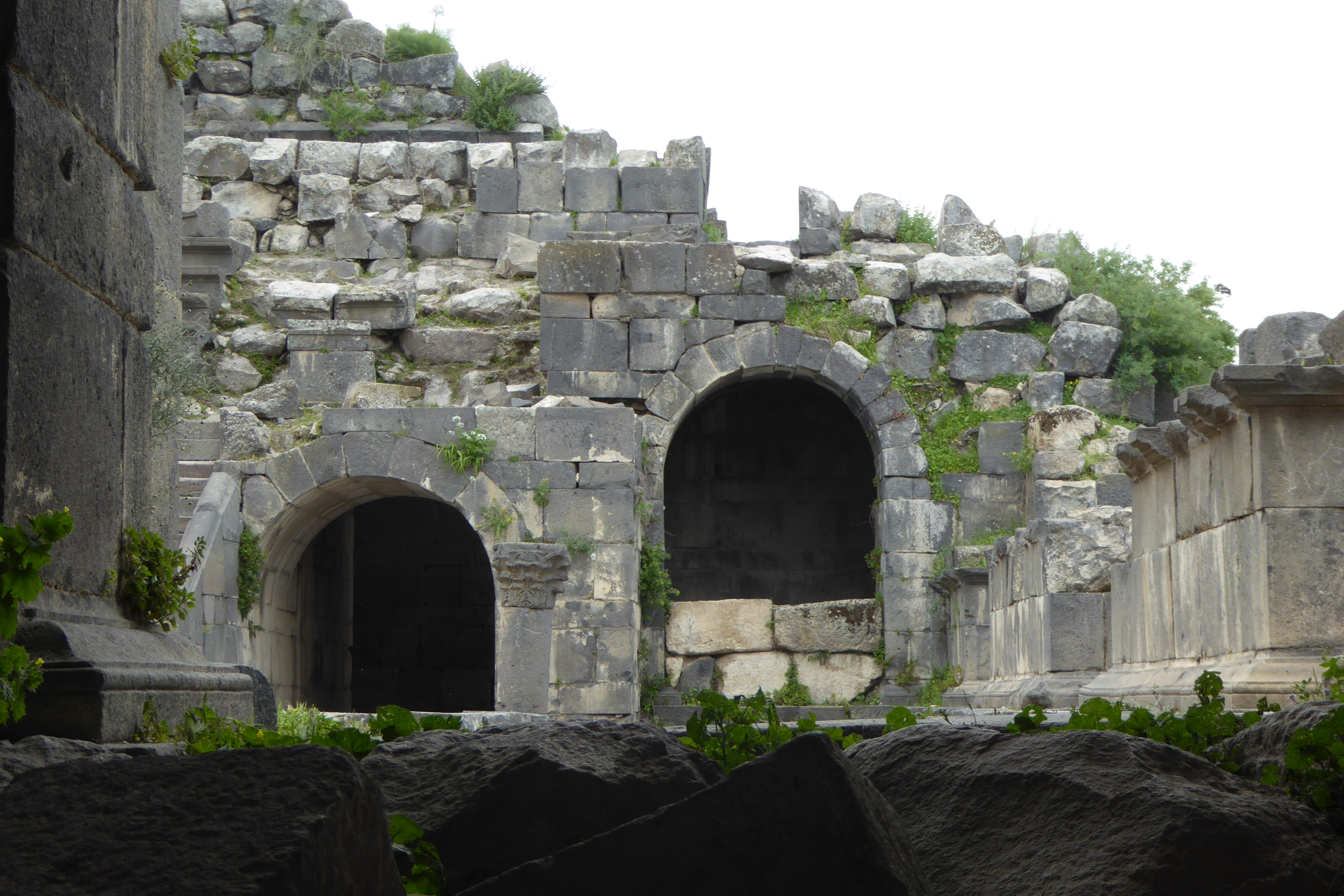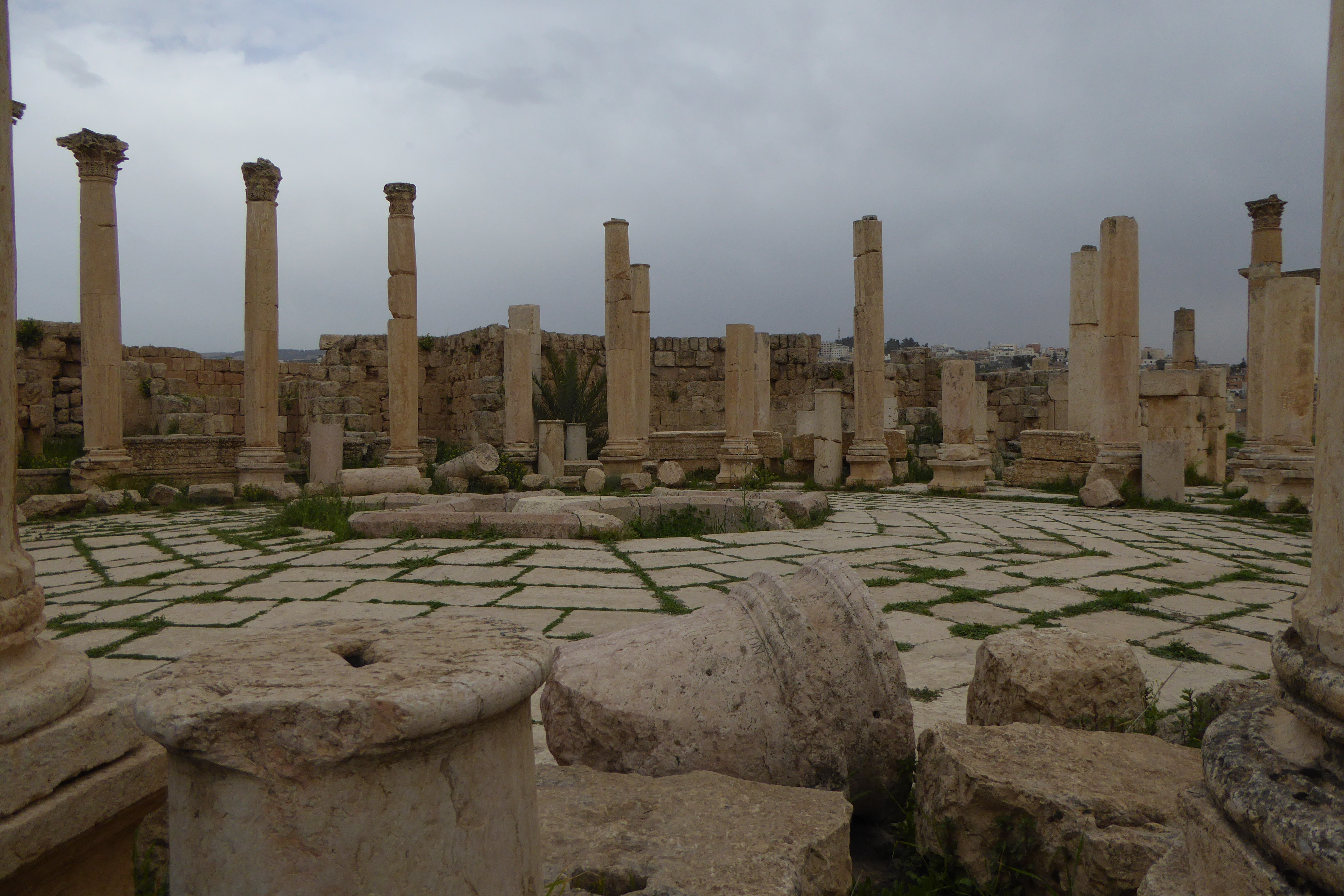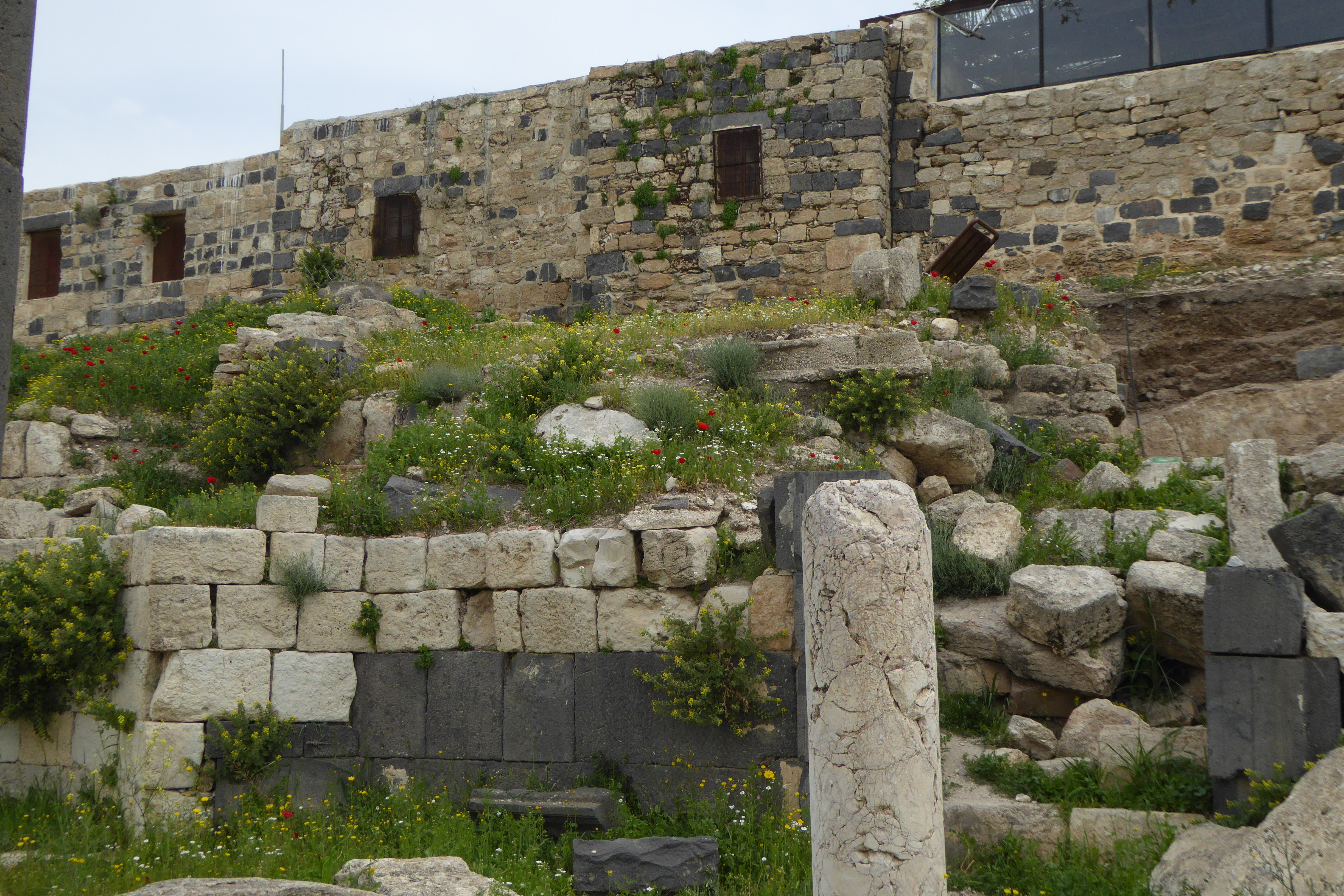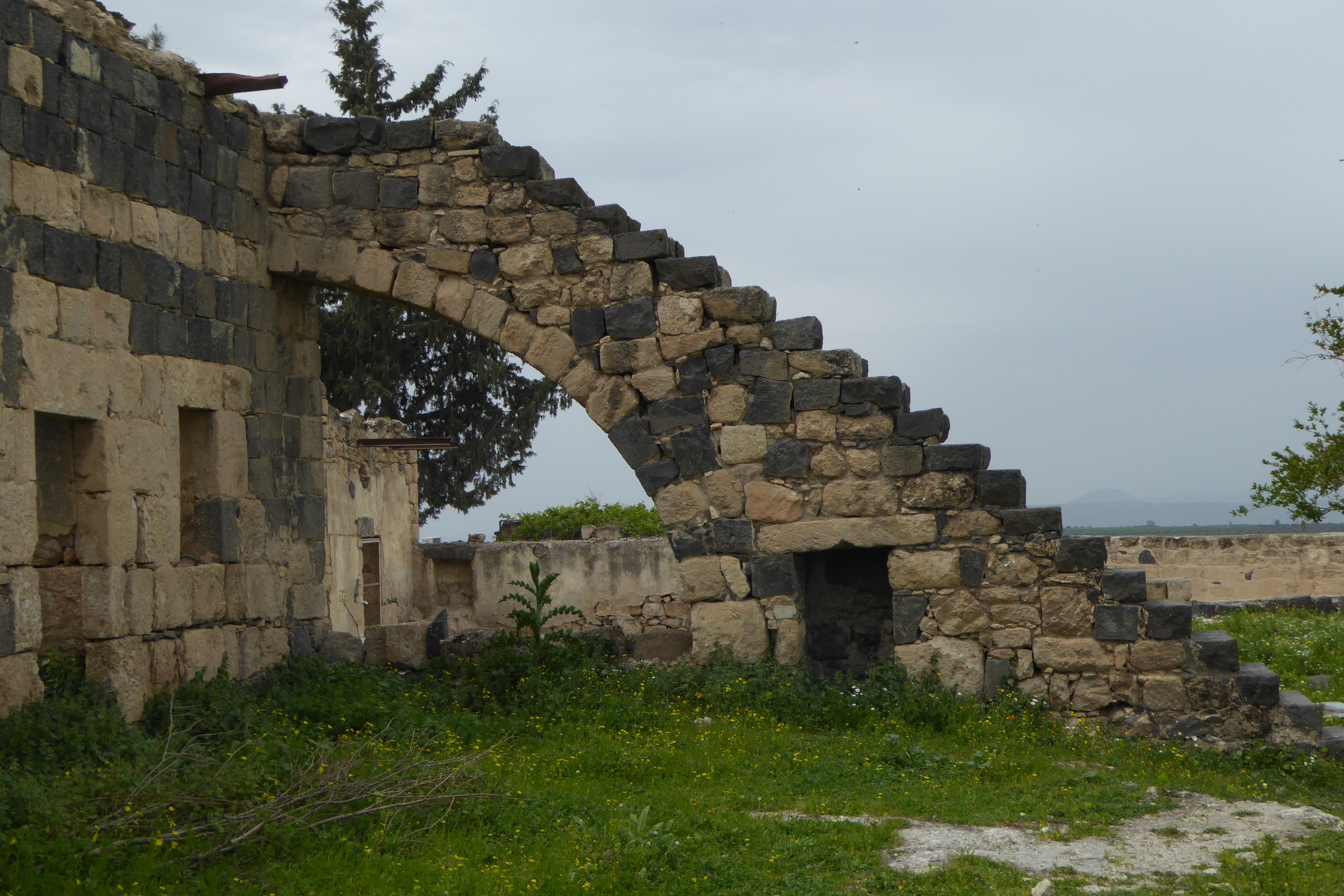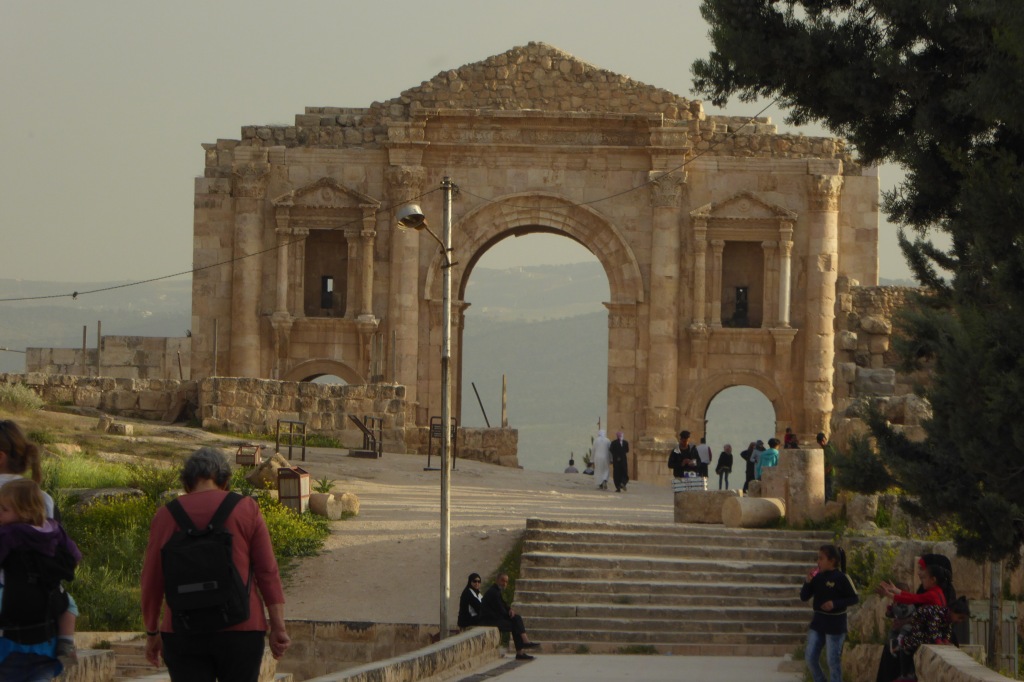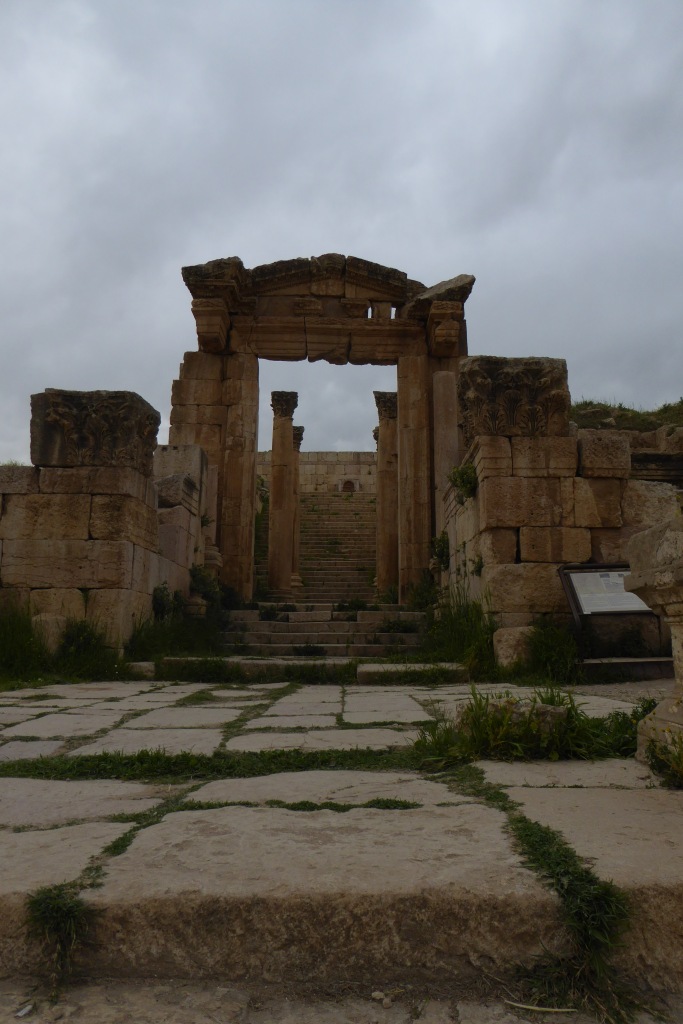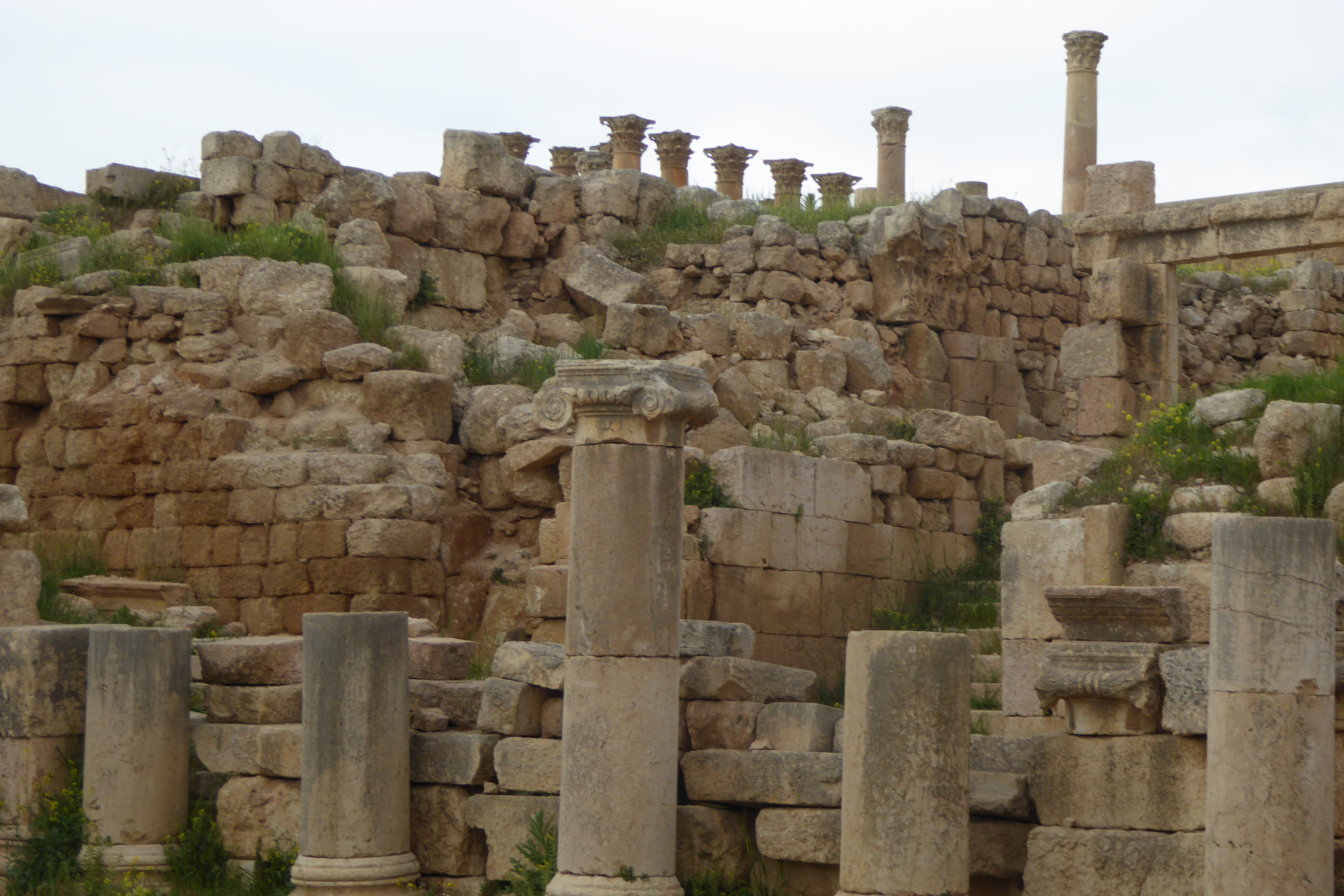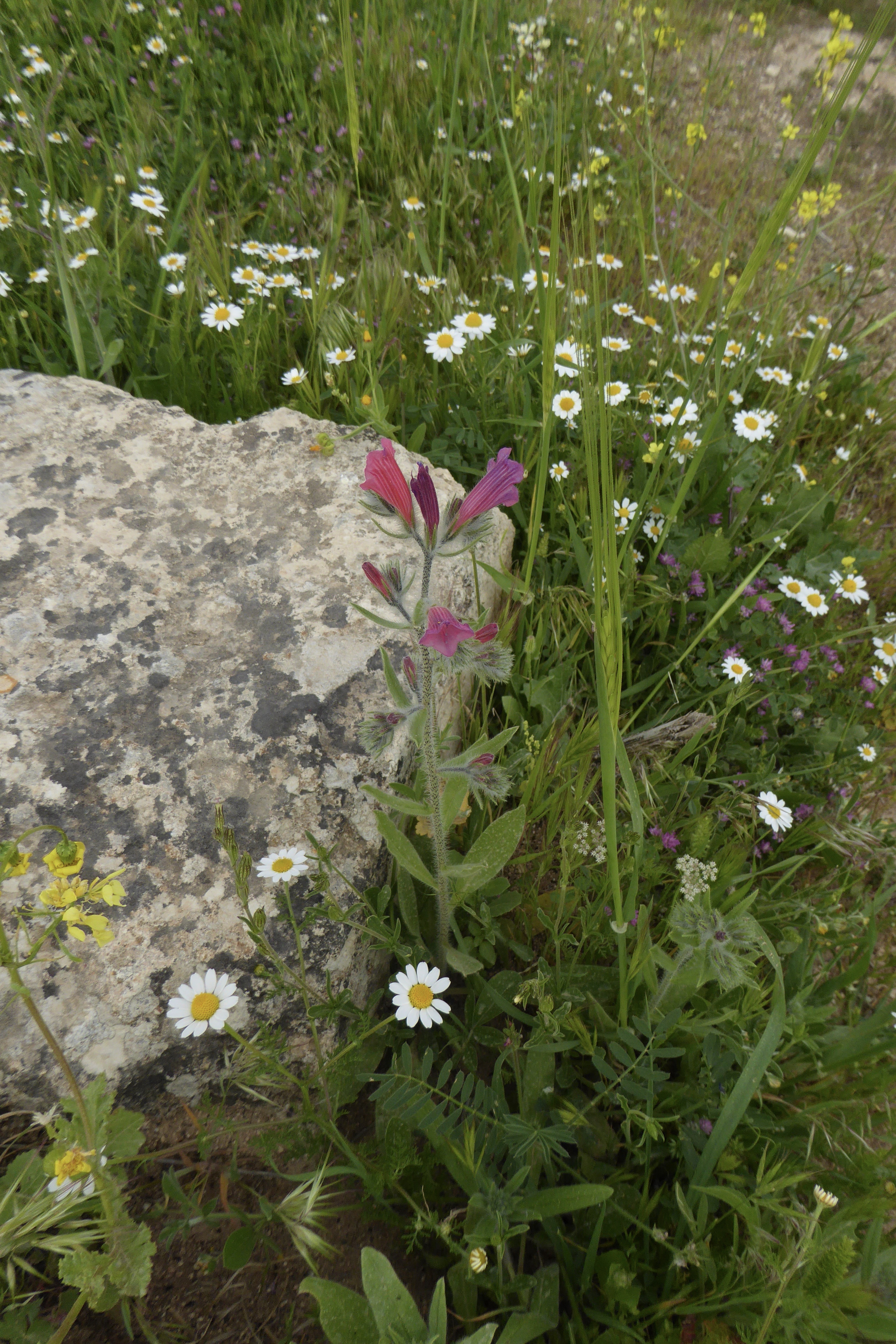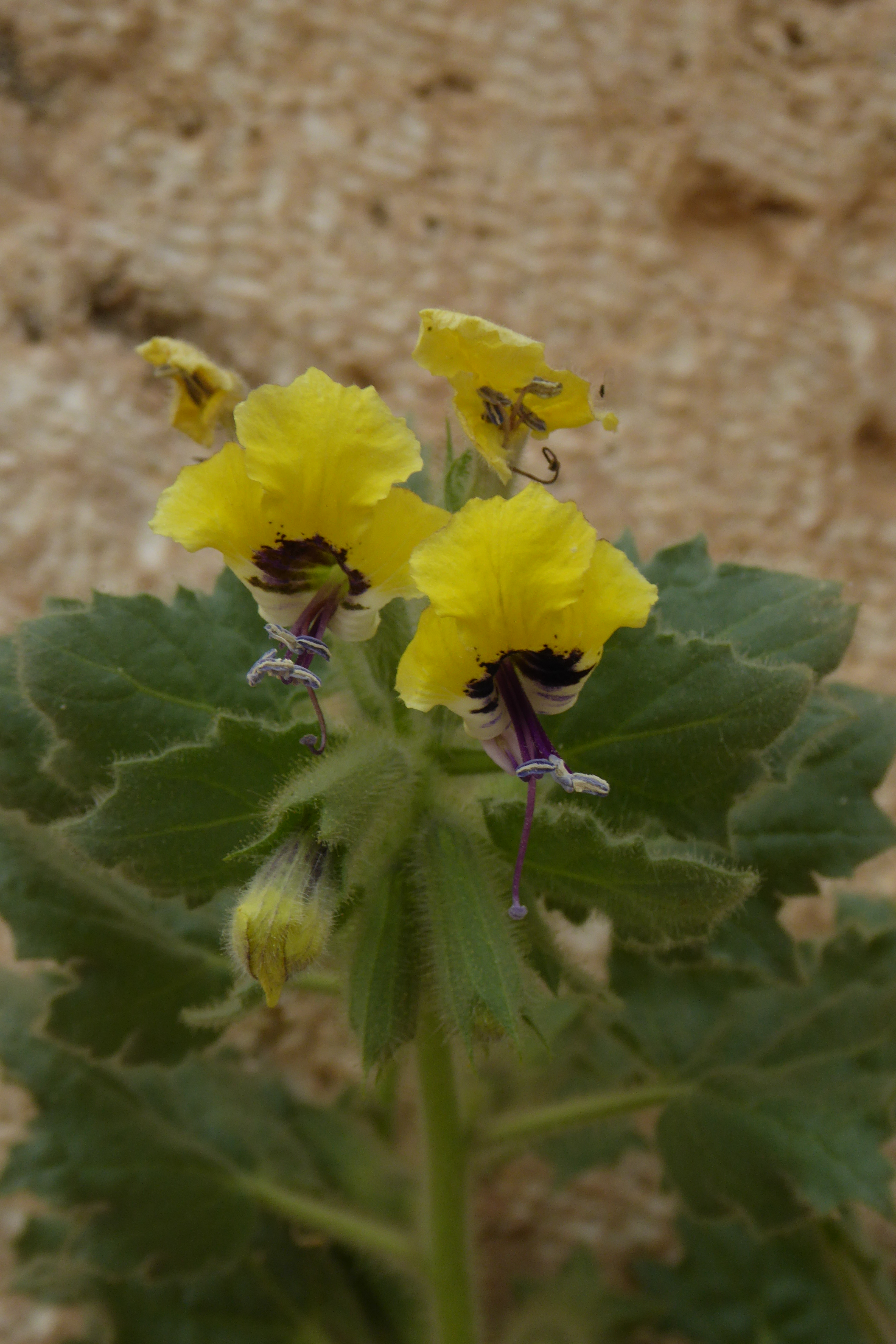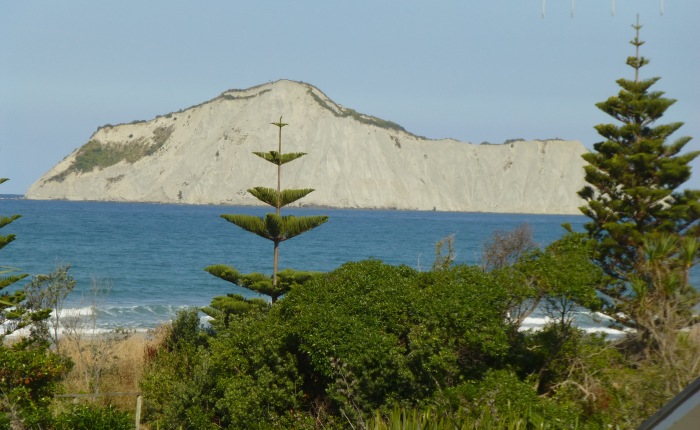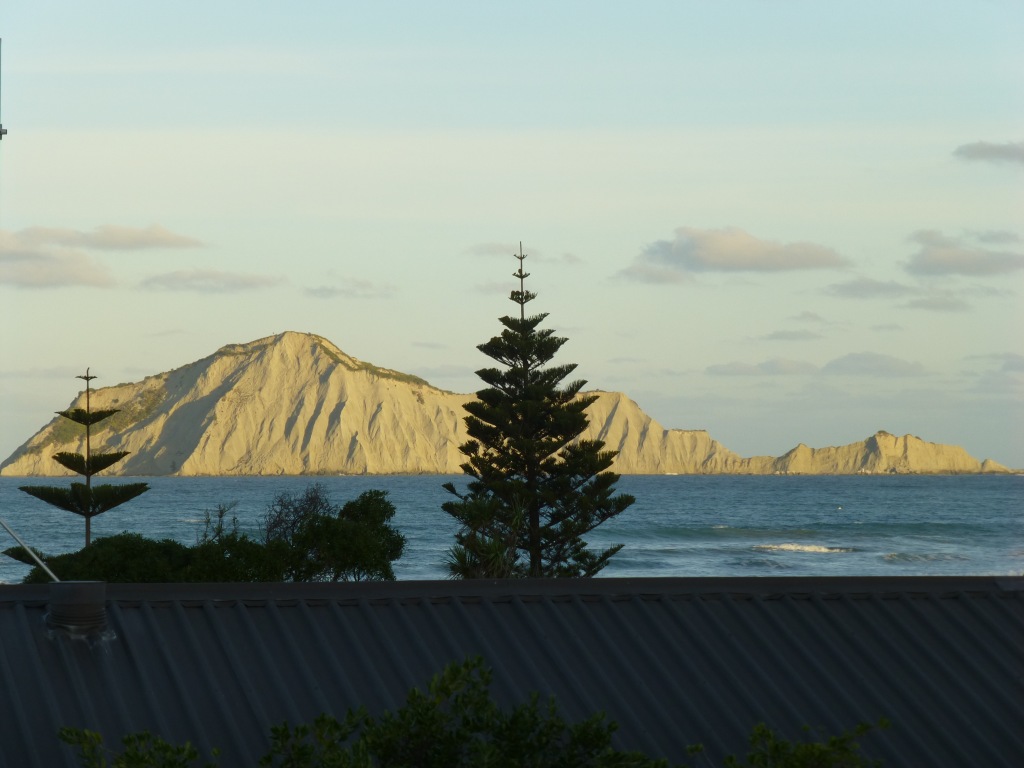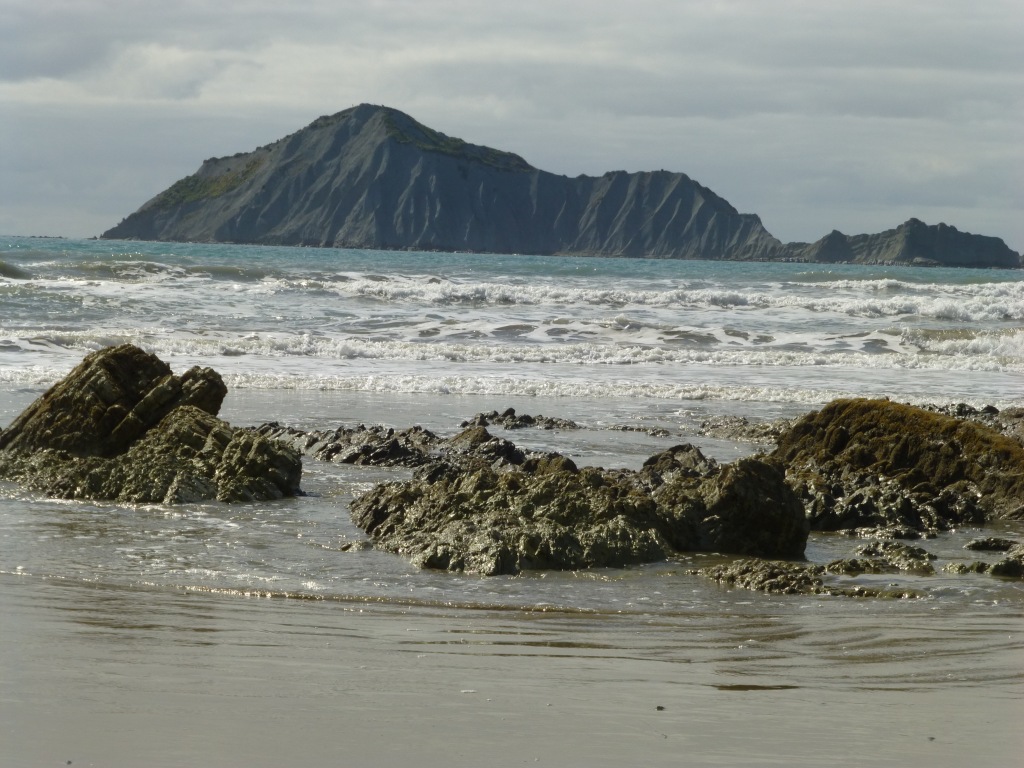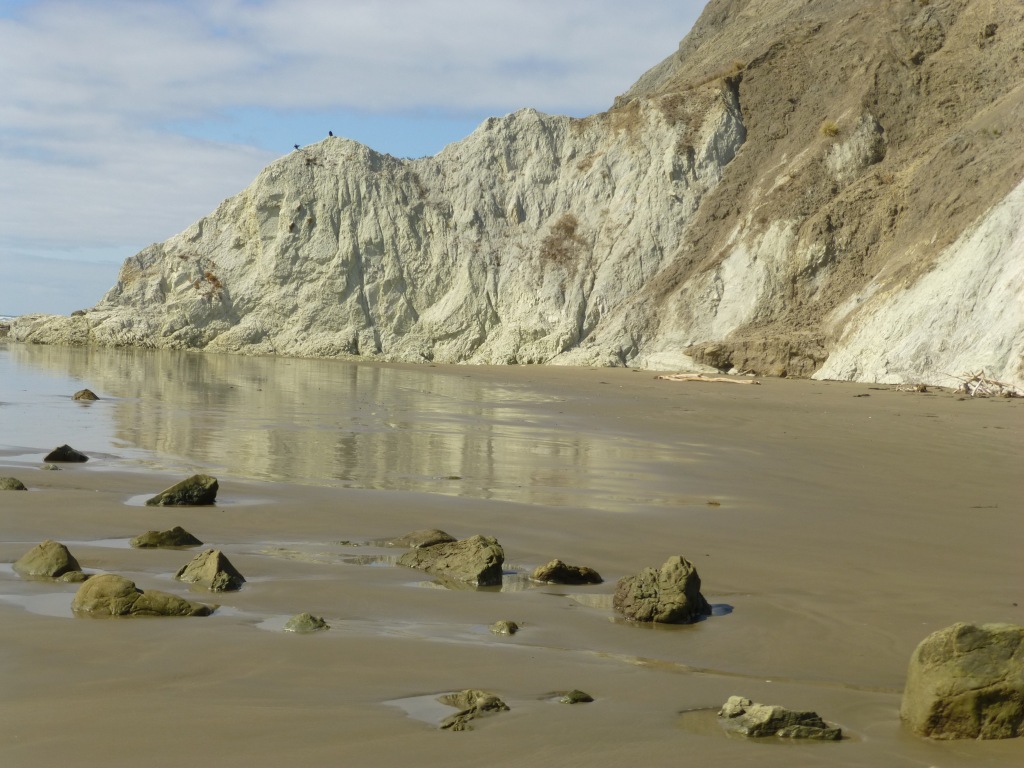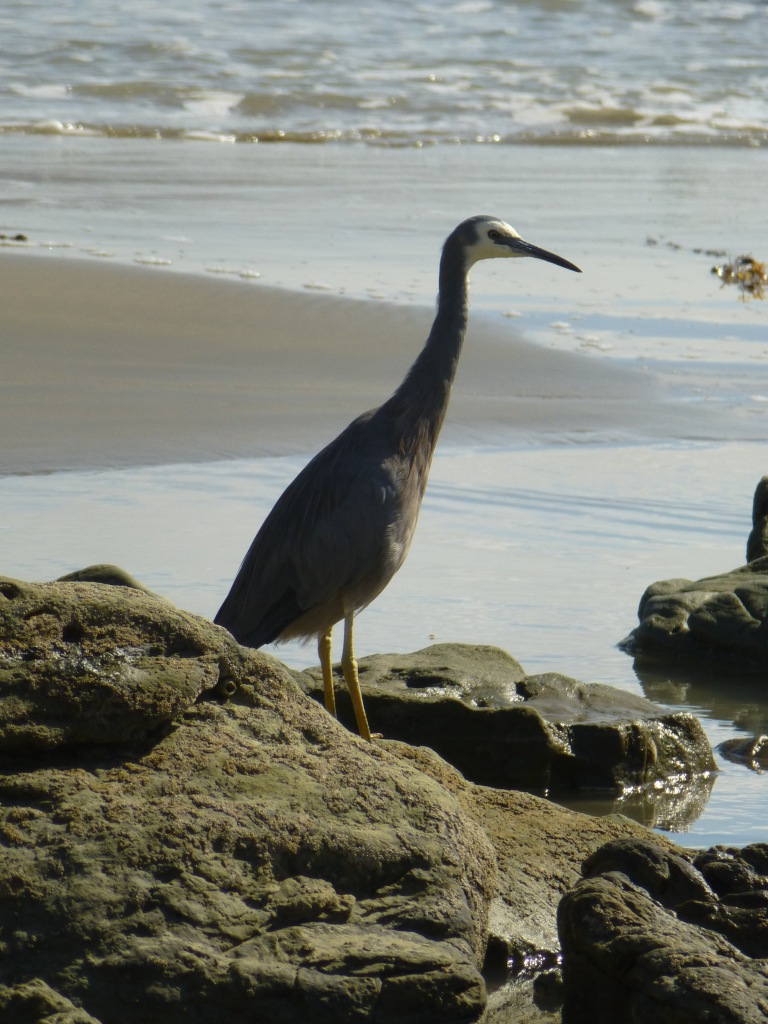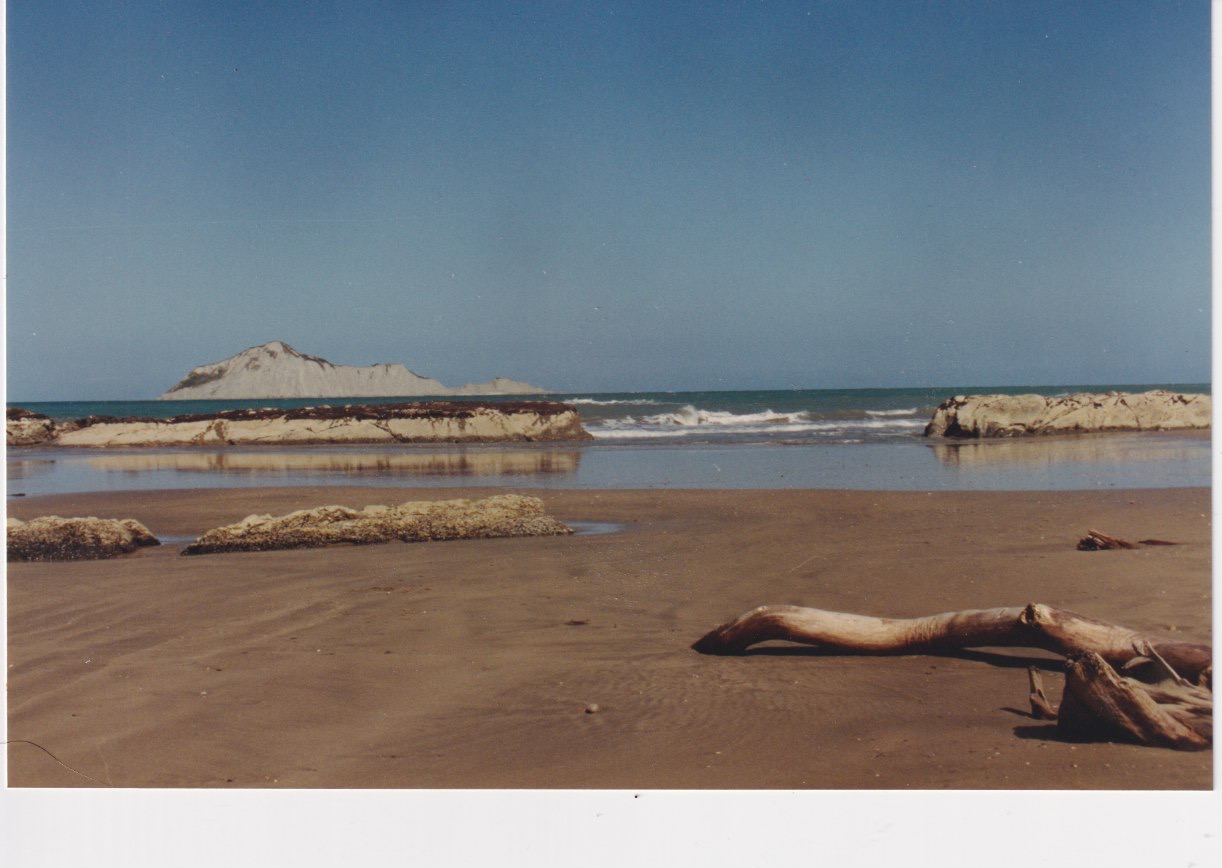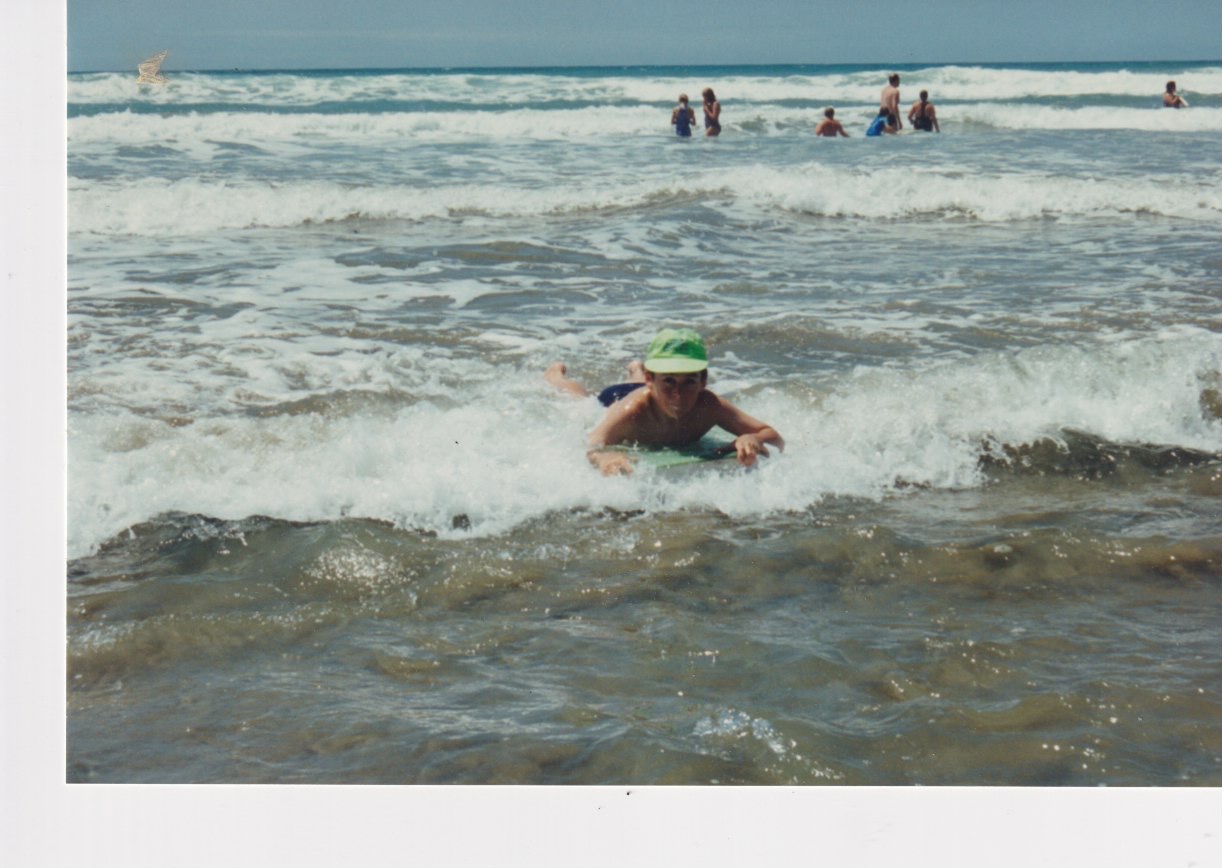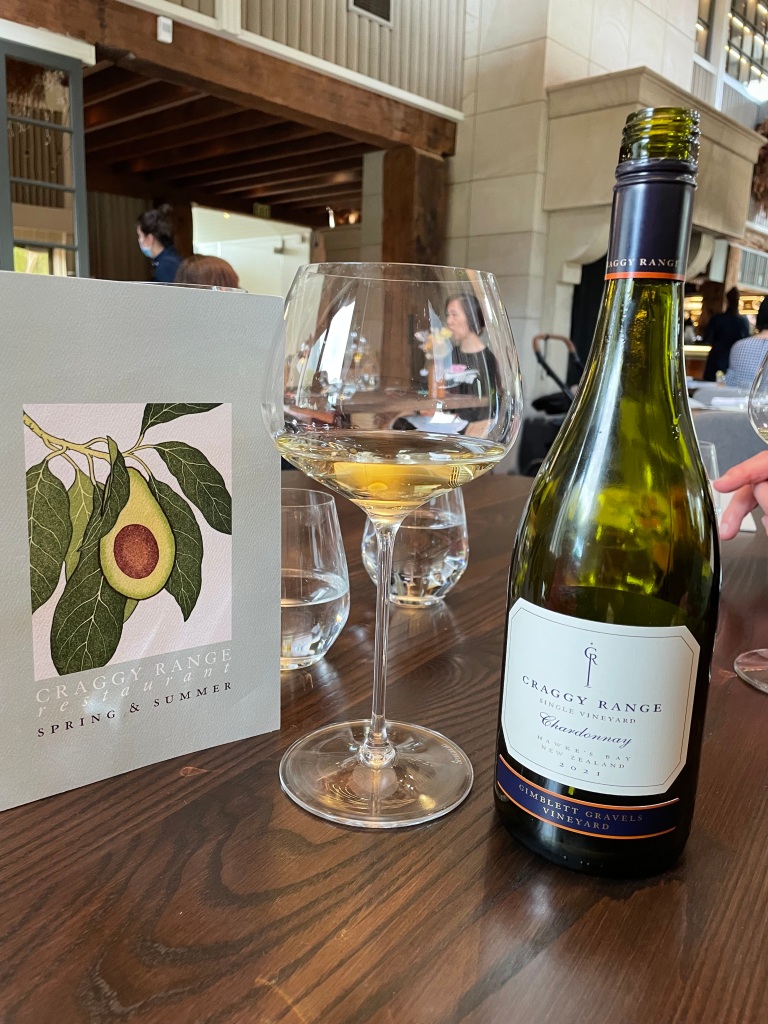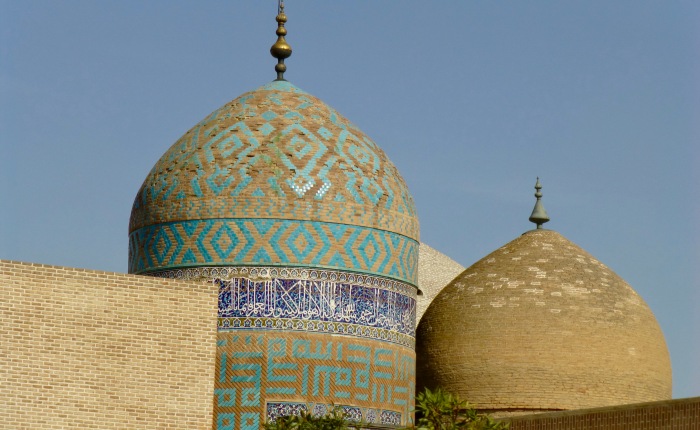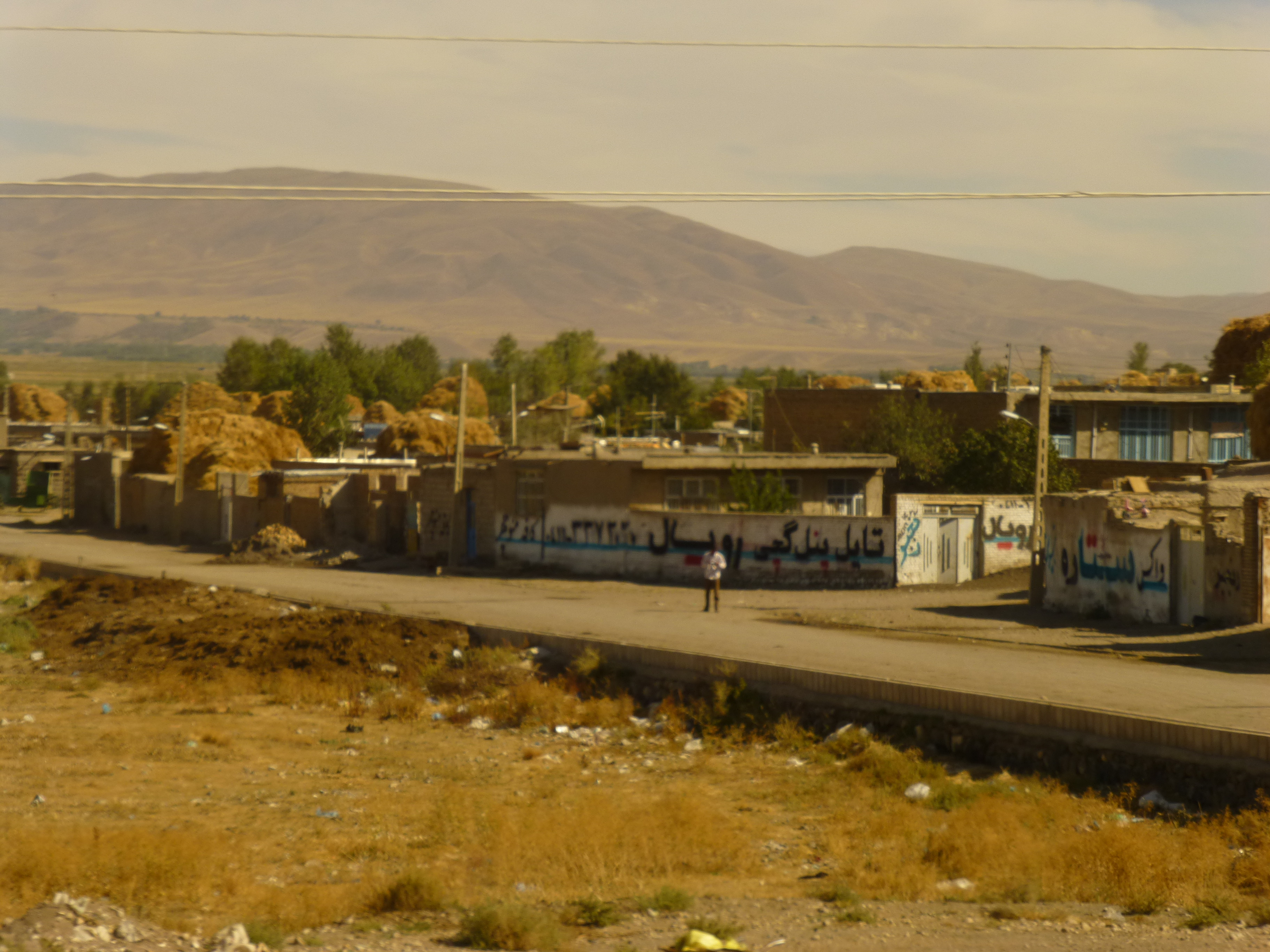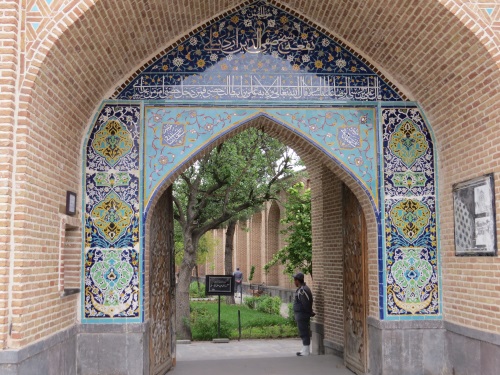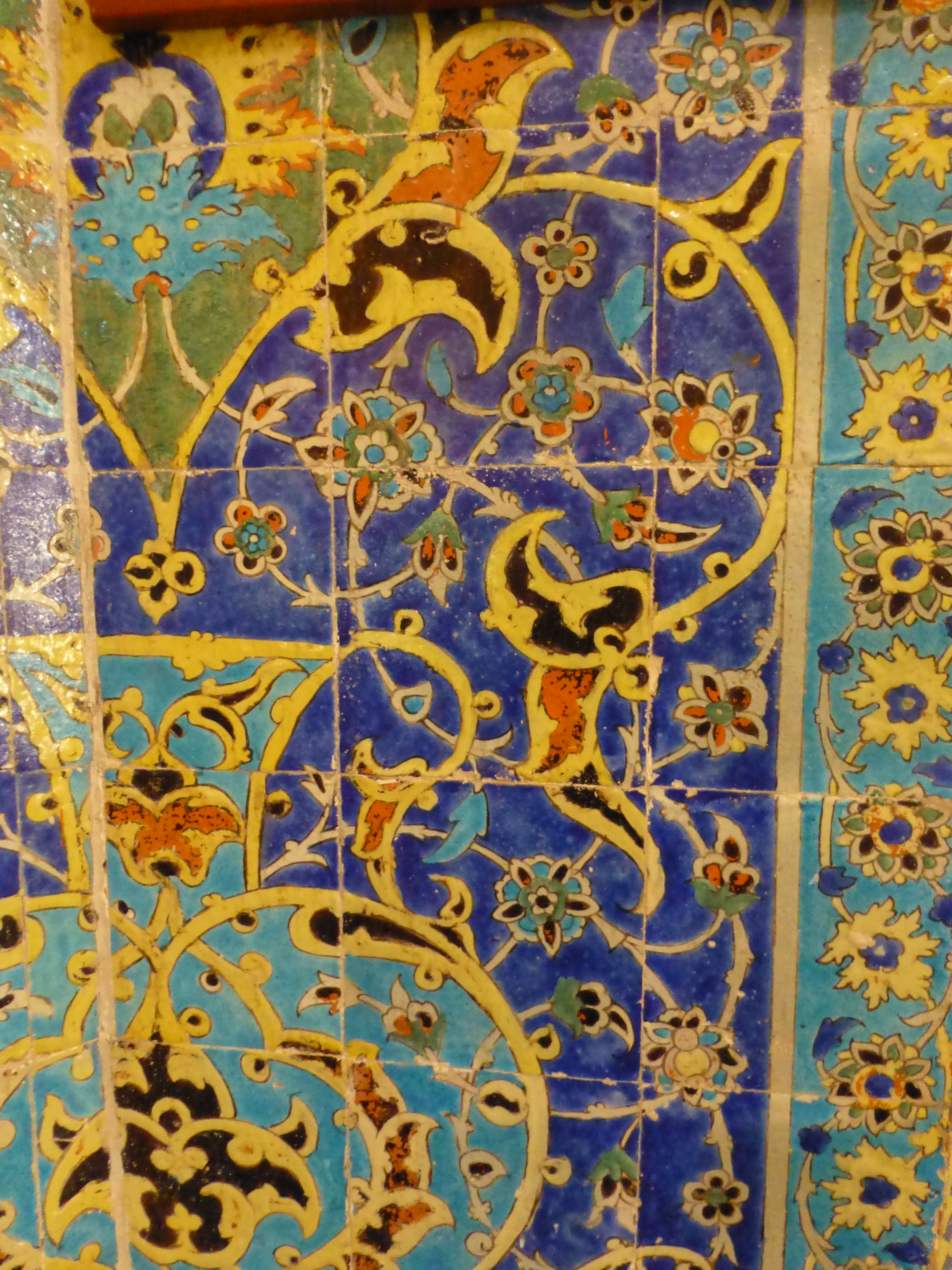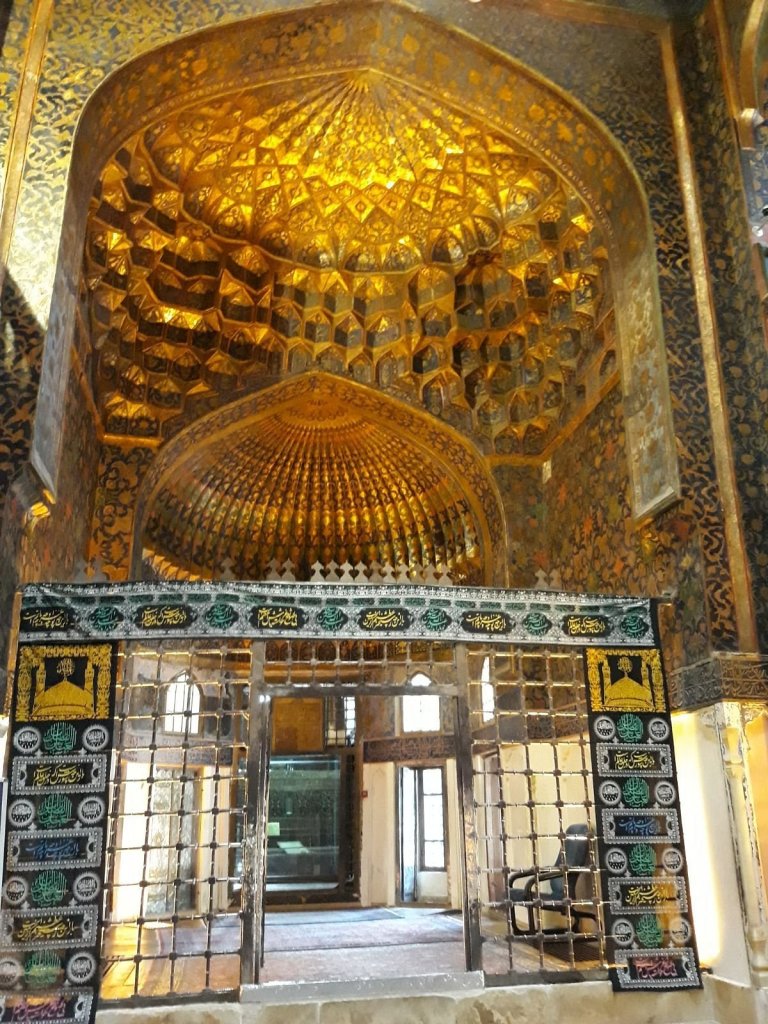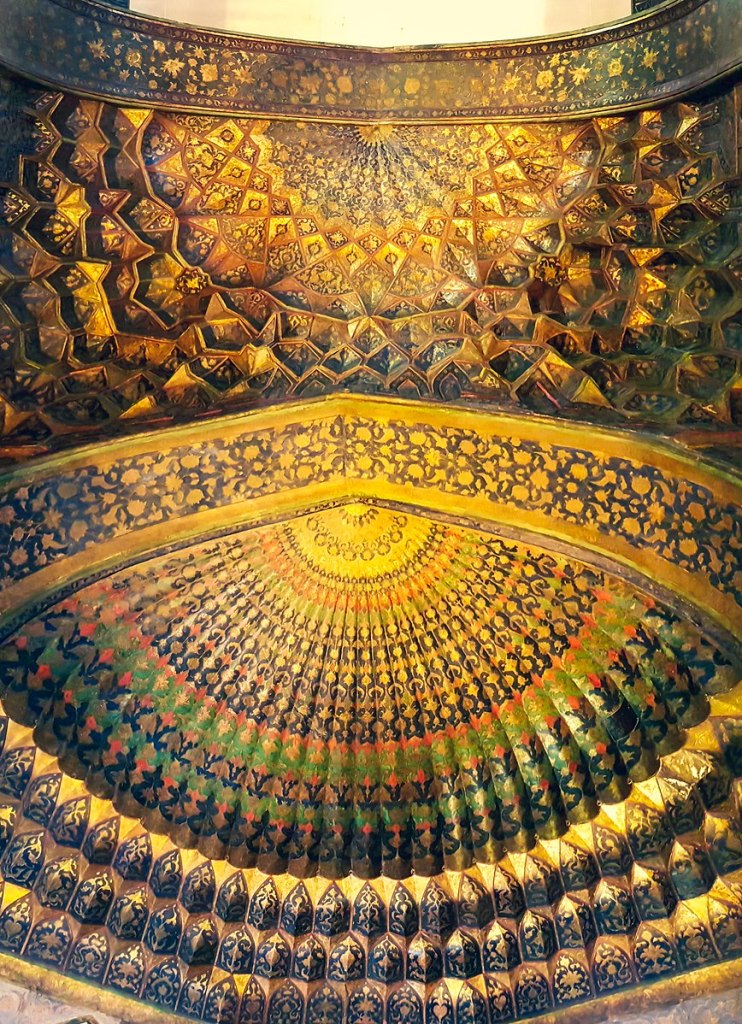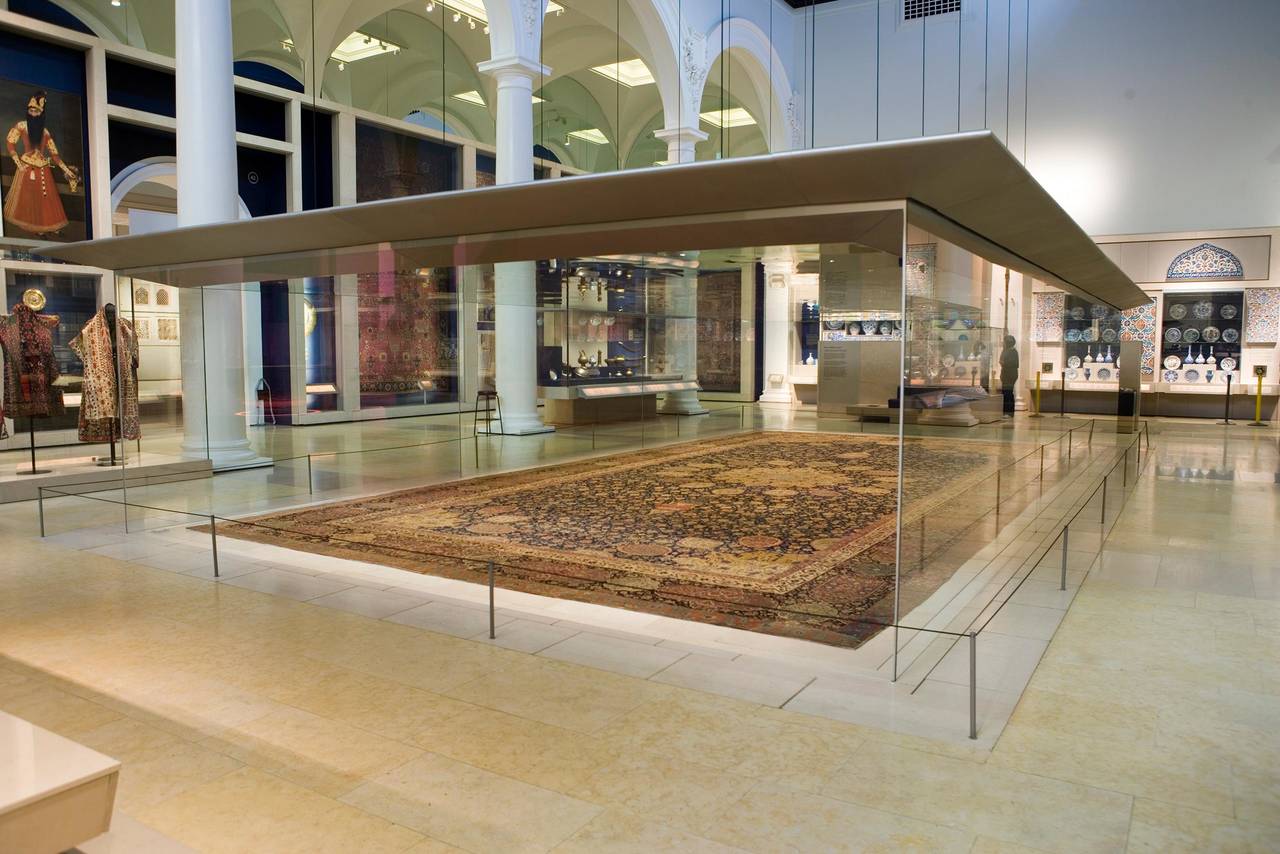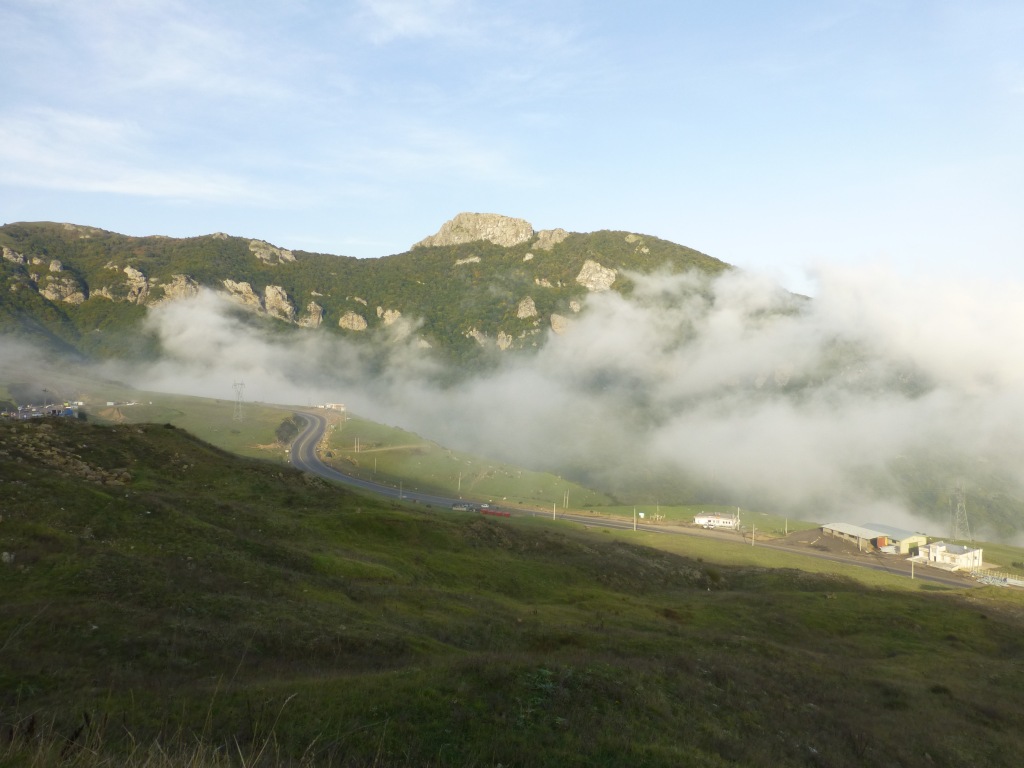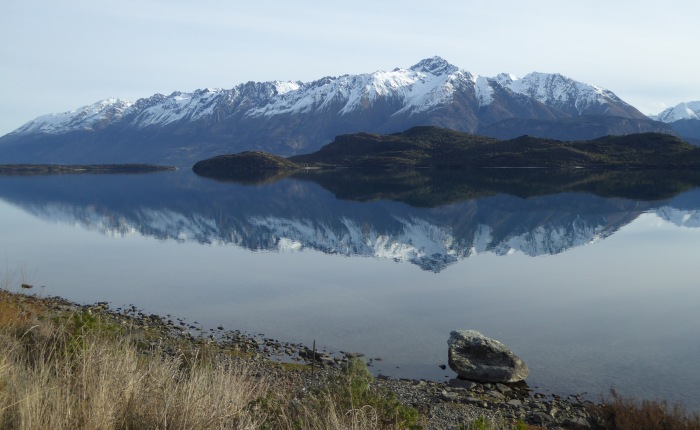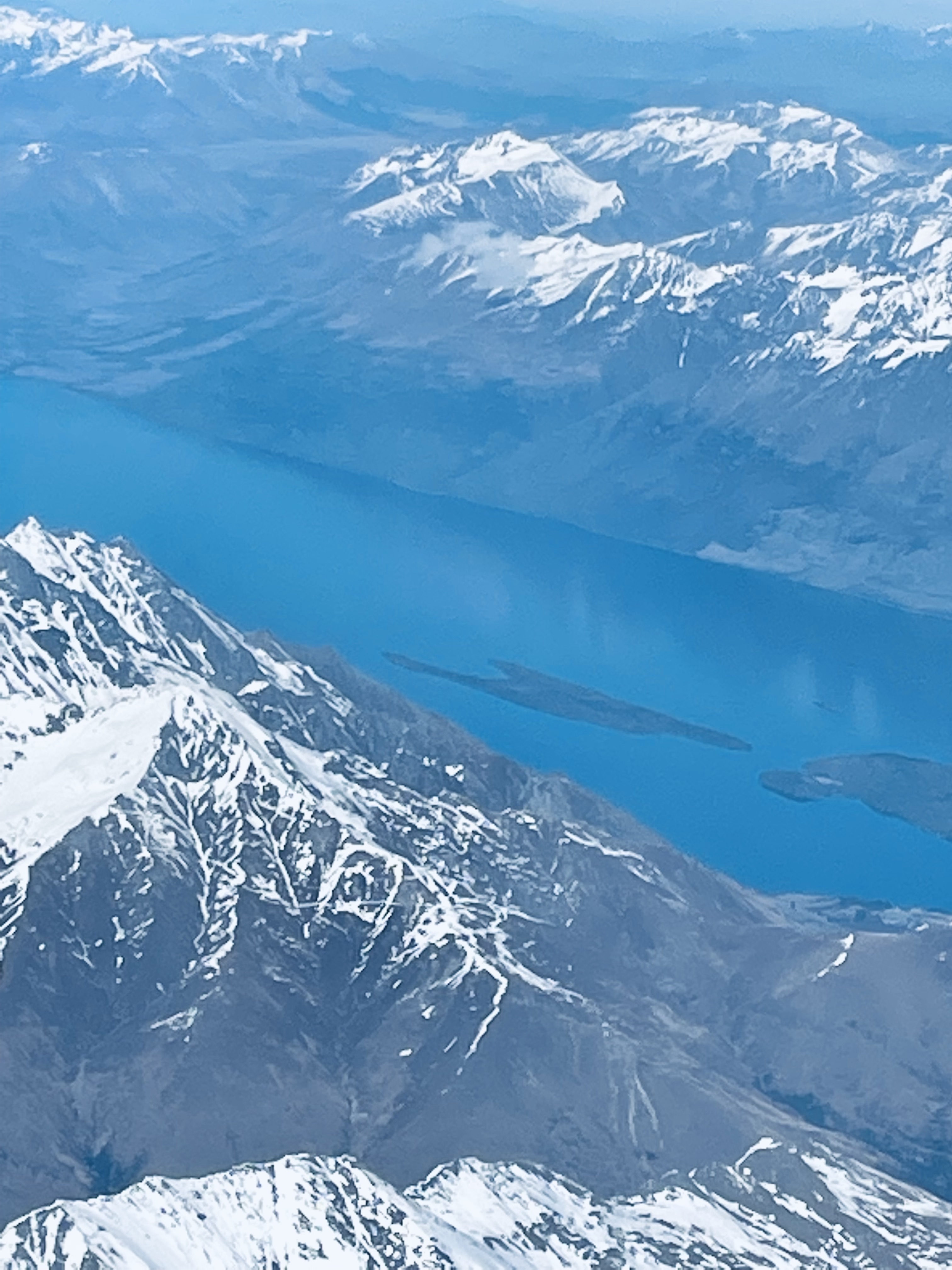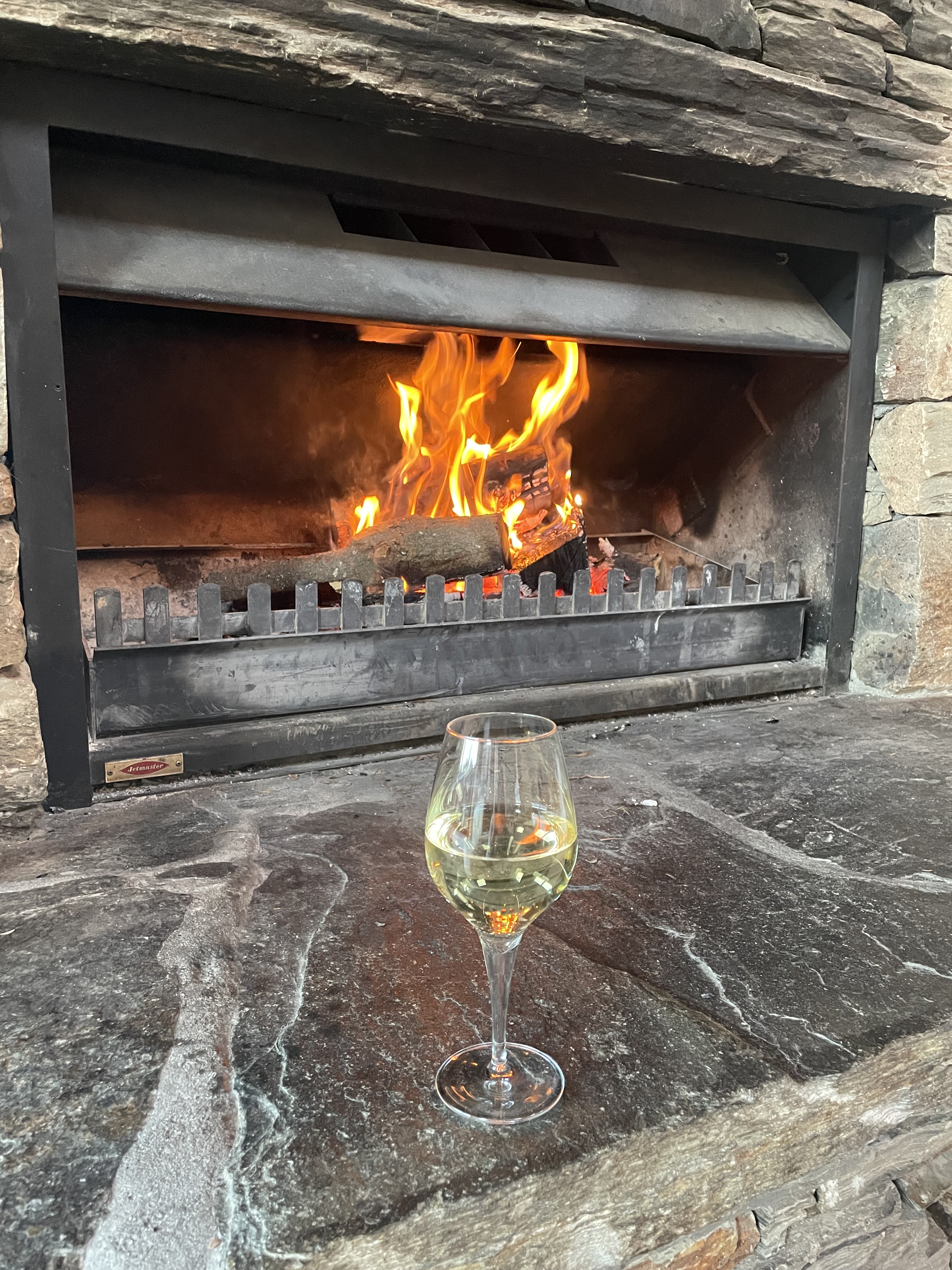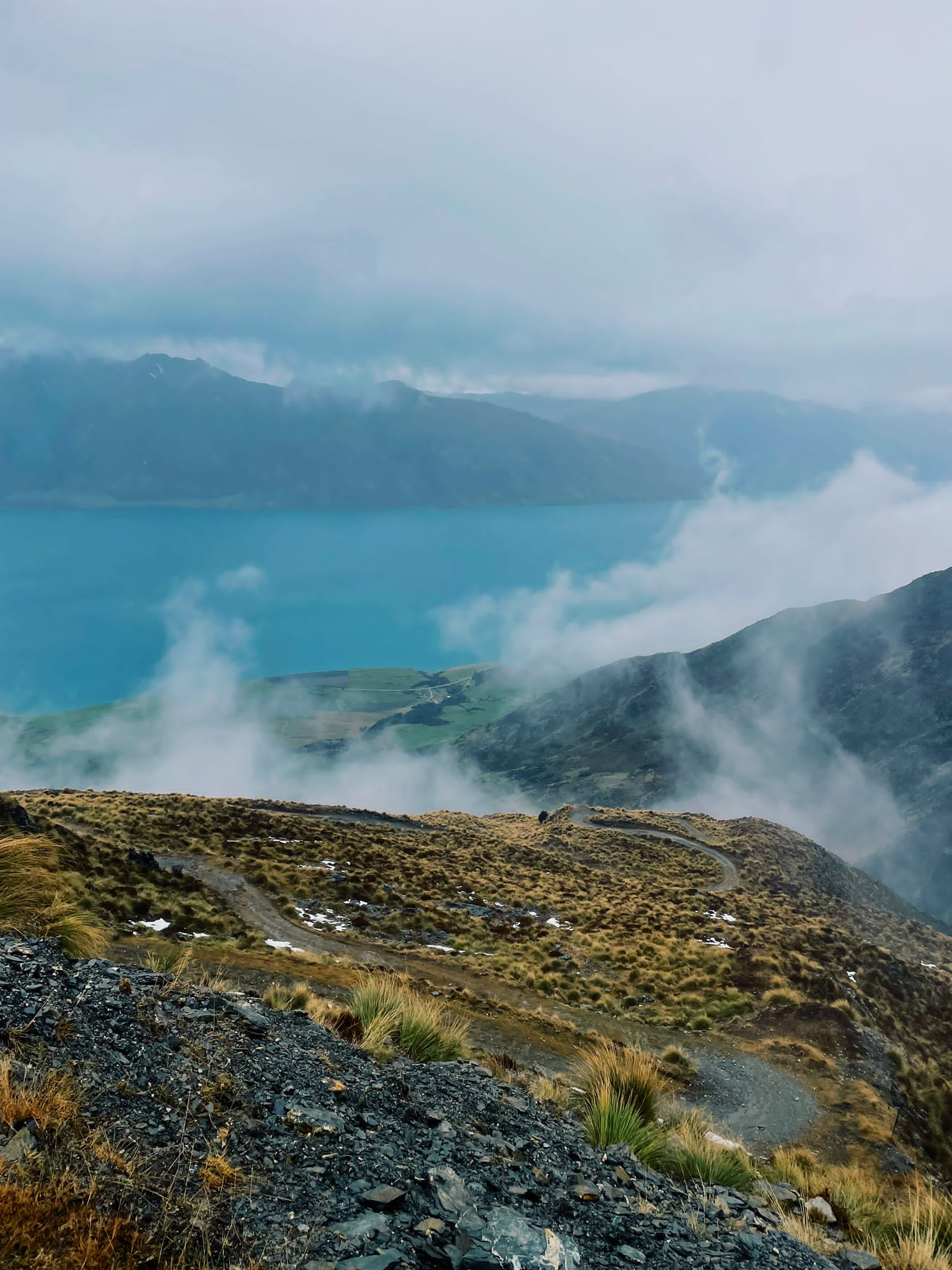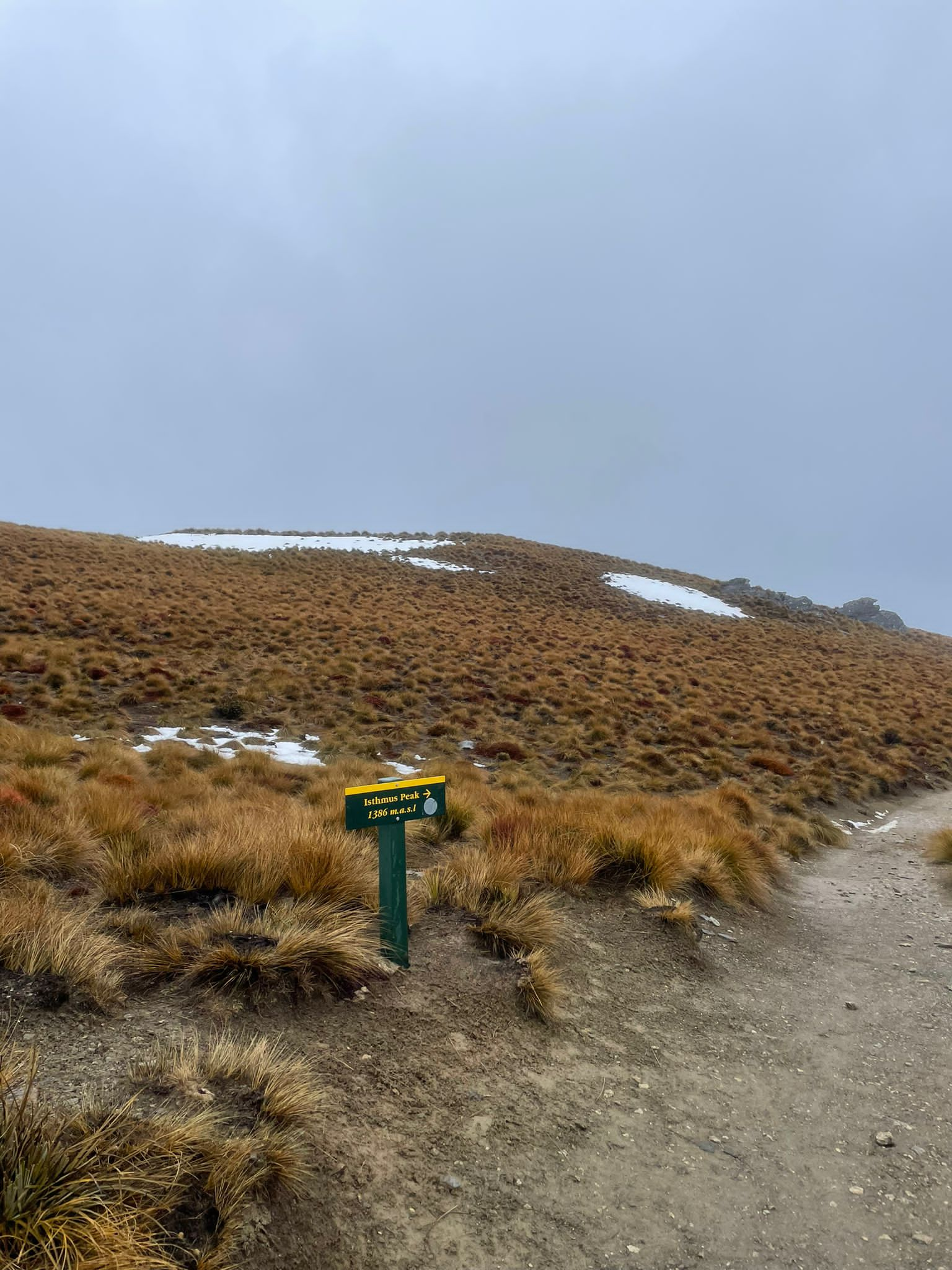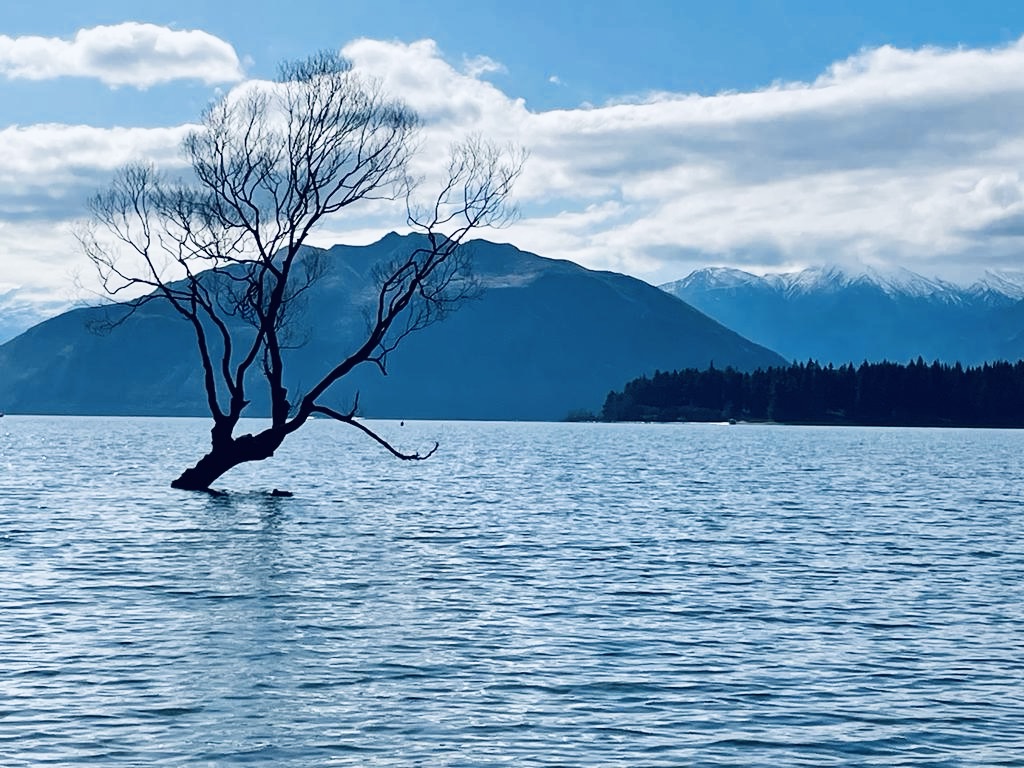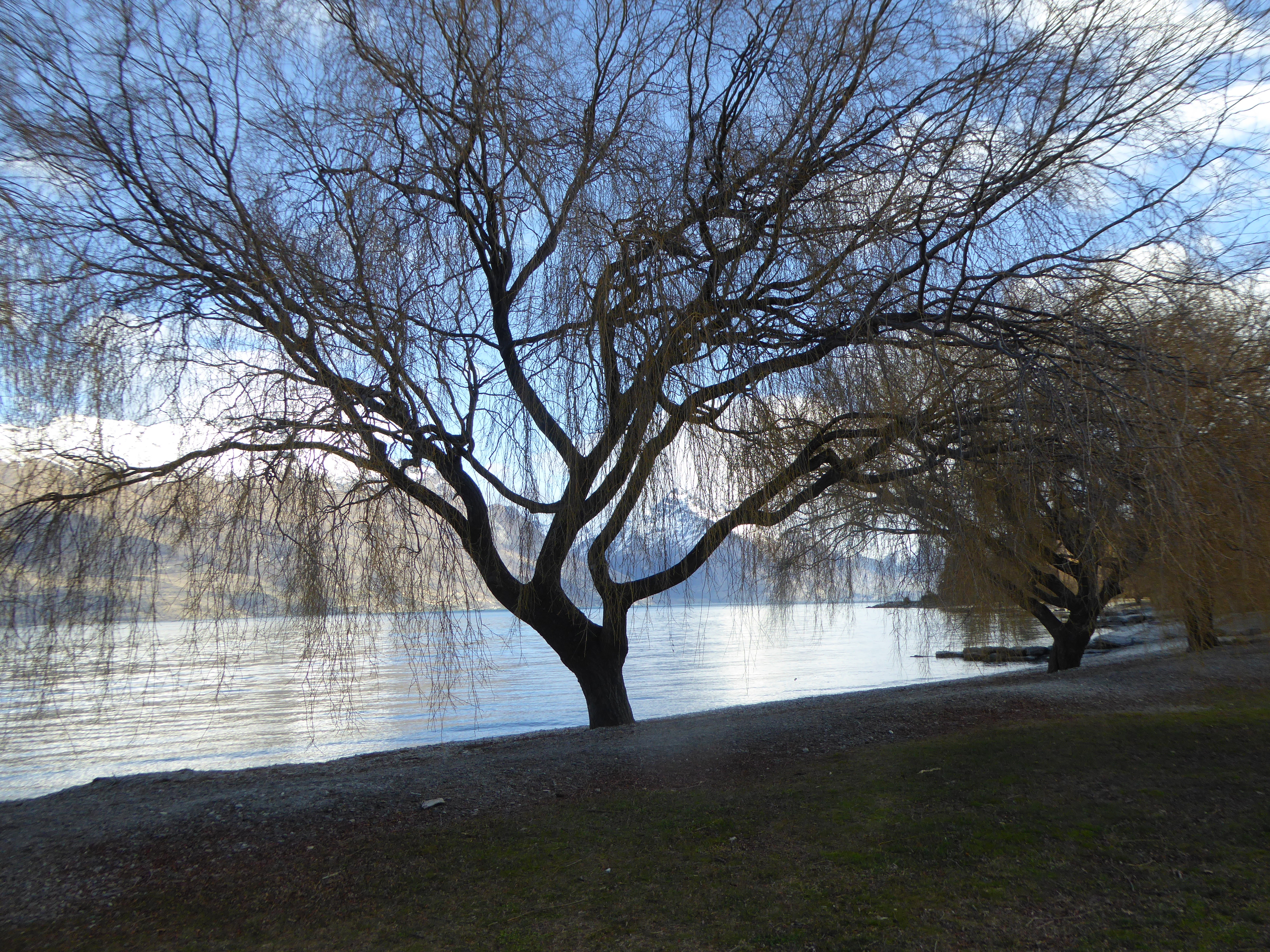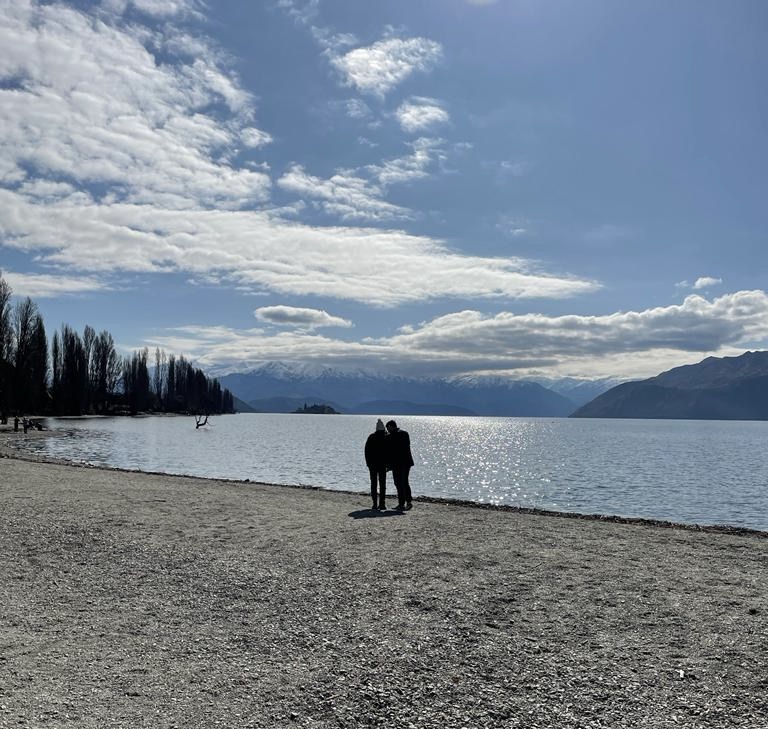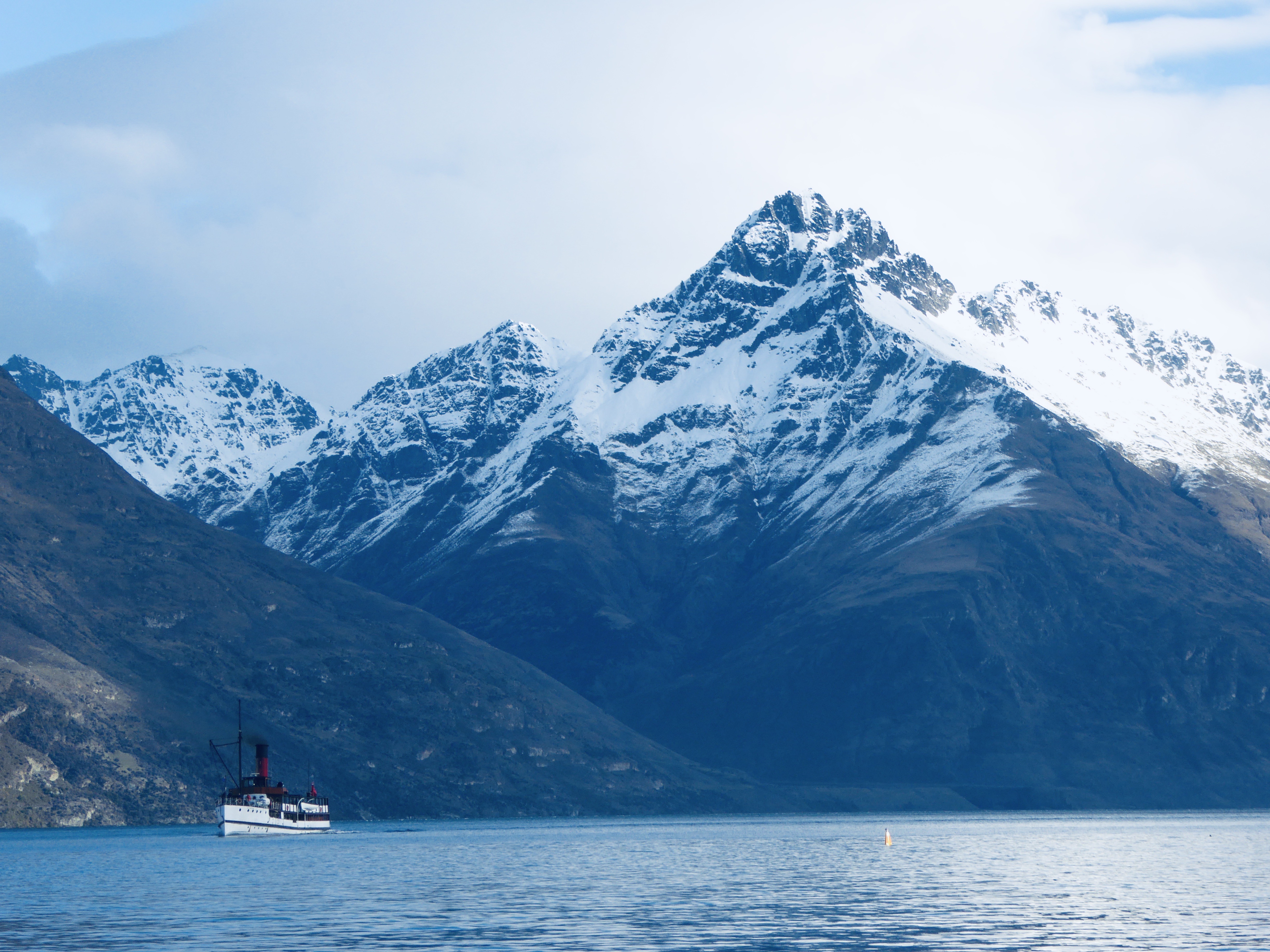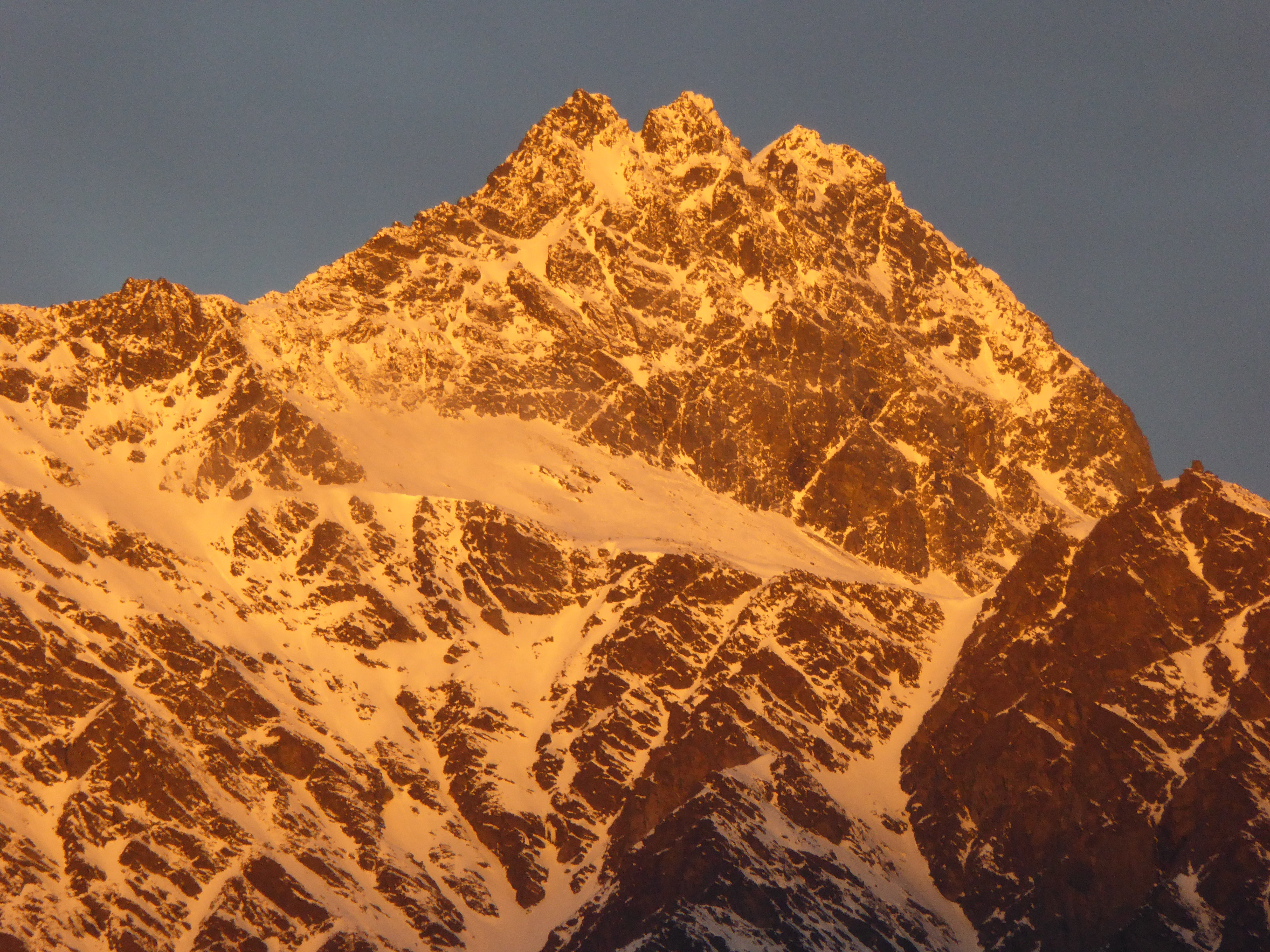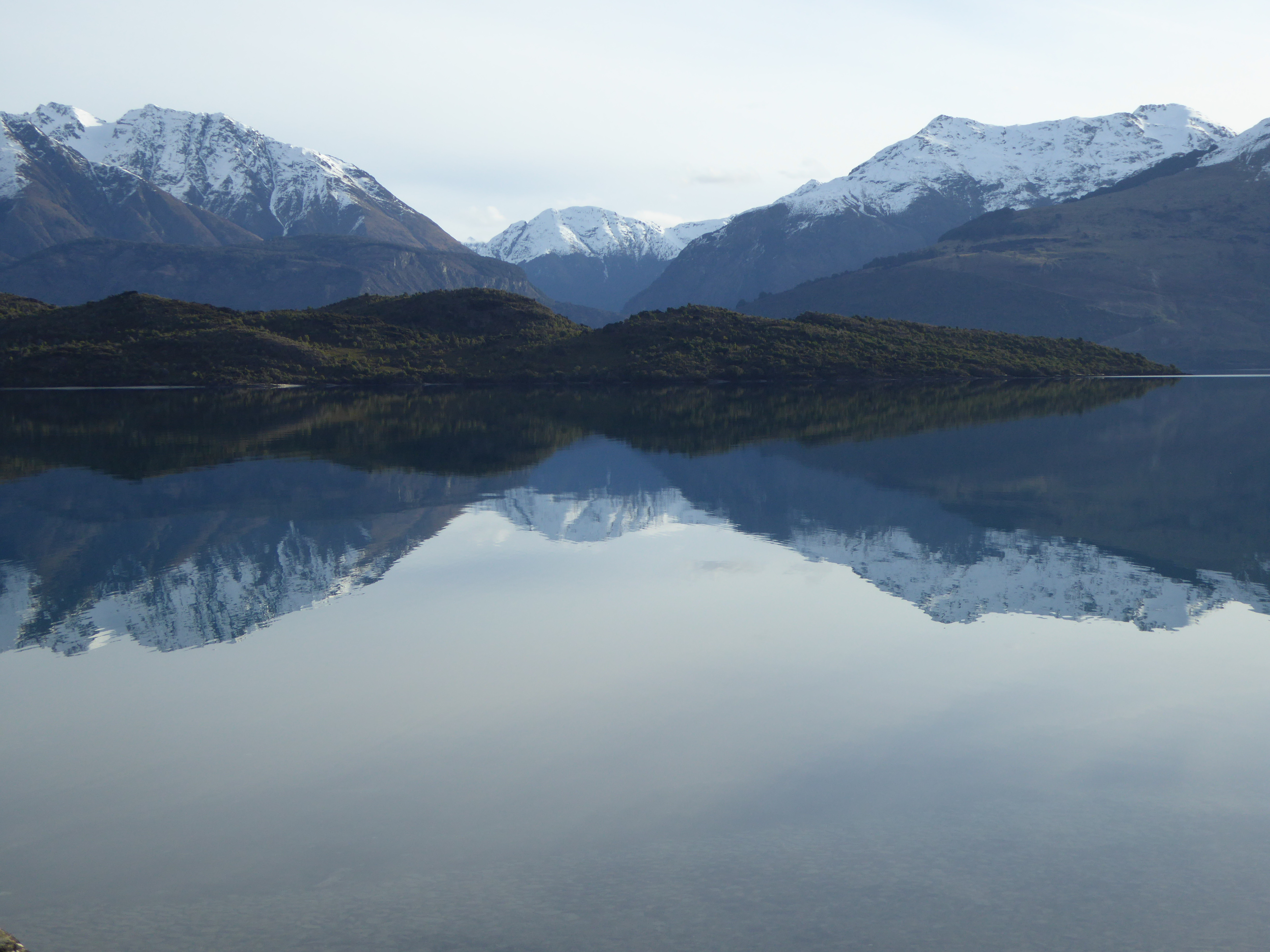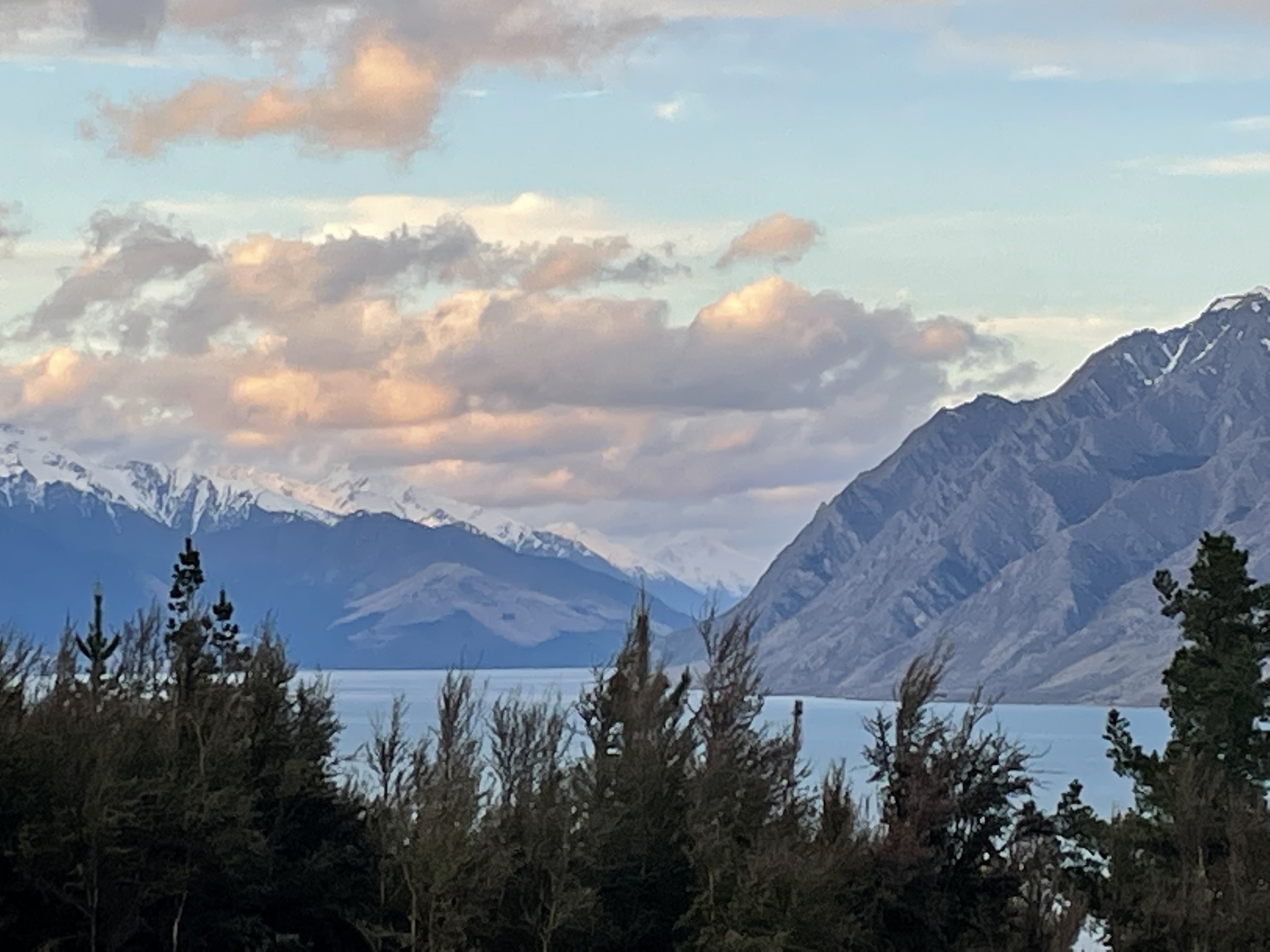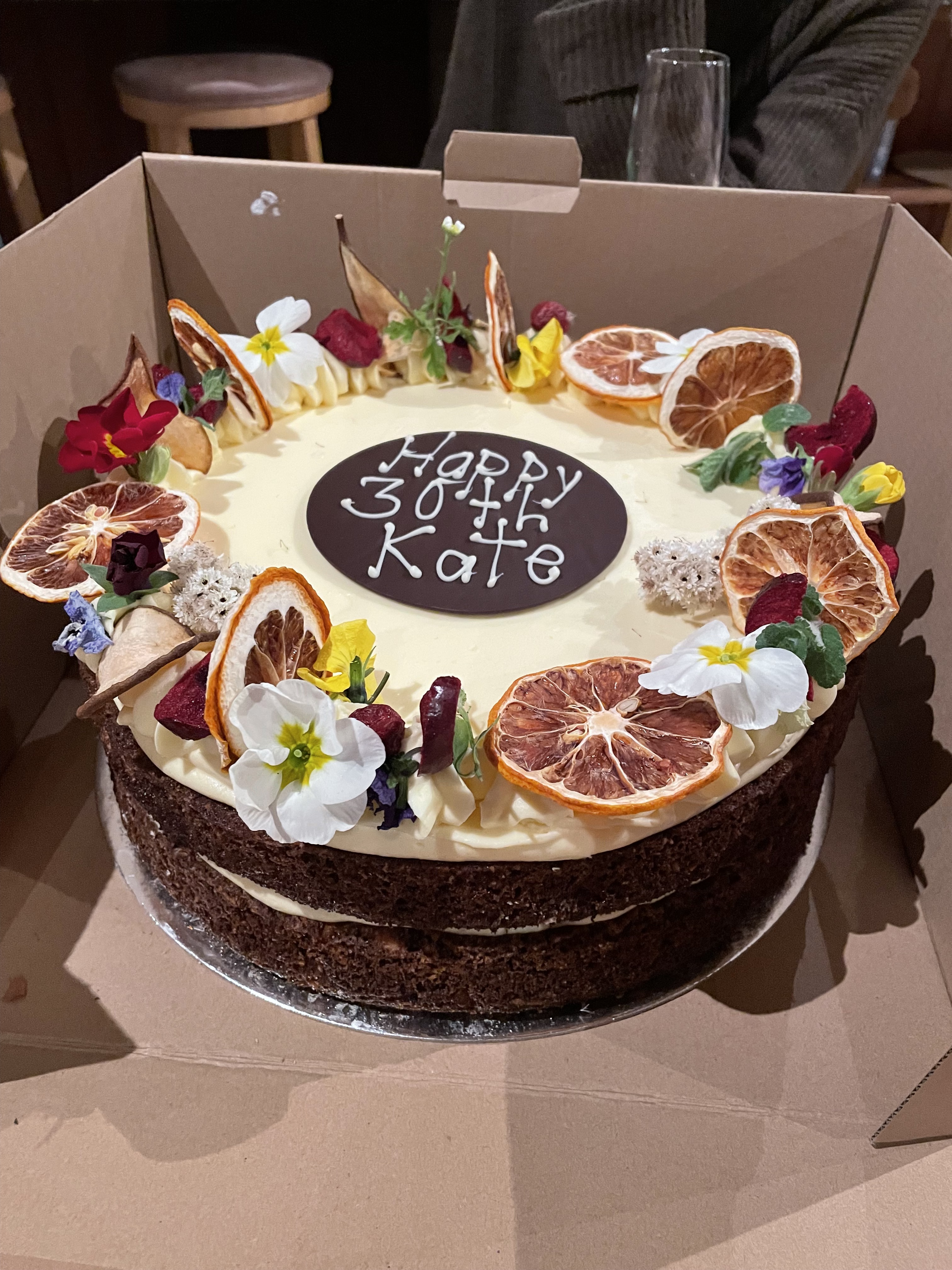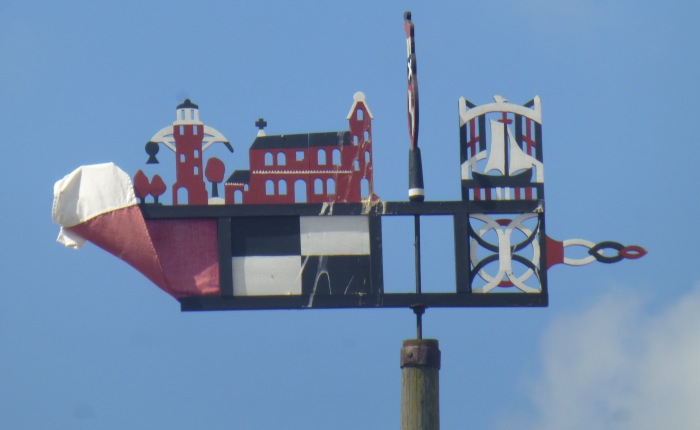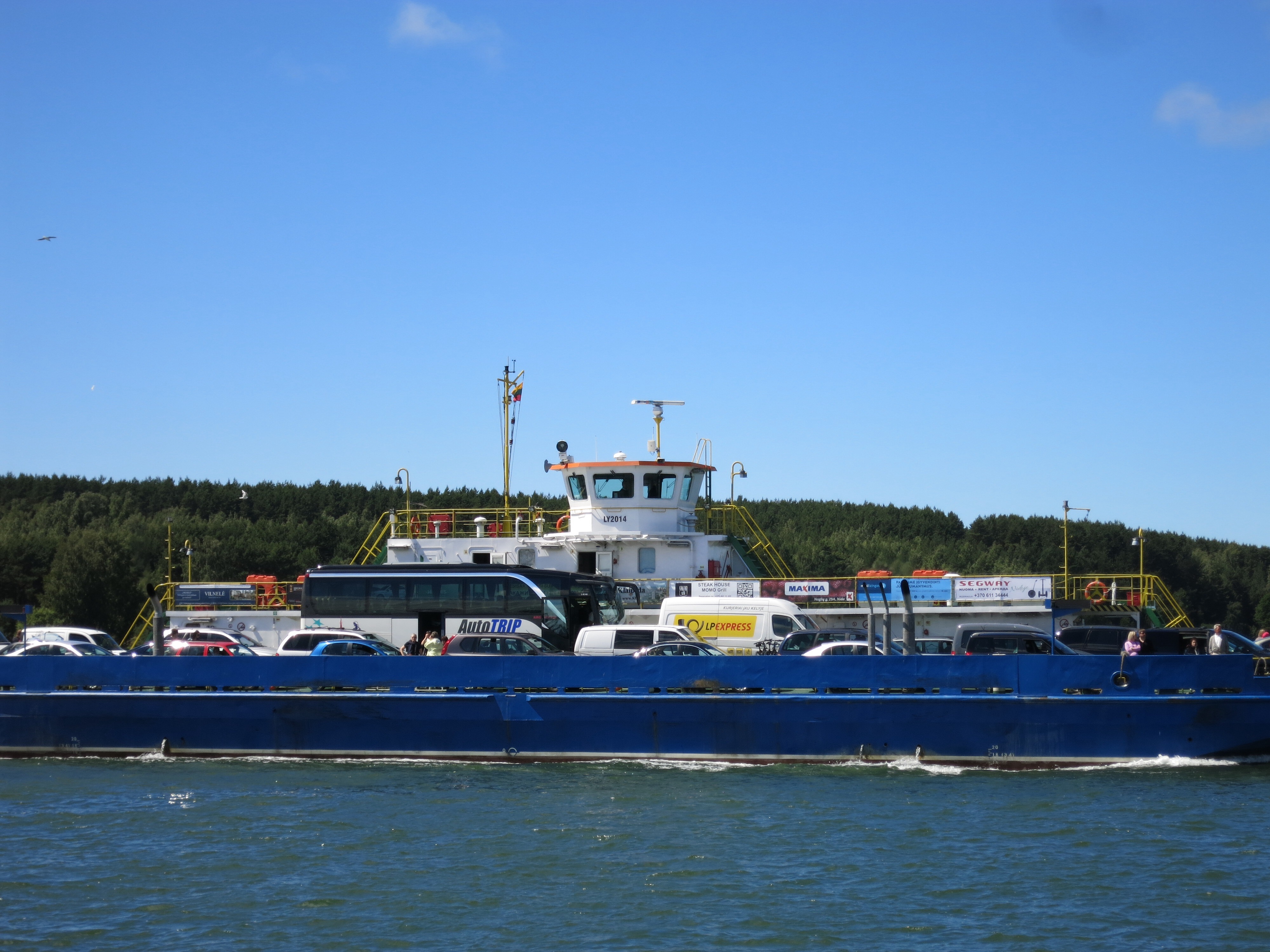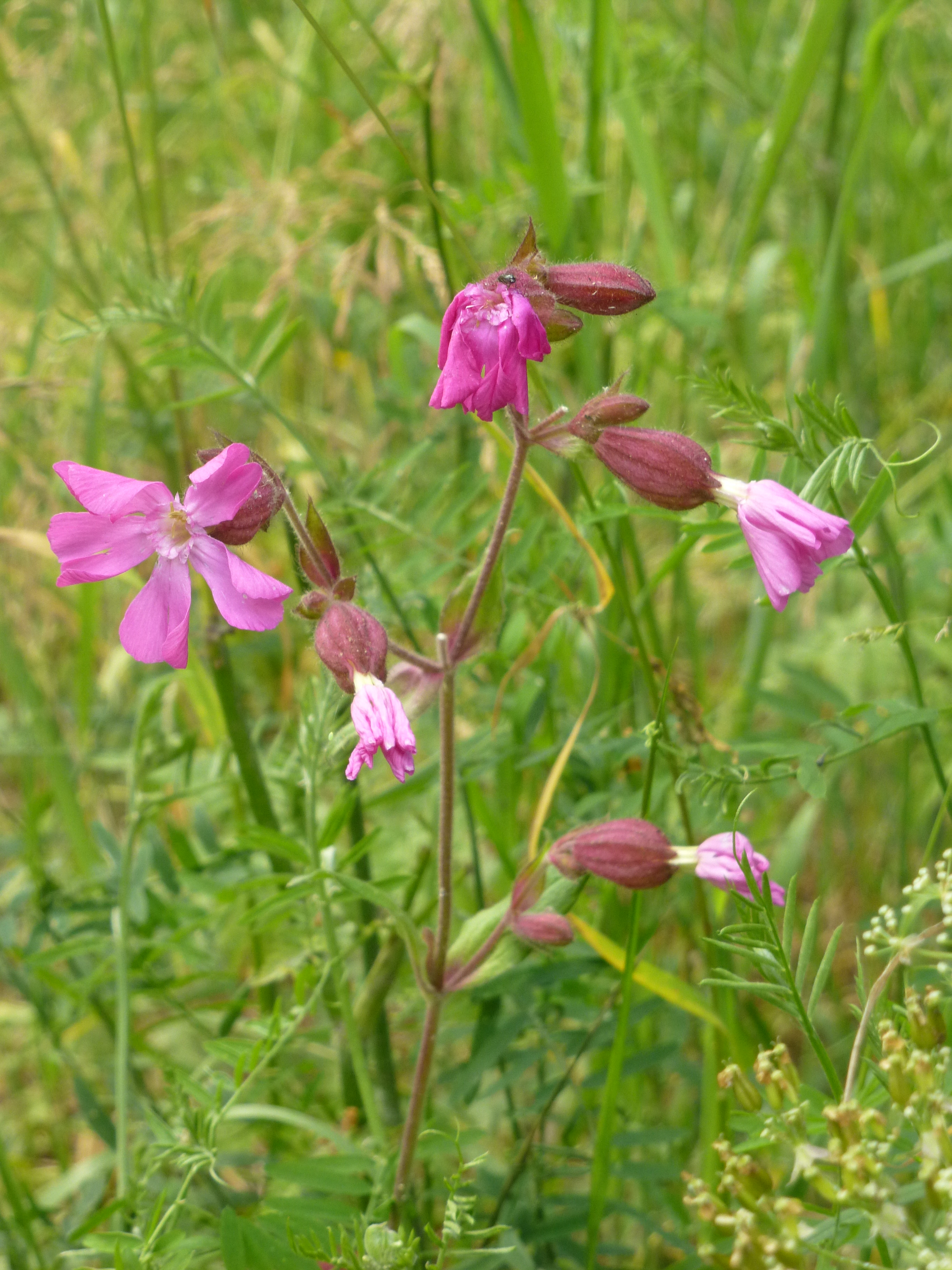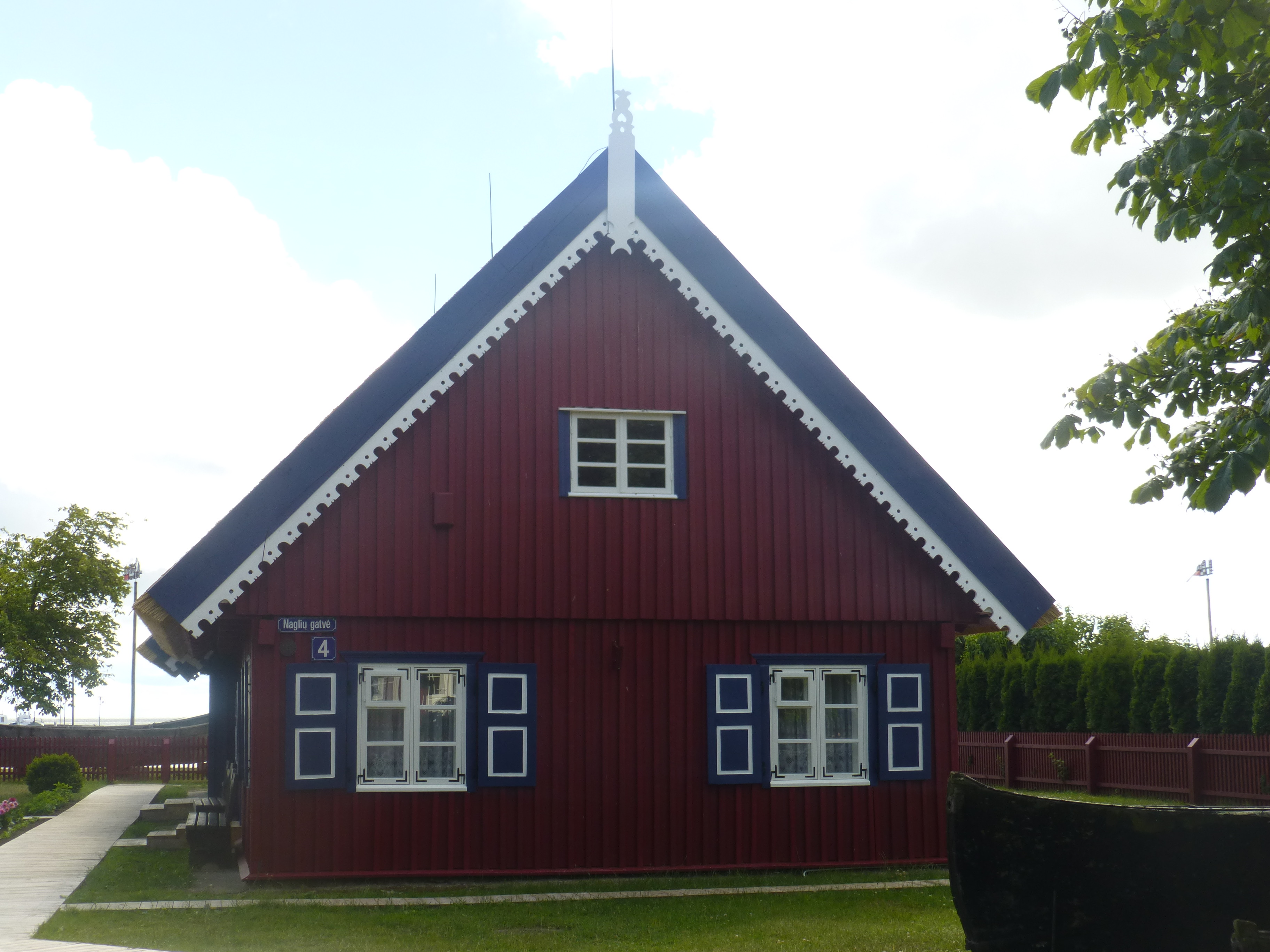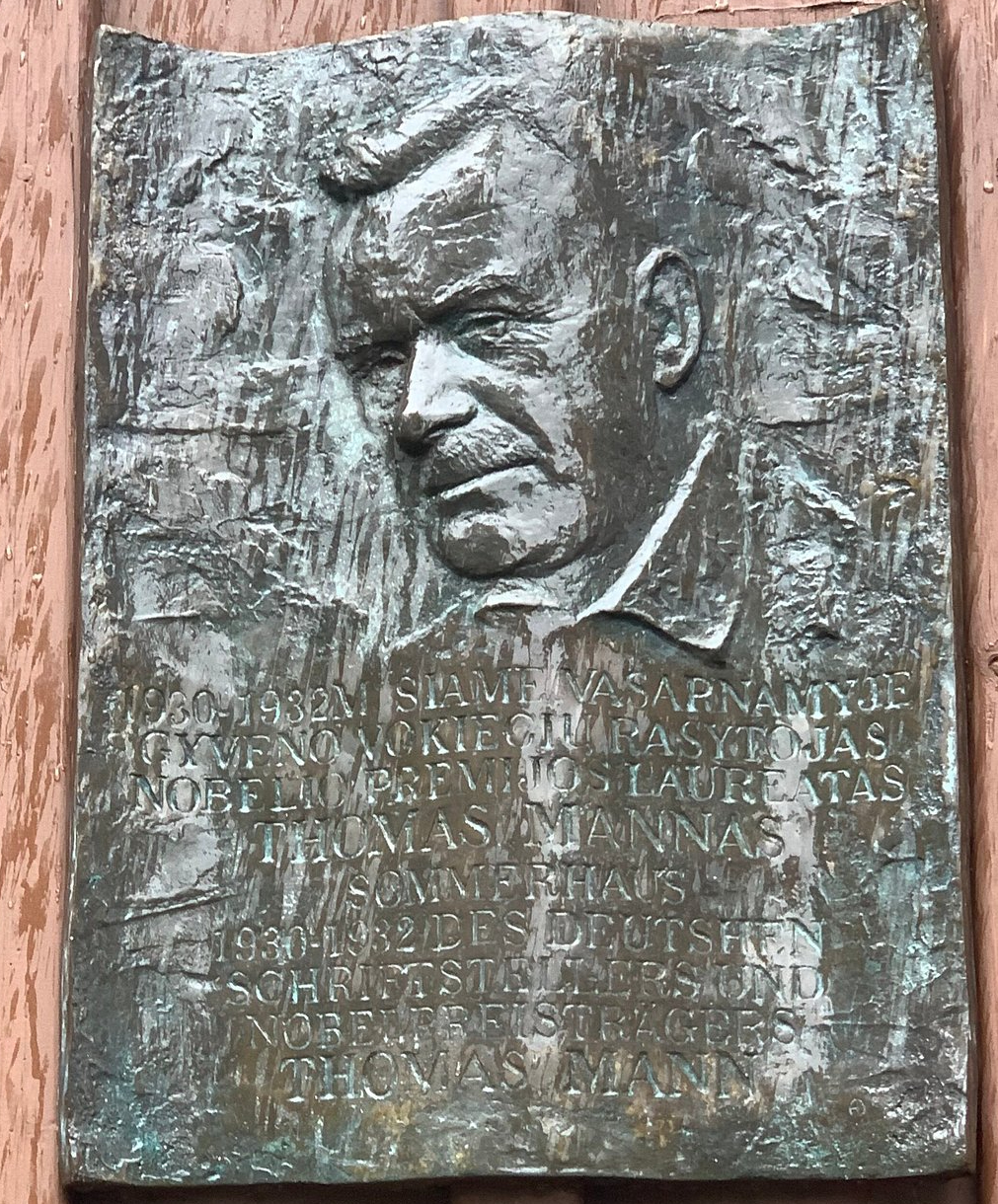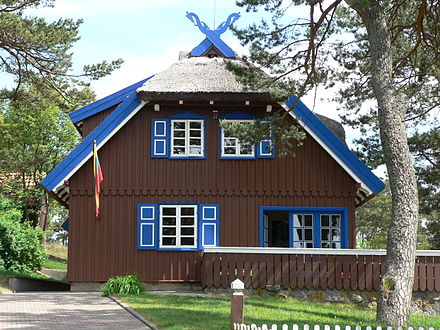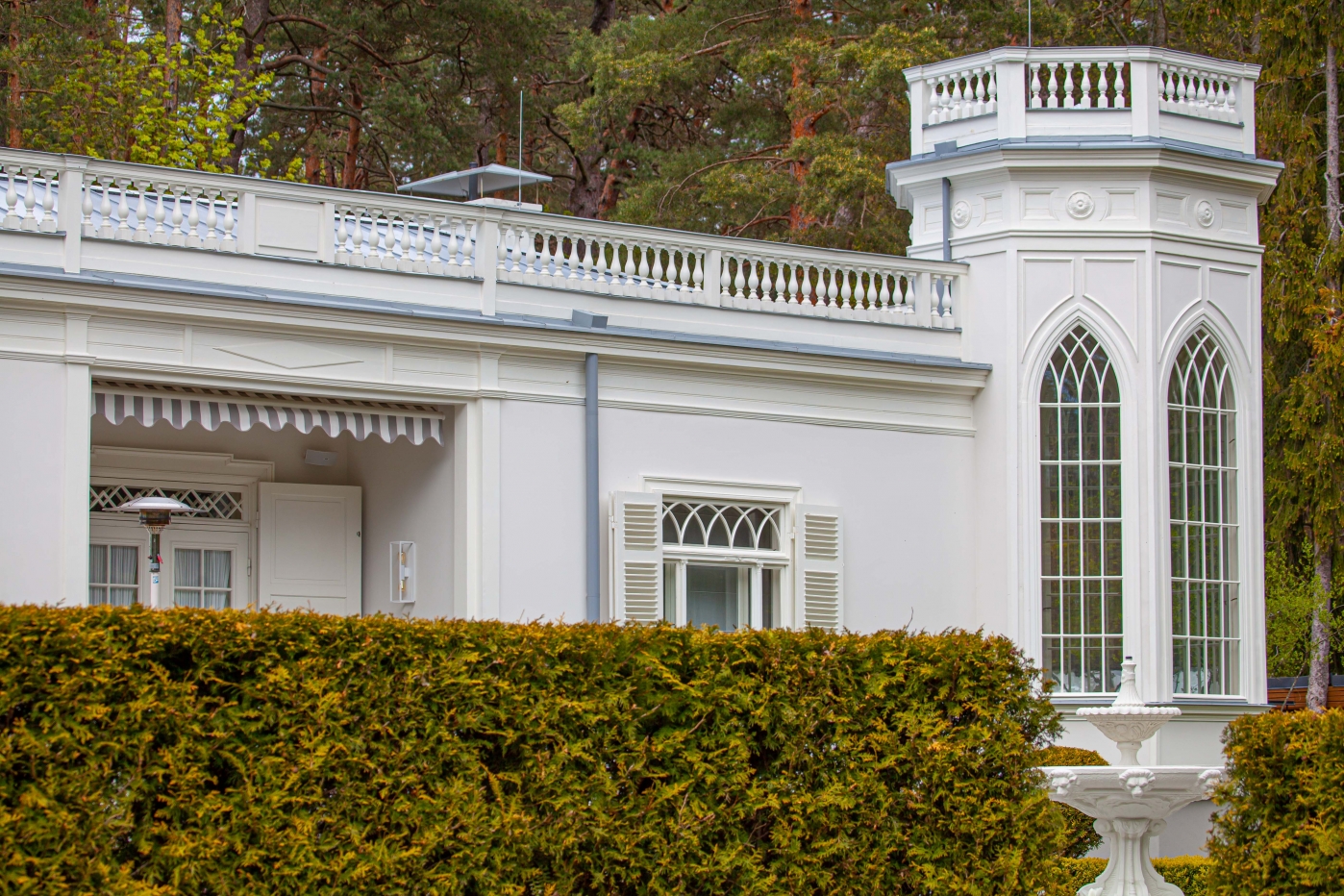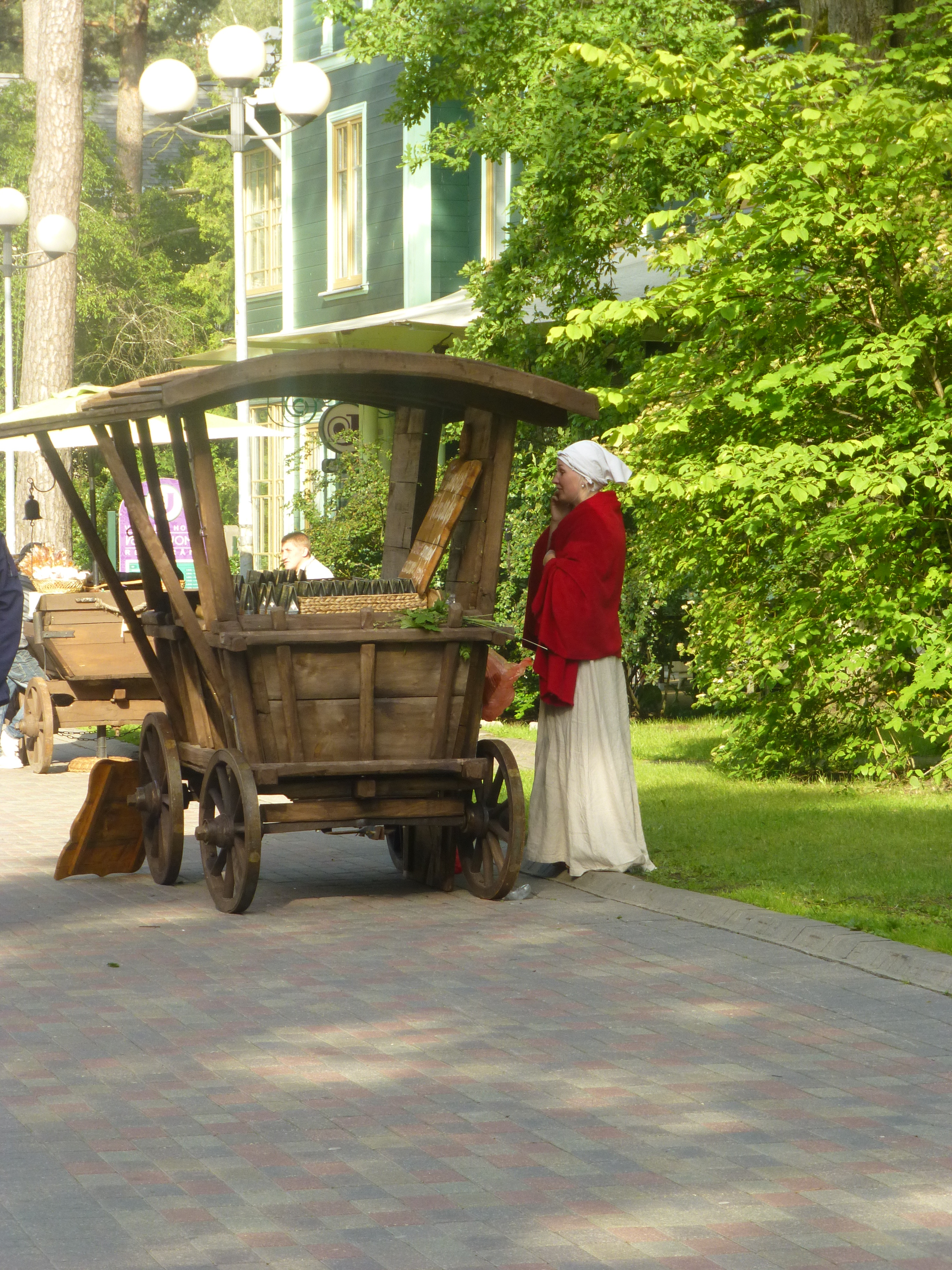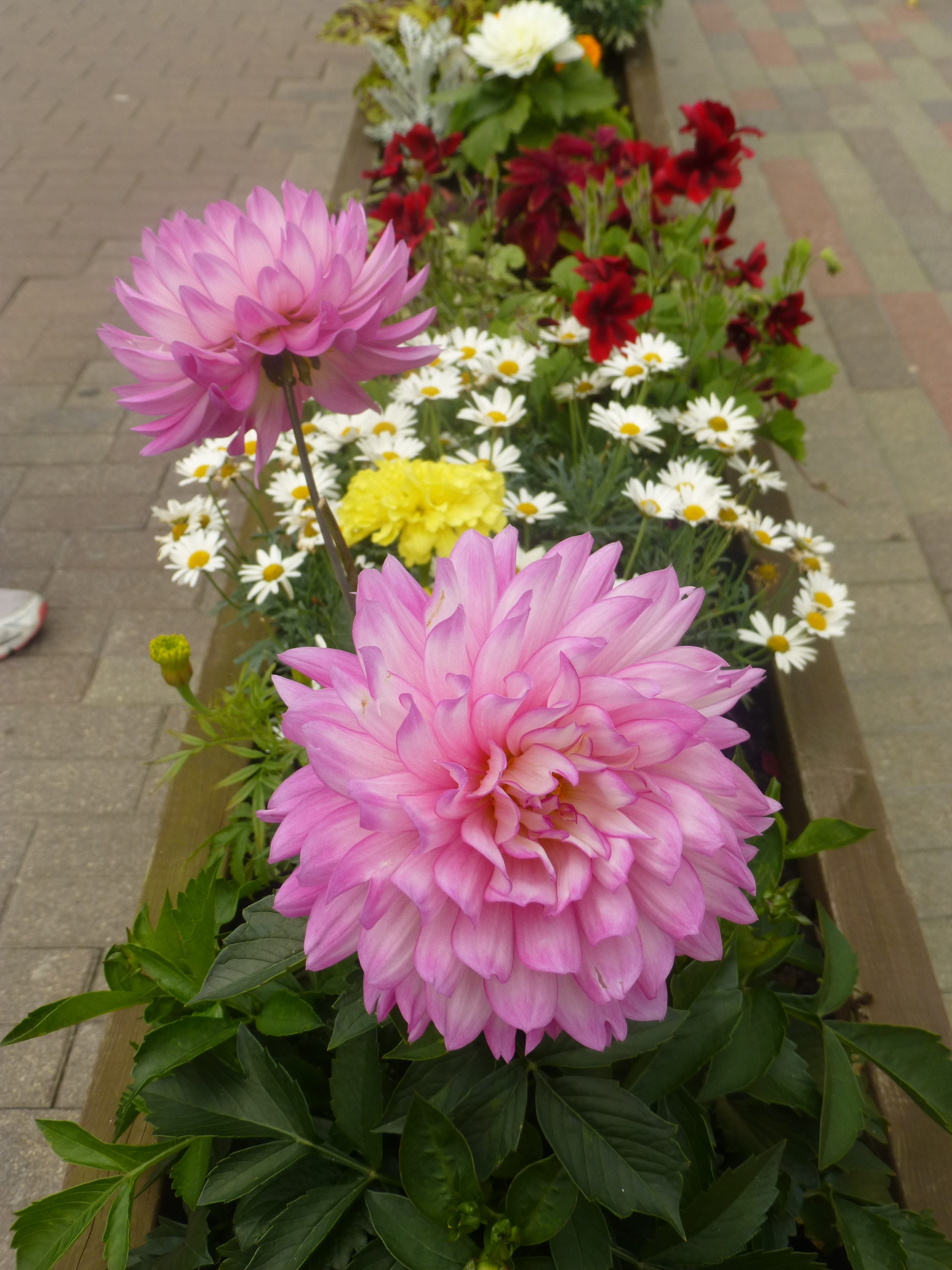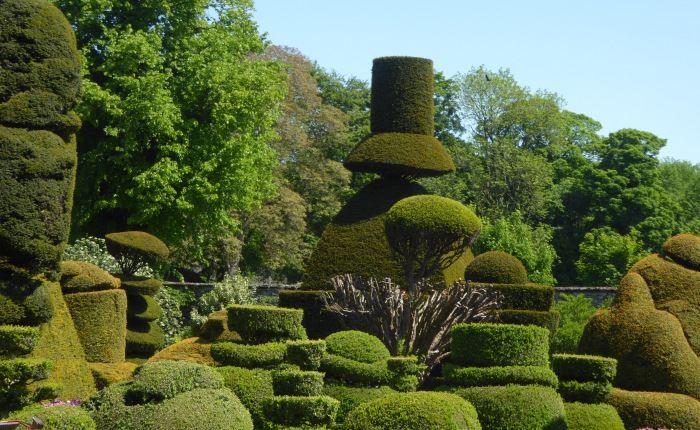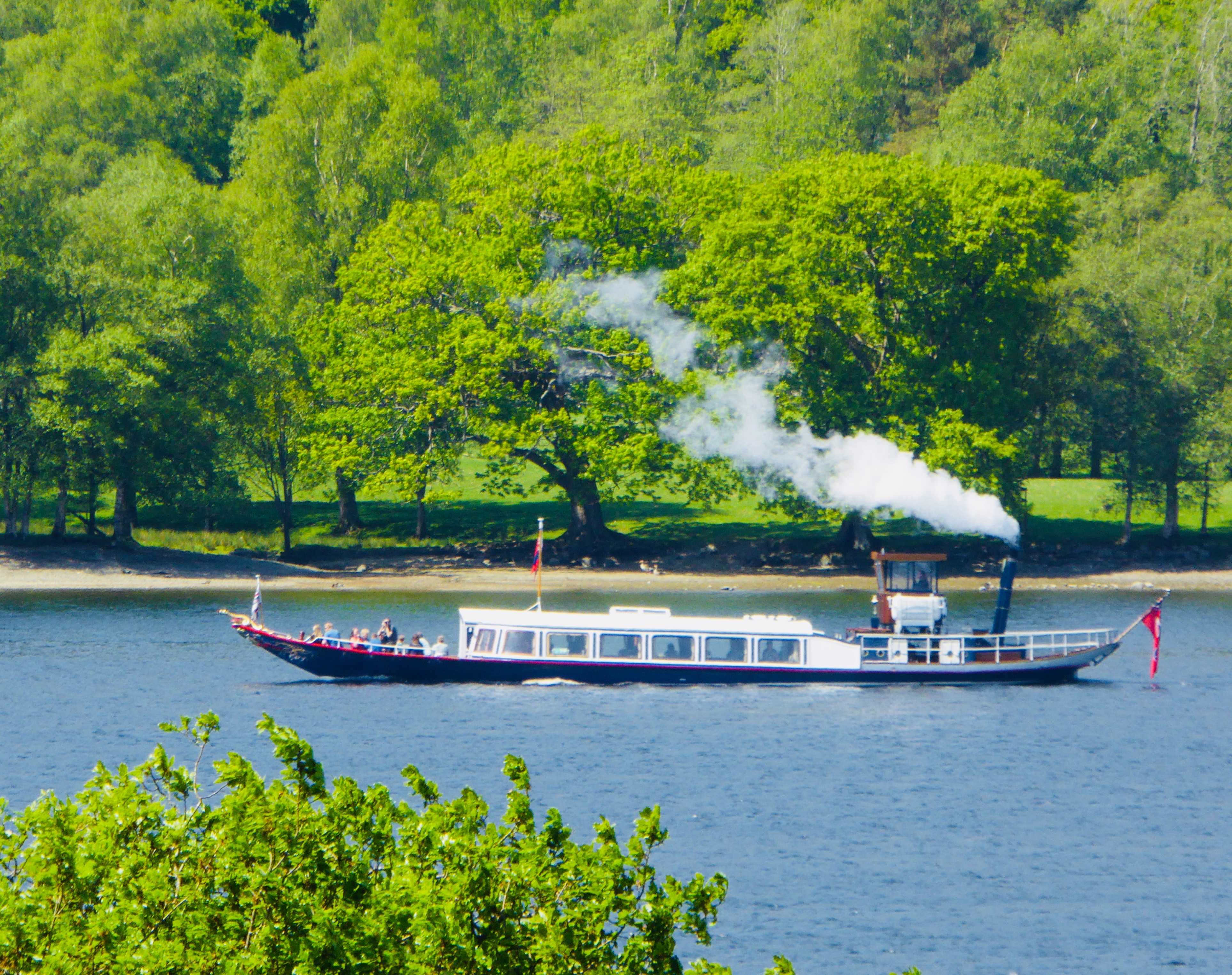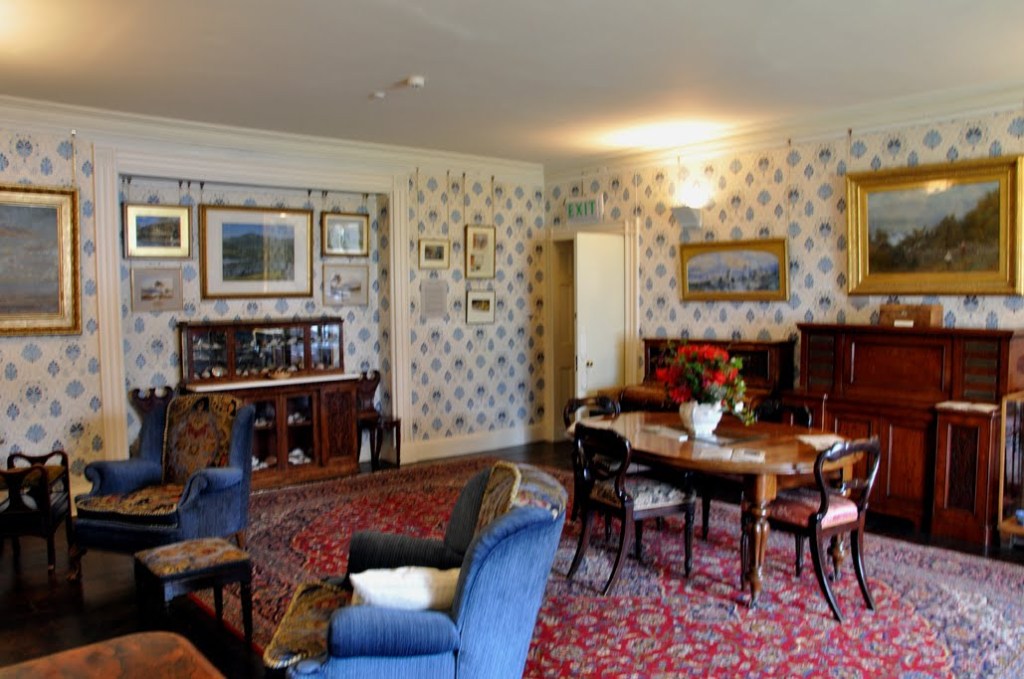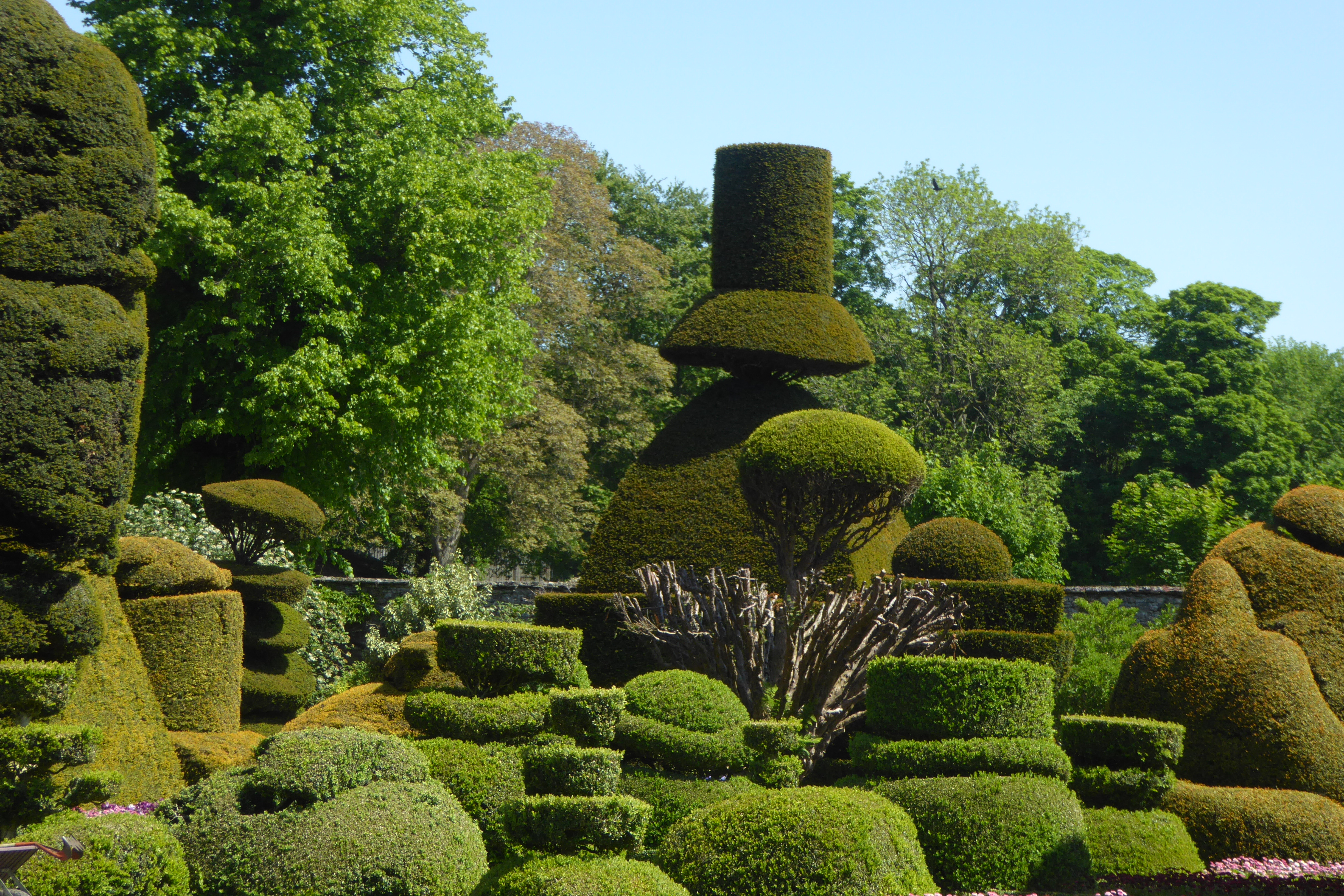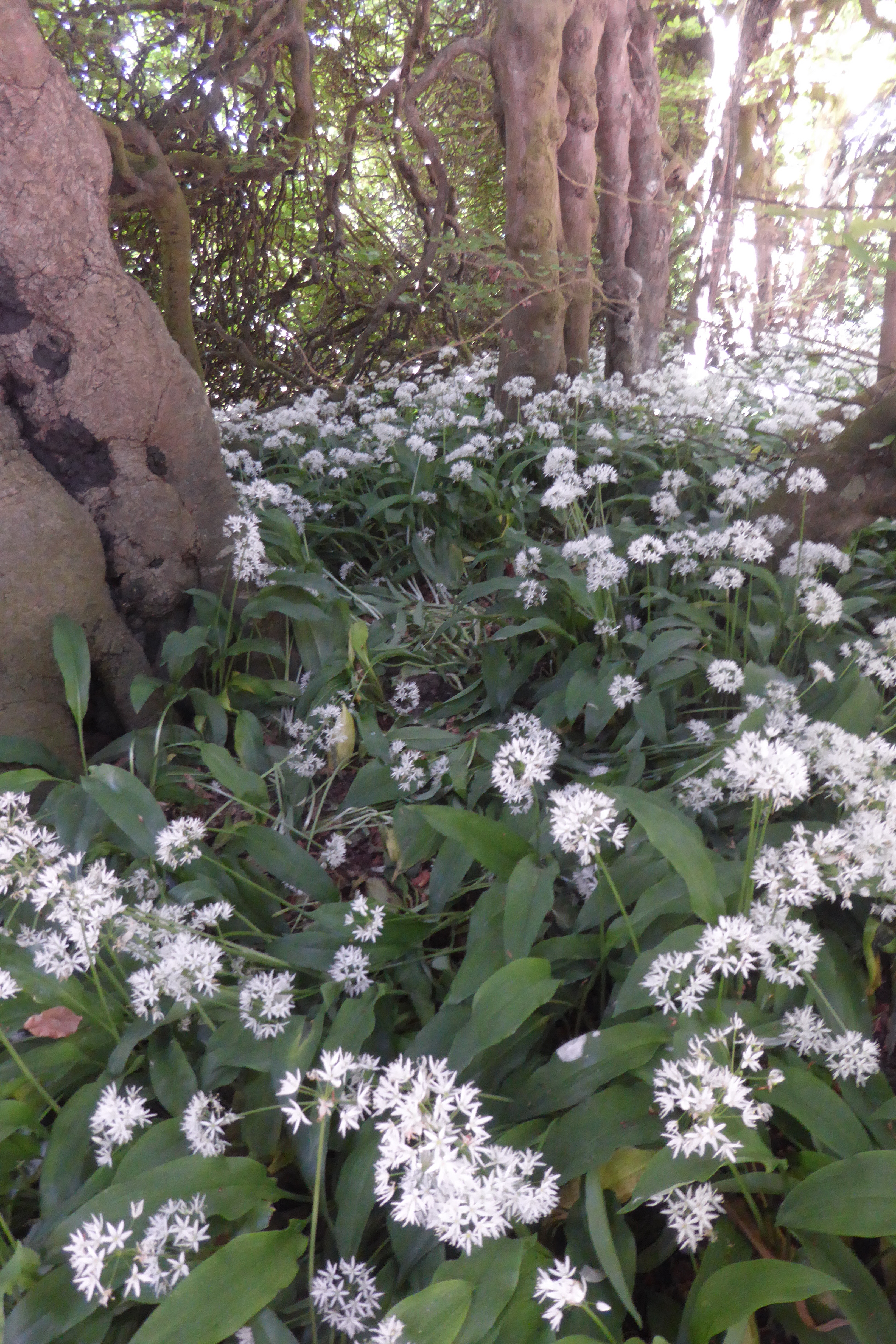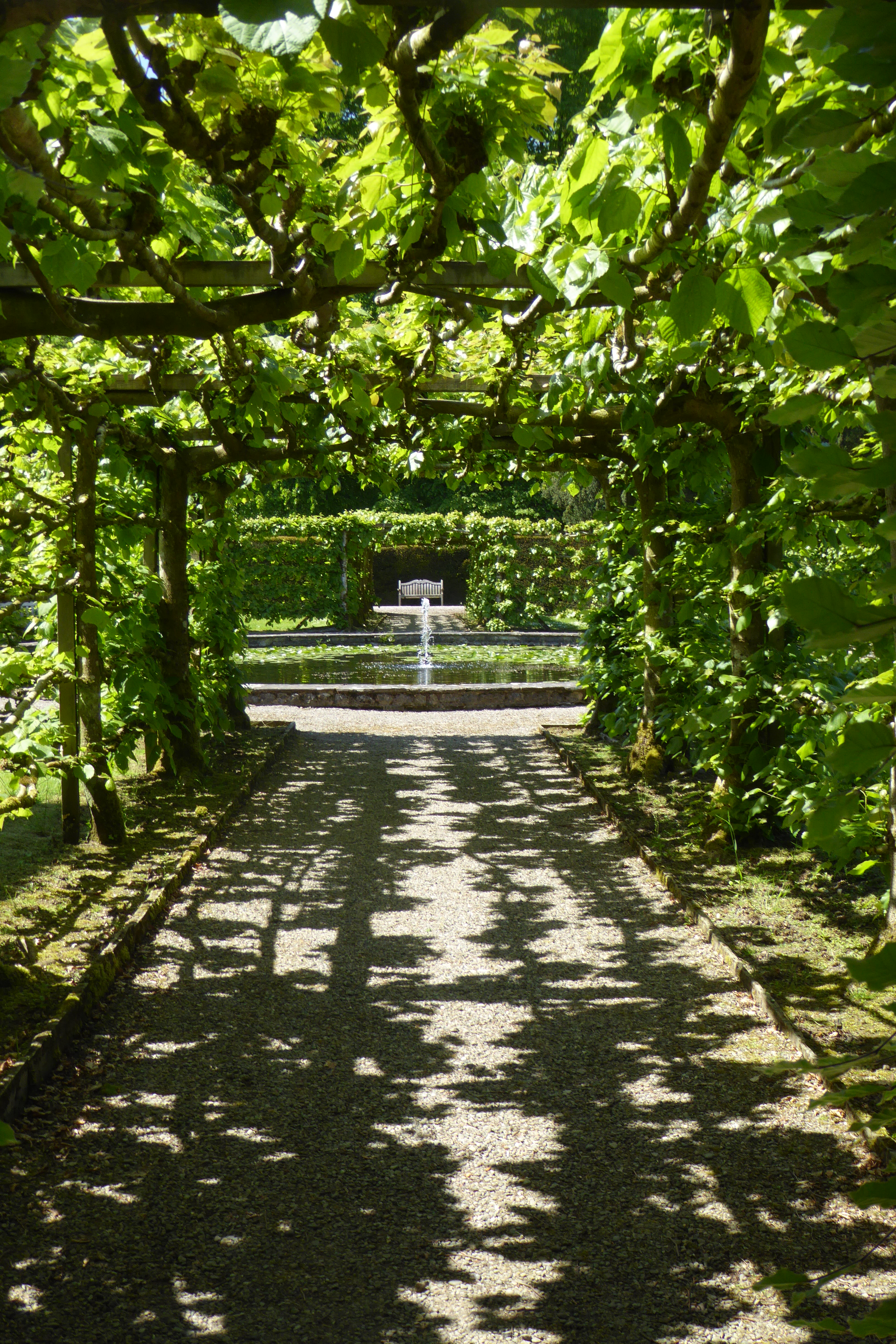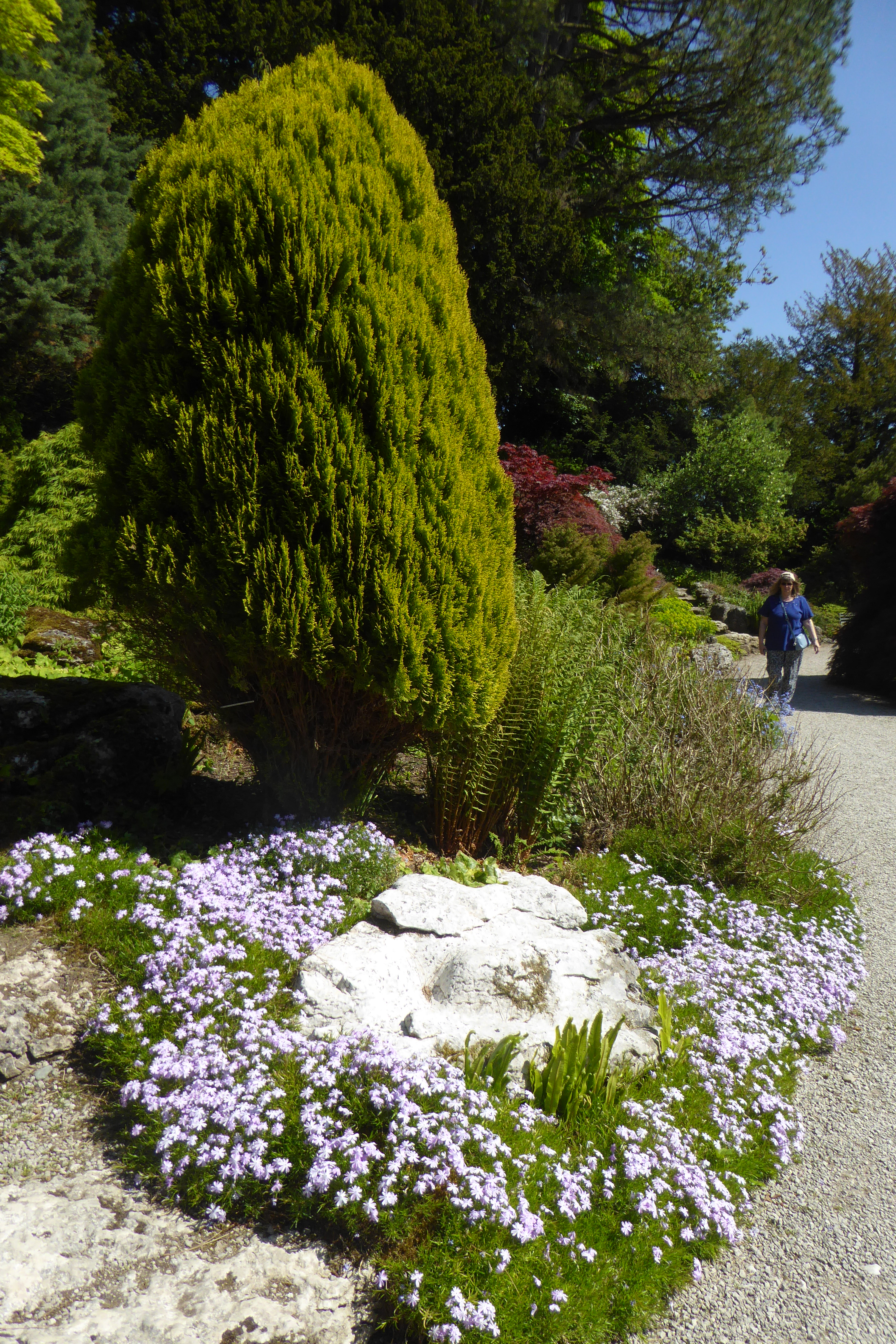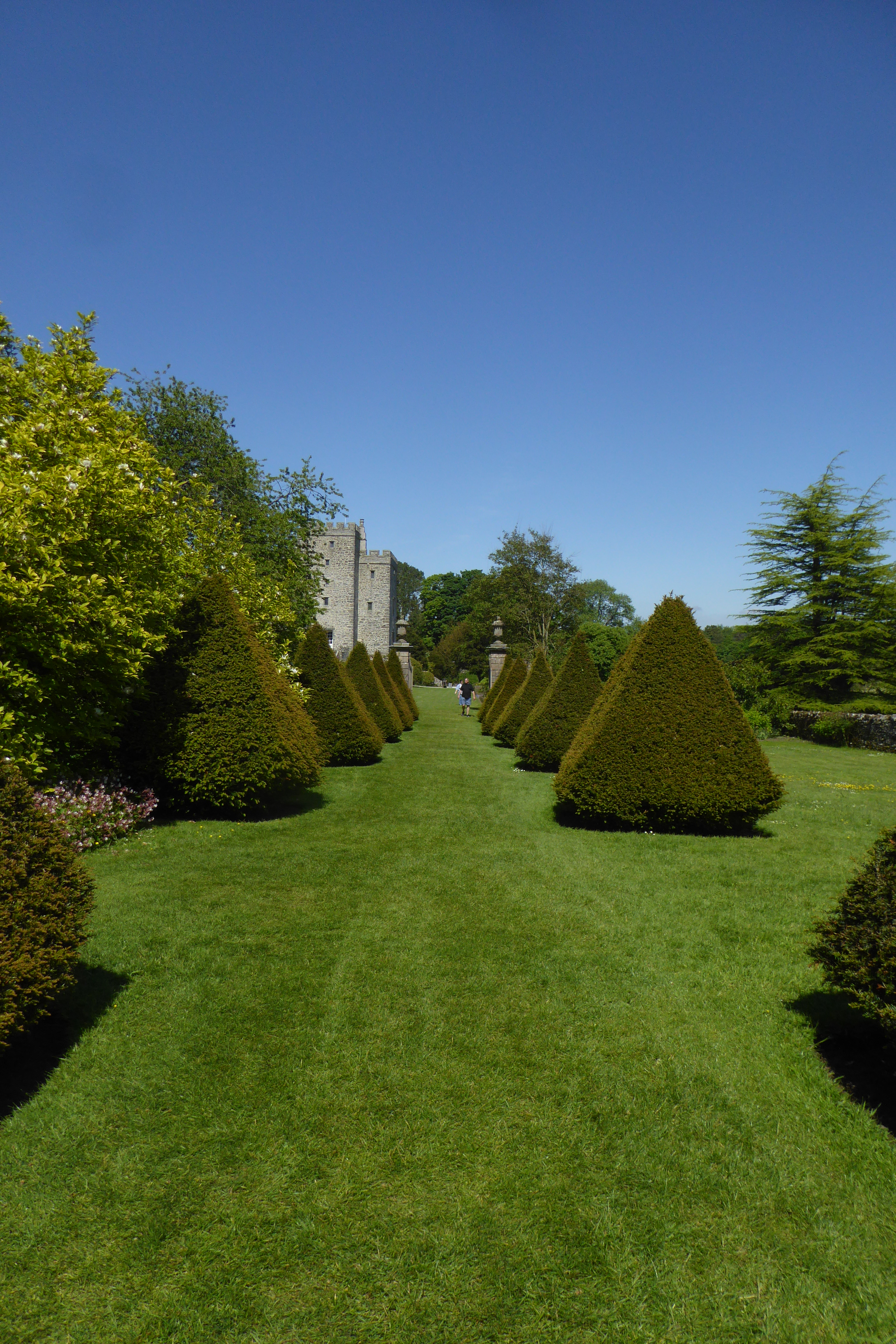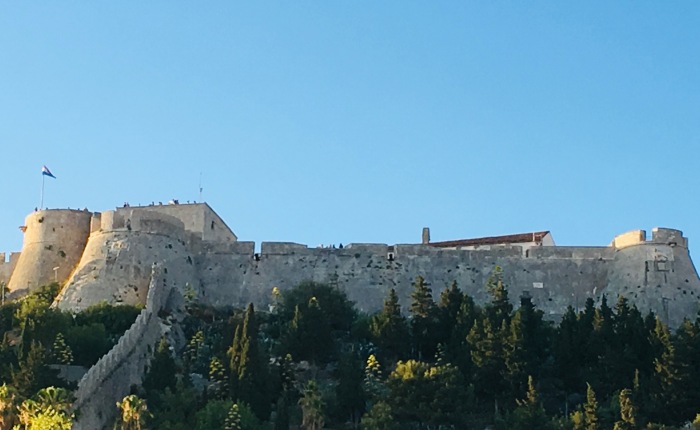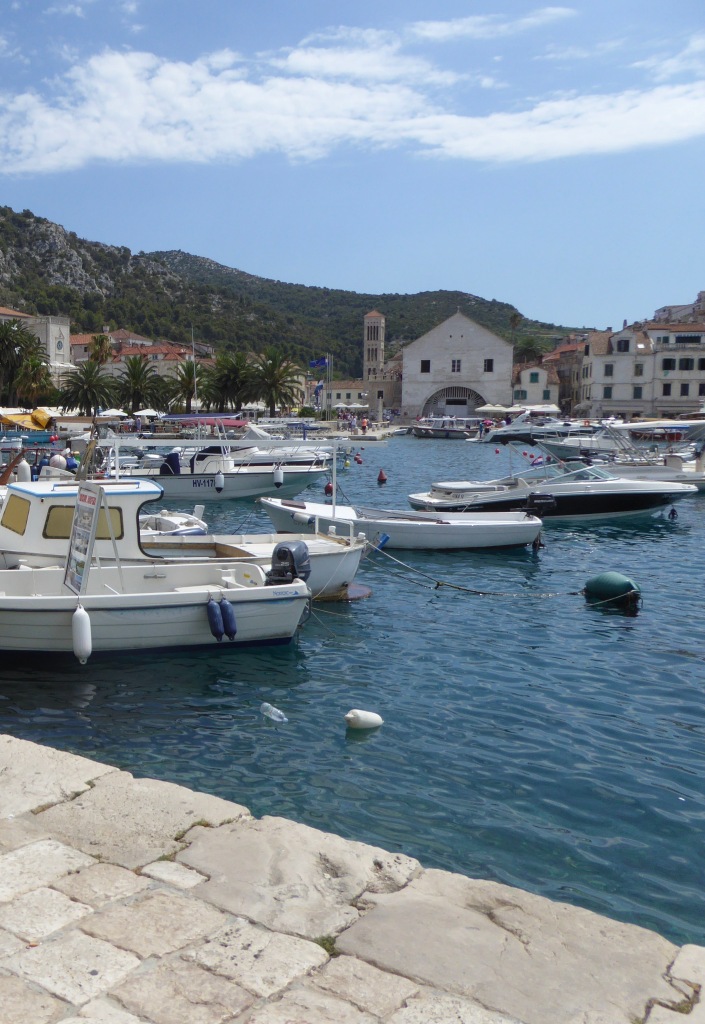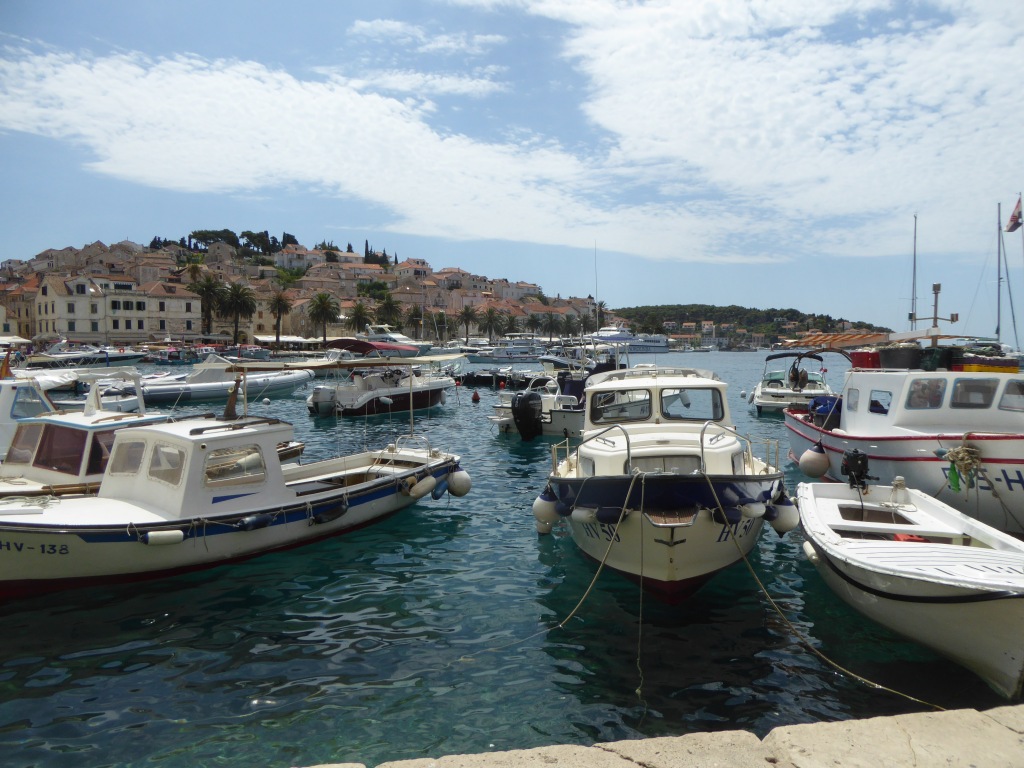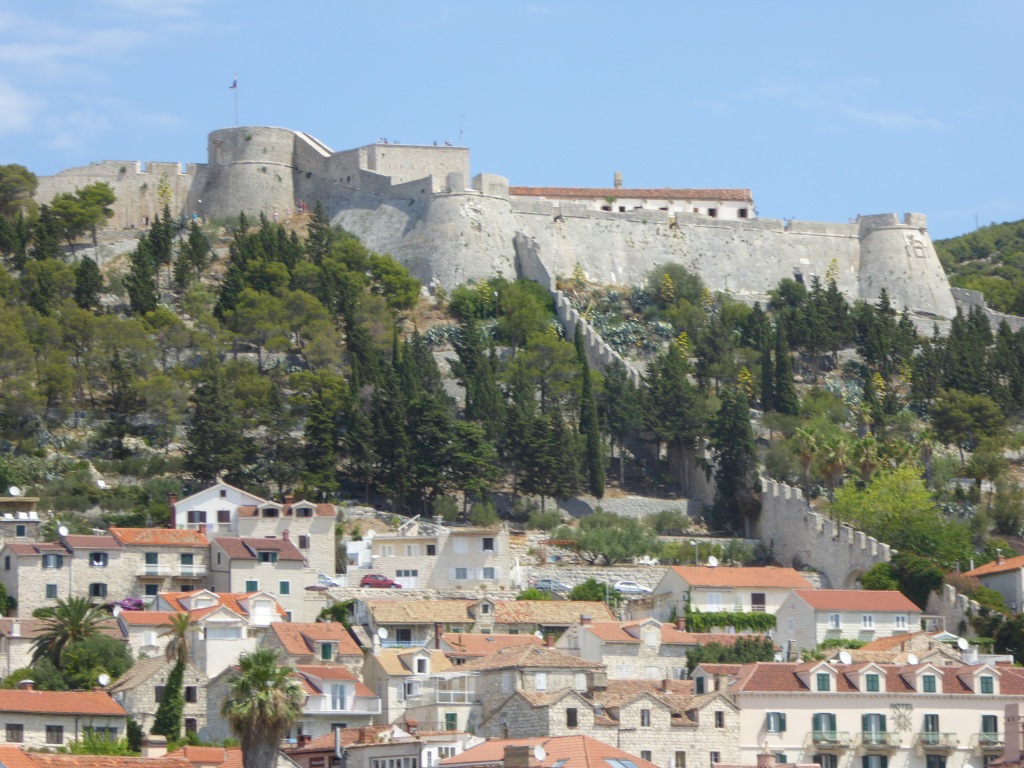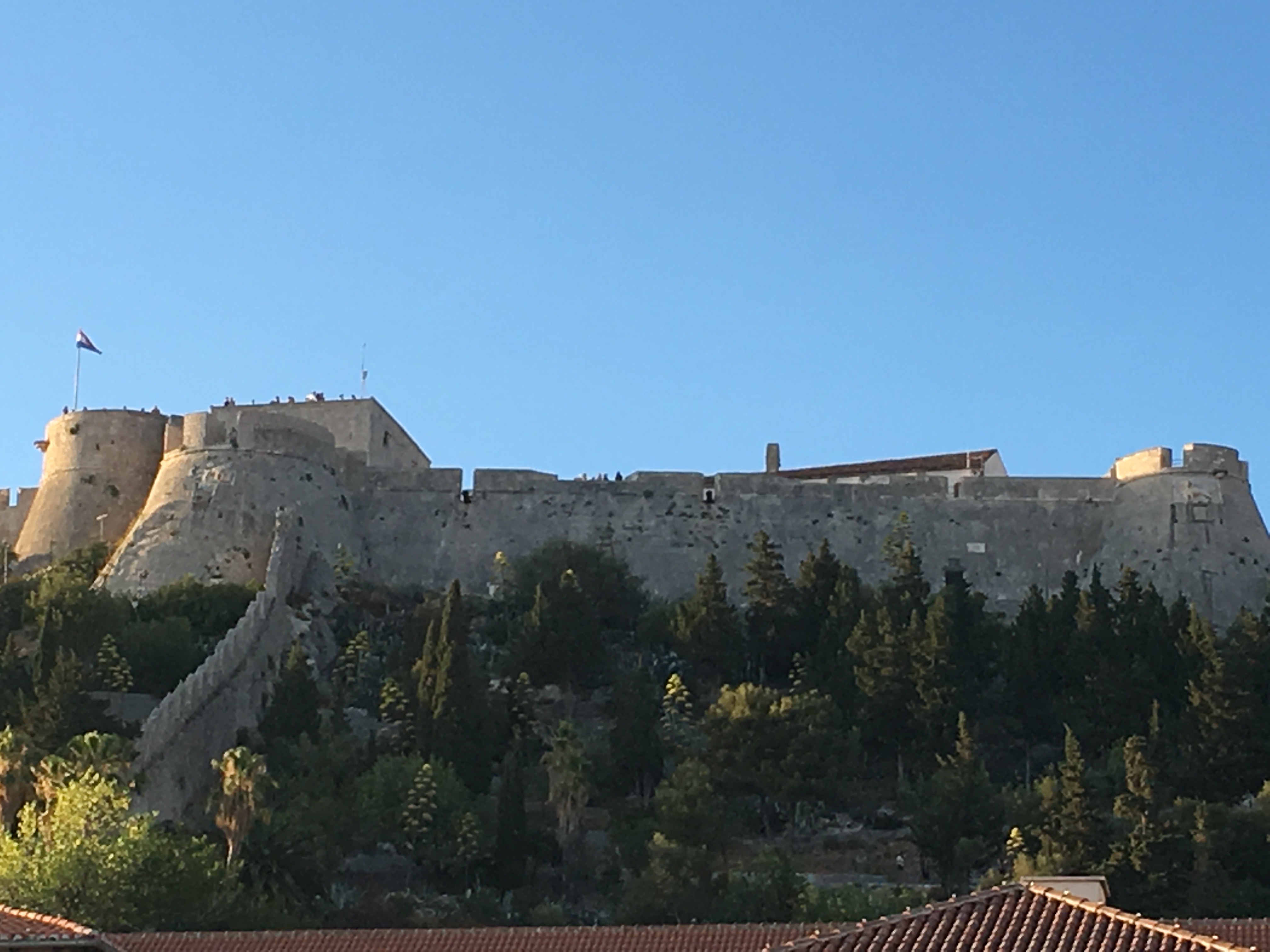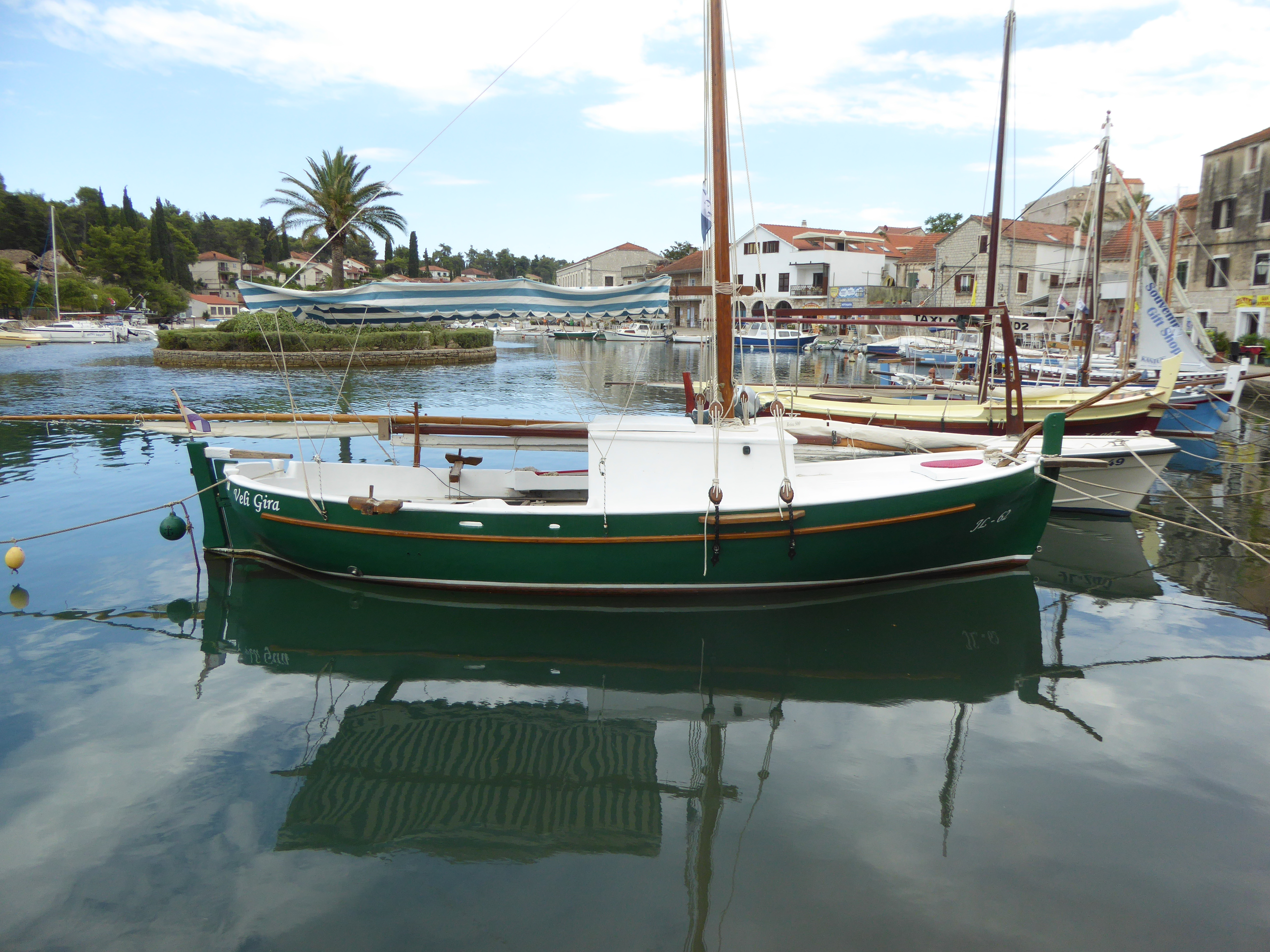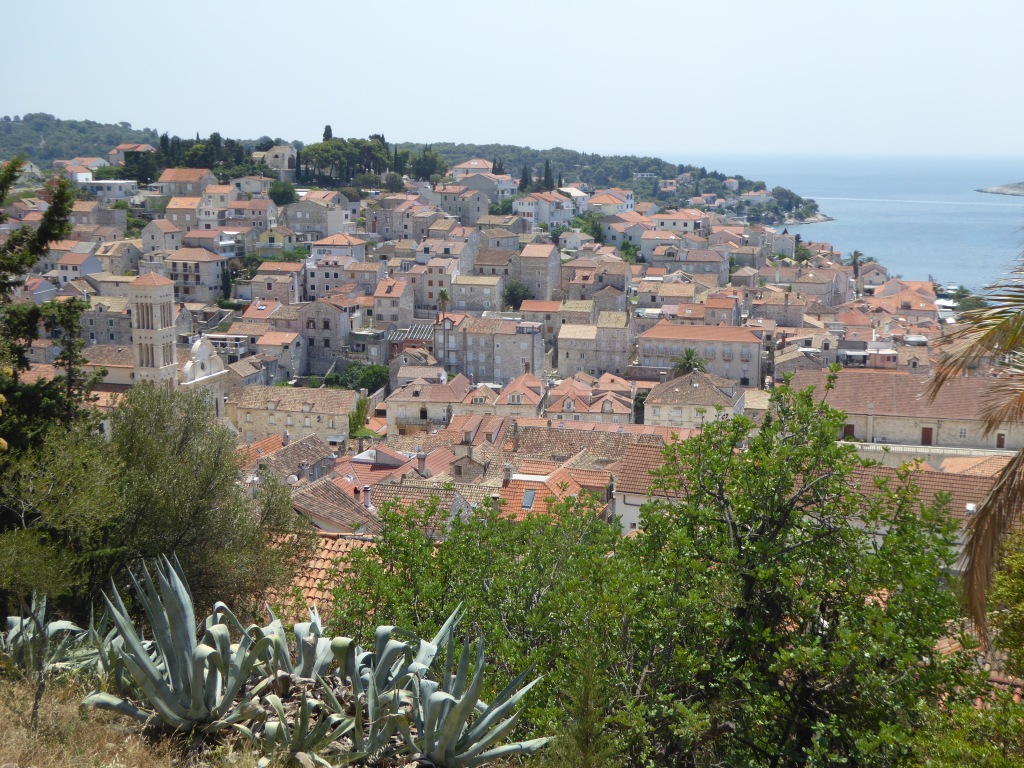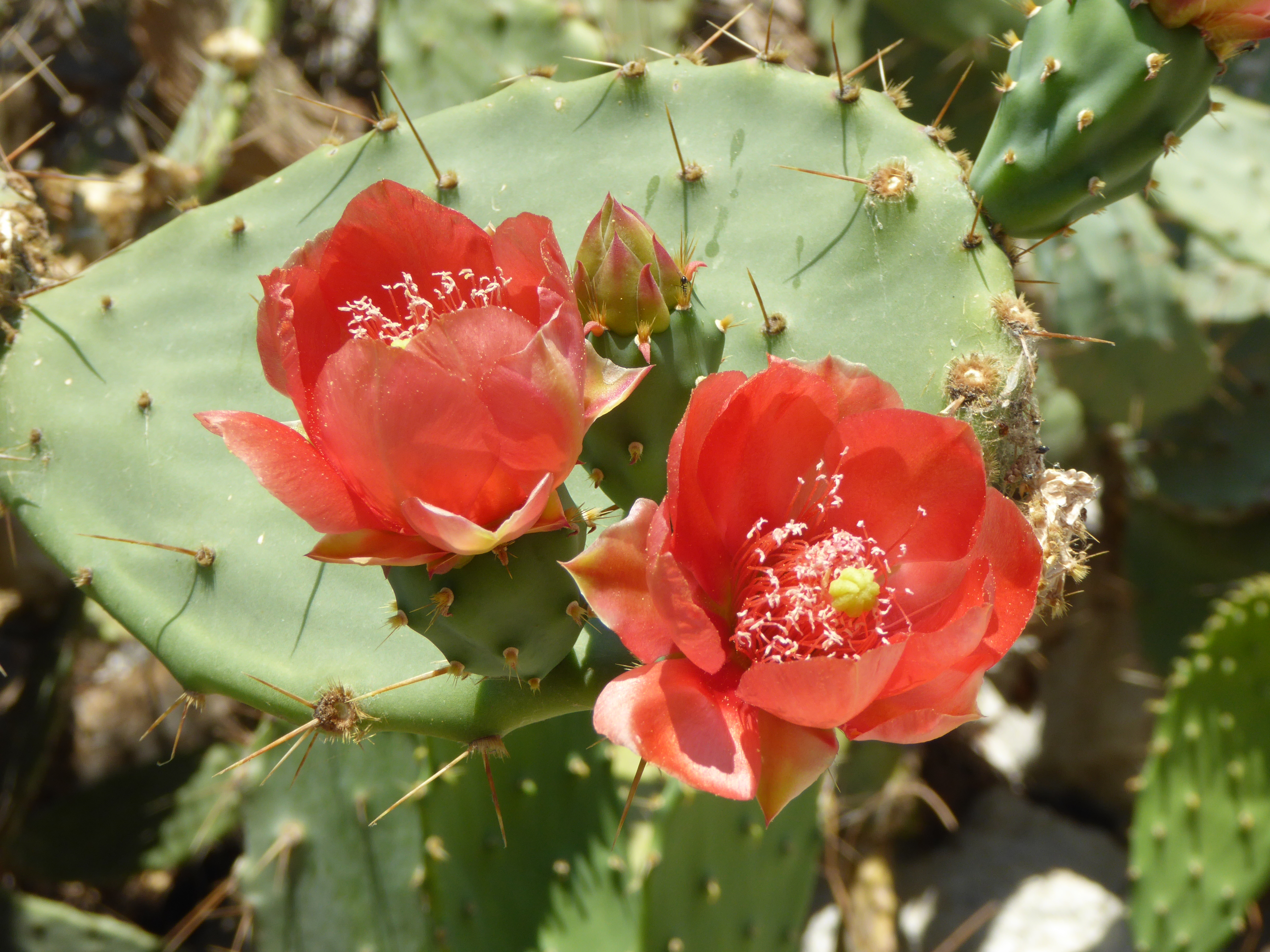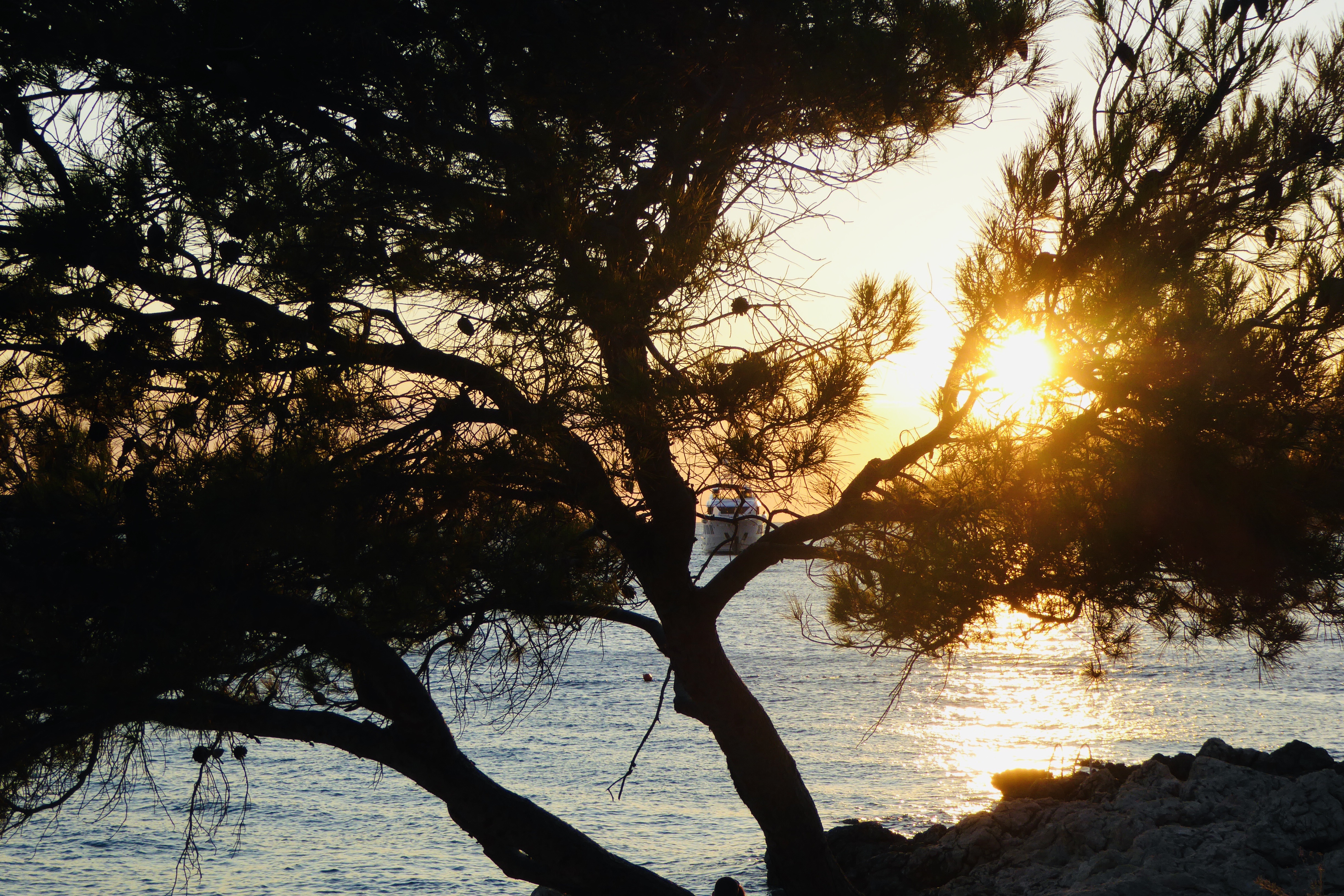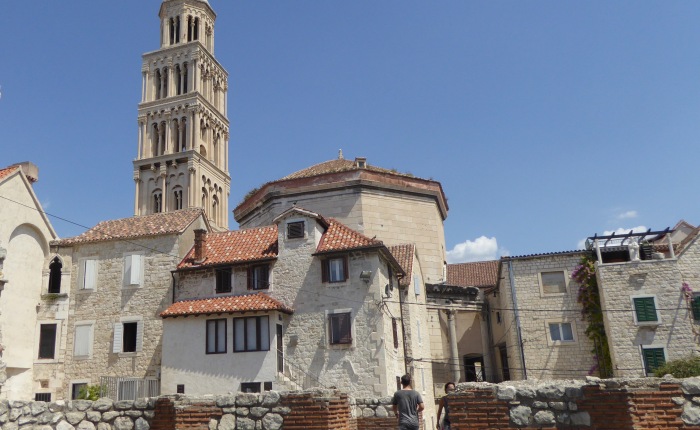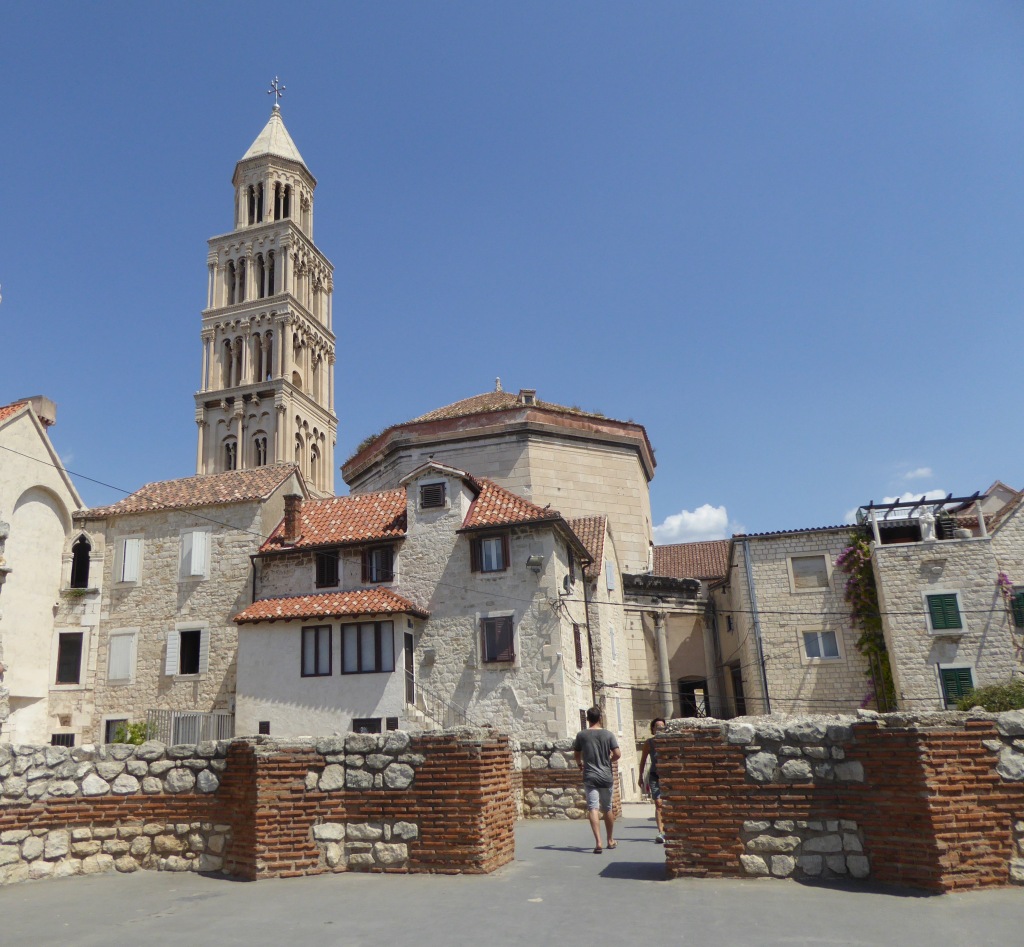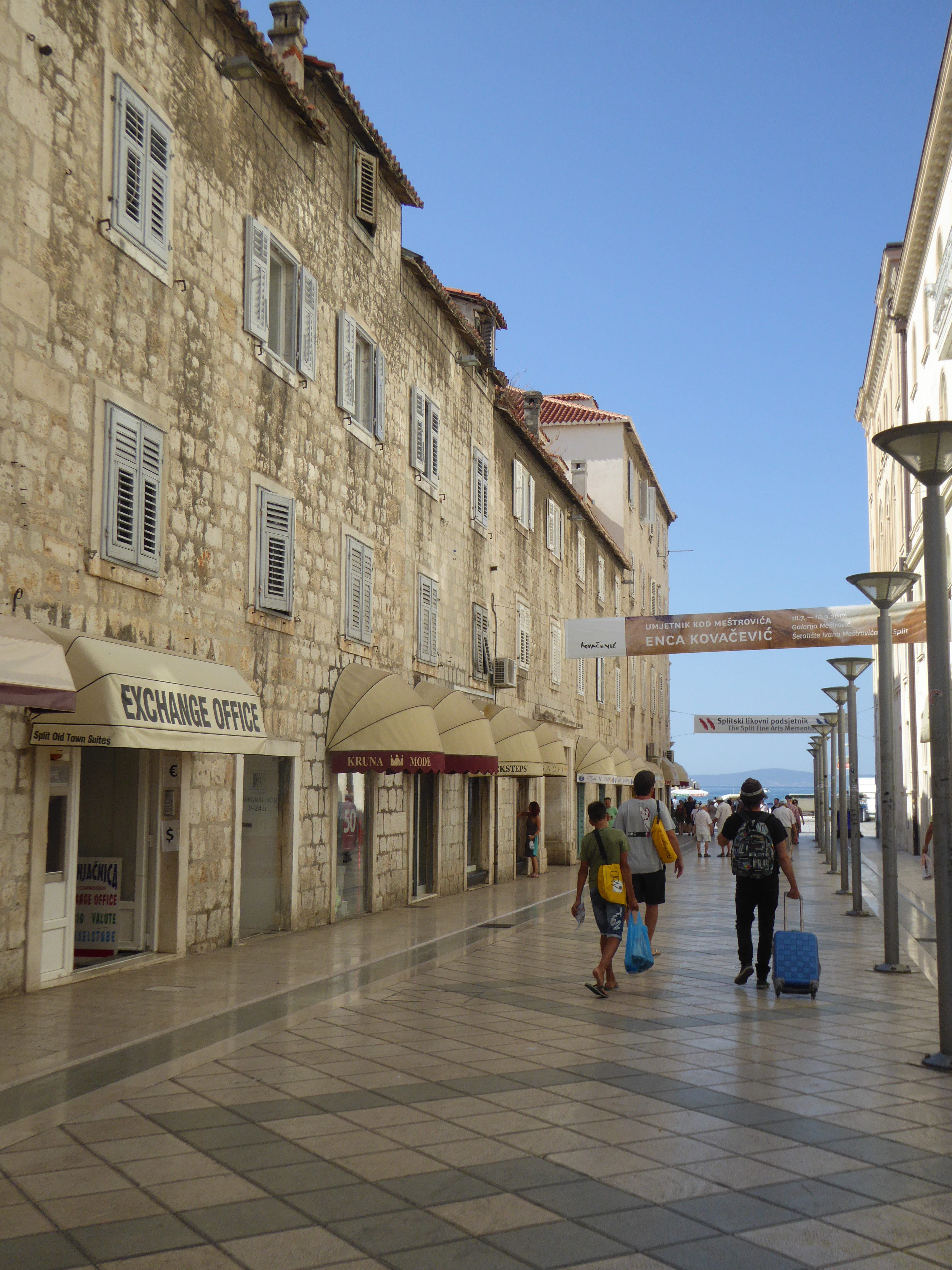Desert Castles, Mosaics and Mt Nebo
Umm al-Jimal
Umm al-Jimal (“Mother of Camels”) lies about 80km north east of Amman near the Syrian border. The drive from Amman took us past some huge refugee camps, housing Syrians, I was told. These camps looked relatively organised, but the sight of the home of so many persons was a sad reminder of the suffering of those displaced by war and political upheavals.
Umm Al-Jimal is built entirely of local basalt, including doors and window frames and the roofs, and was described by an American archaeologist as being “Far out in the desert, in the midst of the rolling plain, beside the dry bed of an ancient stream there is a deserted city all of basalt ……(which) appears like a living city rising black and forbidding from the grey of the plain”. (Butler HC 1913 “Ancient Architecture in Syria”). It didn’t seem all that far out in the desert when I visited, but otherwise the description is still apt.
It is thought that the earliest settlement of the site was by the Nabateans in around 1BC, followed by the Romans. During Byzantine times, the city grew – churches were constructed and Roman barracks were stripped of their military purpose.
Of particular interest is the survival of domestic architecture which is unusual. I imagine the basalt could heat up unbearably, but when I was there, the stones lying about were agreeably warm to sit on. The huge basalt slab stone doors are hinged, and still open and shut. One wouldn’t want to catch ones fingers in those doors.
As there was no water source, early residents built an ingenious water system consisting of channels and 18 large reservoirs. These are being reactivated.
Shepherds were using the site for grazing their sheep when I was visiting – a great use for an ancient site.

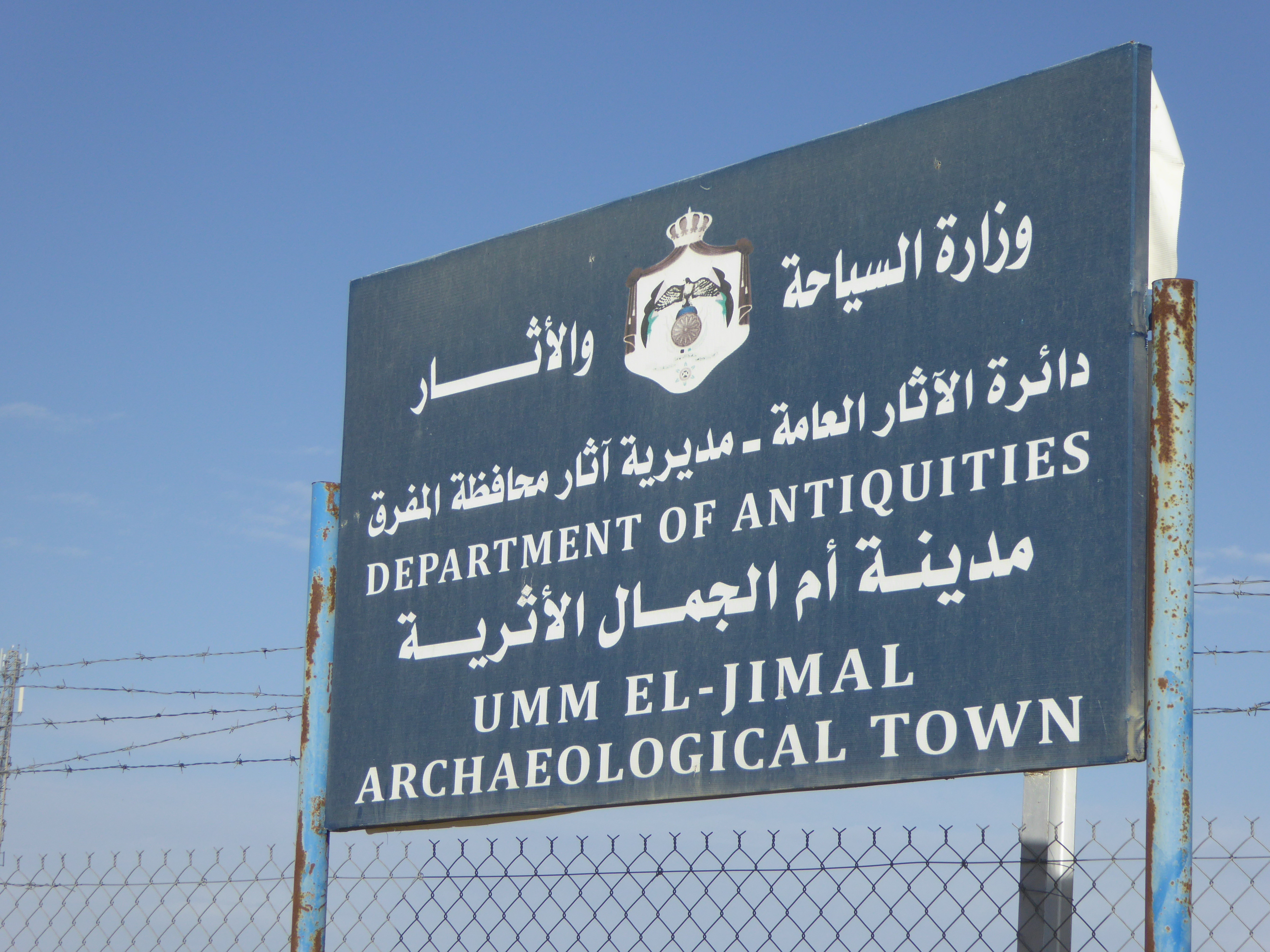
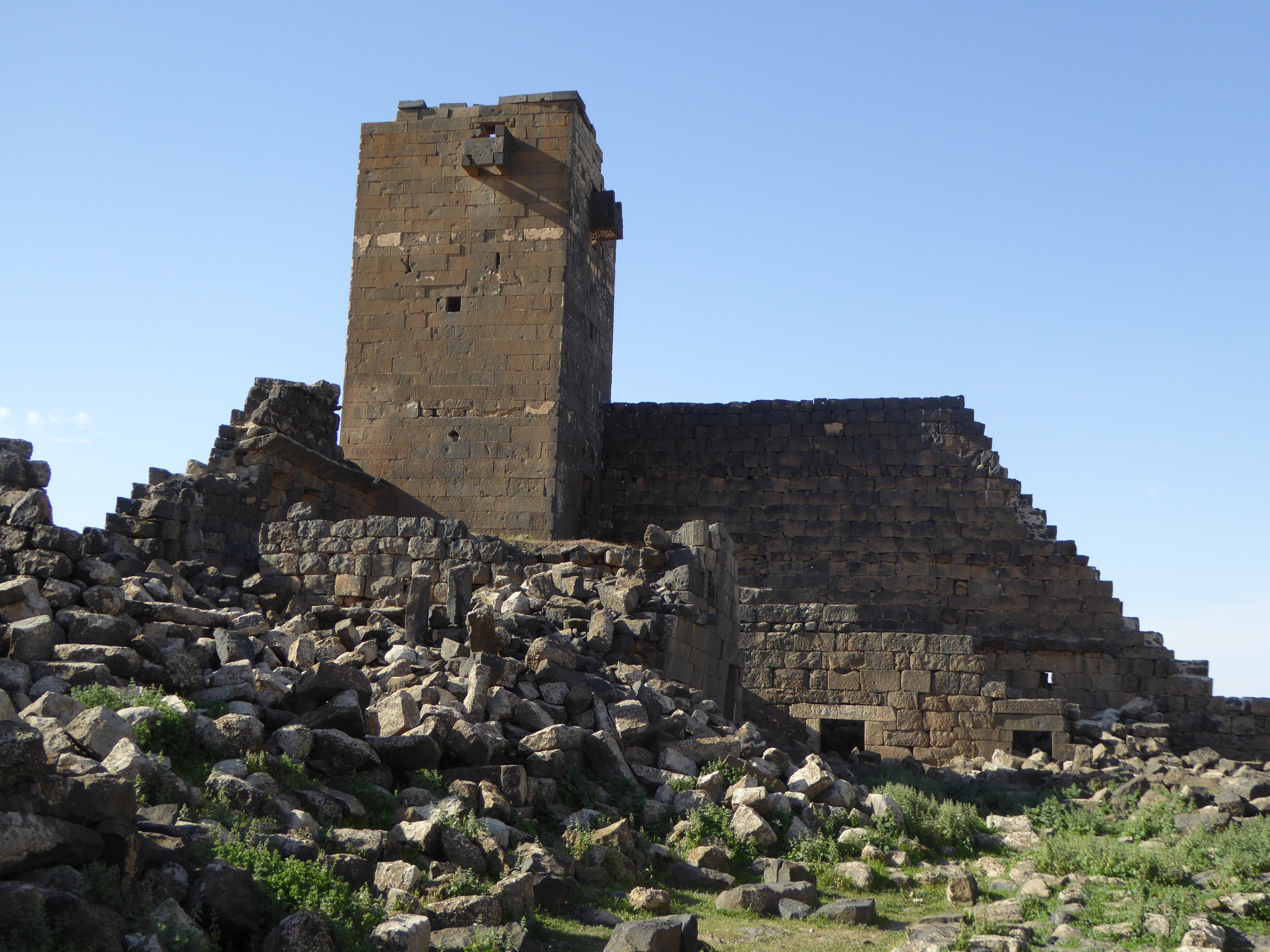
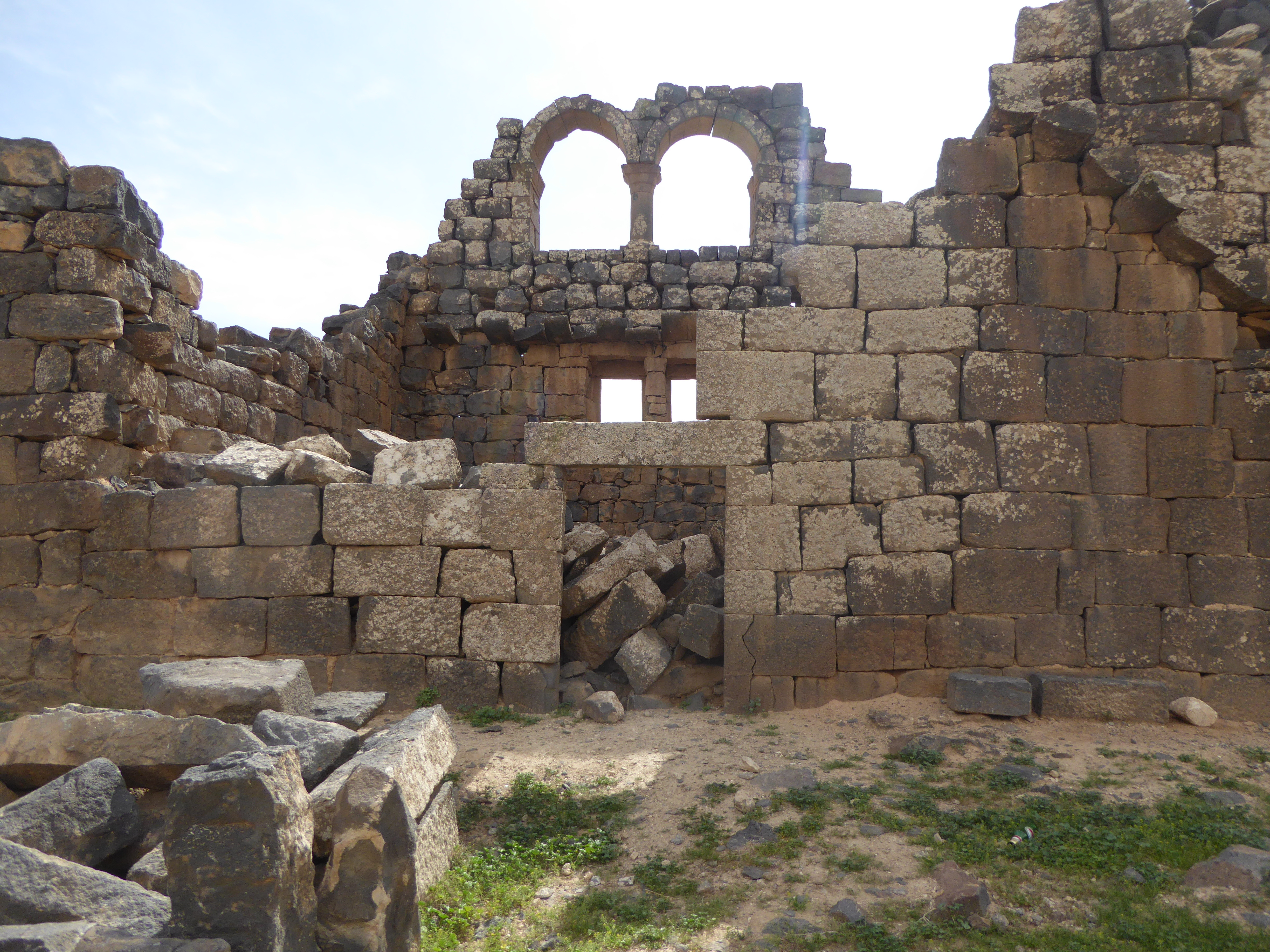


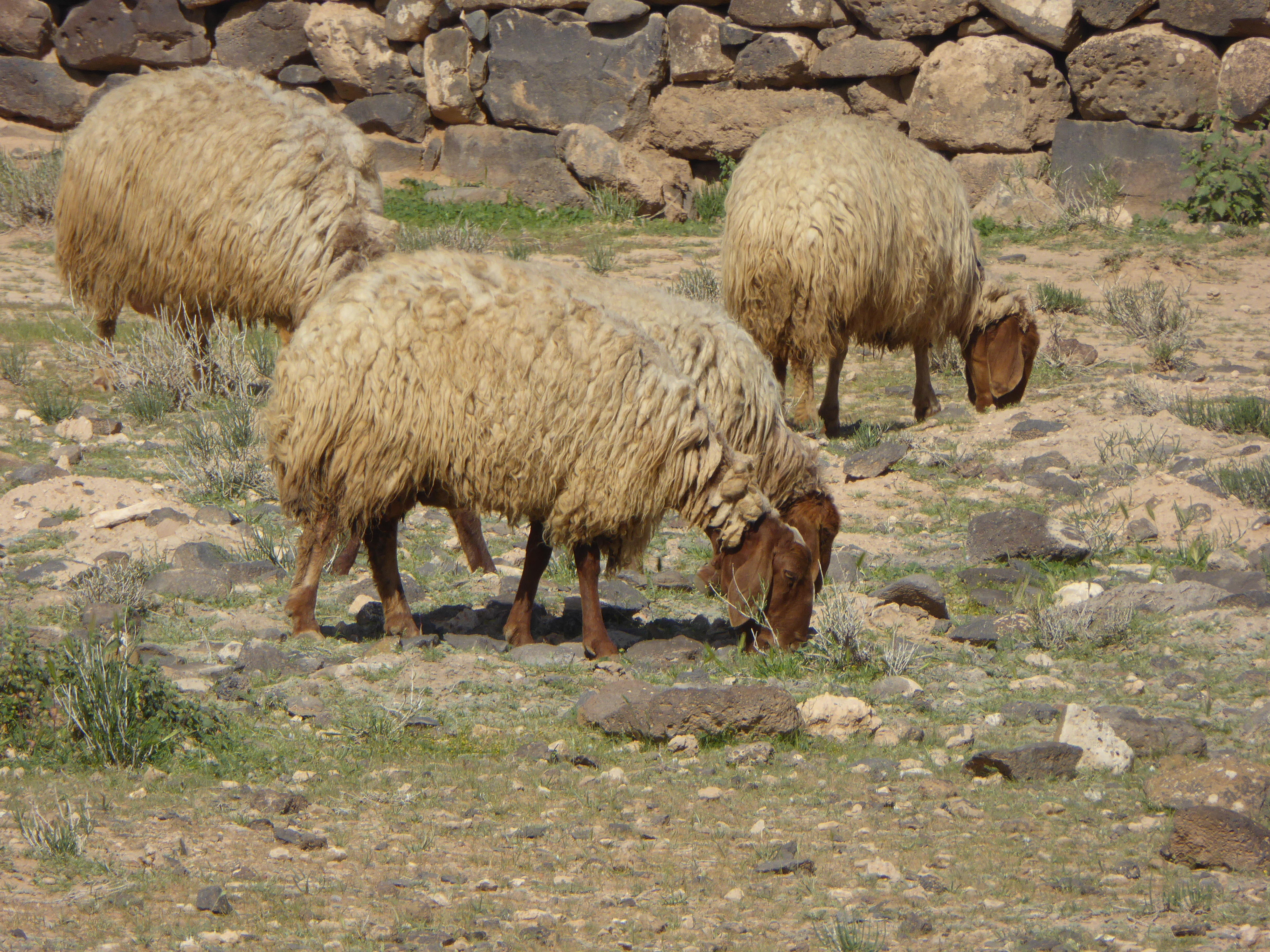




Just after visiting this castle, the silence was shattered when we stopped for refreshments. Several fighter jets screamed overhead, heading for Syria. Syrian planes we were told. A couple nearby almost freaked out – oh my god, are they going to kill us screeched a woman. Nope, they appear to have better things to do than circle back to kill a few hapless tourists.
Qasr al-Azrac
Qasr al-Azrac is a 3rd century Roman fort constructed of basalt. The Umayyads used the fort as a military base and for hunting from. It was fortified at some stage as a defence against the Crusaders. The Mamlukes rebuilt the fort in the 13th century. A Turkish Garrison was stationed at the fort in the 16th century. During the Arab revolt against the Turks, TE Lawrence spent some time in this fort in 1917, with Sharif Hussein bin Ali. He mentioned Qasr al-Azrac in his book The Seven Pillars of Wisdom, and noted the “unfathomable silence” of the area. That has not changed – it was eerily silent.
Lawrence lived in a room in the tower above the southern entrance, access to which was through a huge basalt door, which Lawrence said shook the whole tower when it was closed. It was apparently not very watertight but Lawrence’s followers, without benefit of a room, were no doubt less comfortable than Lawrence in his leaky room in the tower.
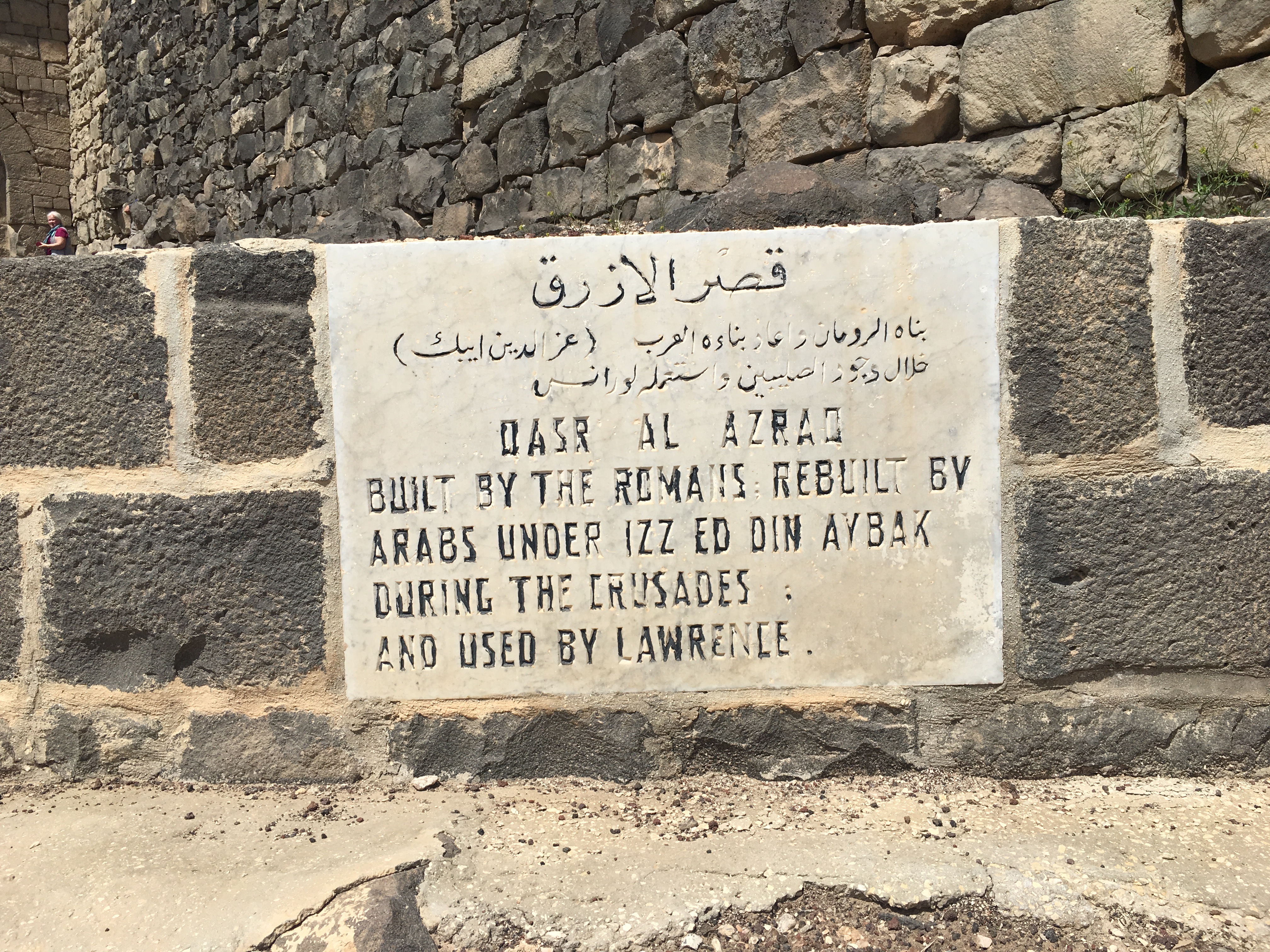




Qasr Al Amra
The Umayyads built Qasr Al Amra, in around the 8th century. It was a bath house, but it was also a residence, and was founded by the Caliph Walid 1. The foundations of a castle are all that remain of the larger complex. The exterior is rather drab, but the interior is surprisingly beautiful – surprising because the walls are covered by frescoes and murals, very colourful, but depicting graven images. It apparently was not until later that Islam banned such images.
It is somewhat startling to enter an Islamic building to be confronted with images of naked women and dancing scenes. There are hunting scenes, which picture salukis. There are gymnastic scenes and there are scenes of groups of rulers – enemies of Islam. The site is World Heritage listed, primarily because of a fresco of the night sky, which show major constellations.
Qasr Al Amra is one of those unexpected, interesting and fascinating delights and which challenged my vision of Islamic art.






Qasr Kharaneh
Qasr Kharaneh is an Islamic fortress dating from the 8th century, and was built at much the same time as Qasr Al Amra, 16 km away. It is an almost square building and has buttresses on each corner. It has brick “dog tooth” decoration banding – an Assyrian type decoration. Qasr Kharaneh sits in the middle of a pretty desolate plain, with not a tree to be seen.
Its function and purpose are disputed – some sources say it was not a fort, even though it looks like one from the outside, and only served as a meeting place, and a base from which to go hunting. TE Lawrence described it as a palace, although he did not inspect it. He said he was too careless to visit it, when he was passing by at midnight, and referred to it as the “lone palace of Kharaneh. Internally, there are long rooms, which were probably used as stables. About 60 rooms surround a courtyard, and the second floor, carvings and mouldings can be seen.



Mt Nebo, the Dead Sea and Mosaics:
Quite a contrast to a day of exploring castles was a day of Moses, swimming and mosaics.
I was looking forward to looking out over the Land of Canaan (the promised land) from Mt Nebo – not because it was meaningful to me in a religious sense, more because it was such a historic story, and I do enjoy myths and legends.
Pope John Paul II, when visiting the site in 2,000, planted an Olive Tree as a symbol of peace. The tree had to be fenced off, because people were taking leaves off it – presumably because of its connection with the Pope, and the biblical significance of Mt Nebo.
The view from Mt Nebo is spectacular, particularly on a clear day. It was not a particularly clear day, but I enjoyed views over the Jordan River, the Dead Sea and the West Bank. I liked the modern sculpture of the Brazen Serpent, Nehushton, by Giovanni Fantoni. The sculpture is symbolic of the serpent taken by Moses into the desert and the cross on which Jesus was crucified.
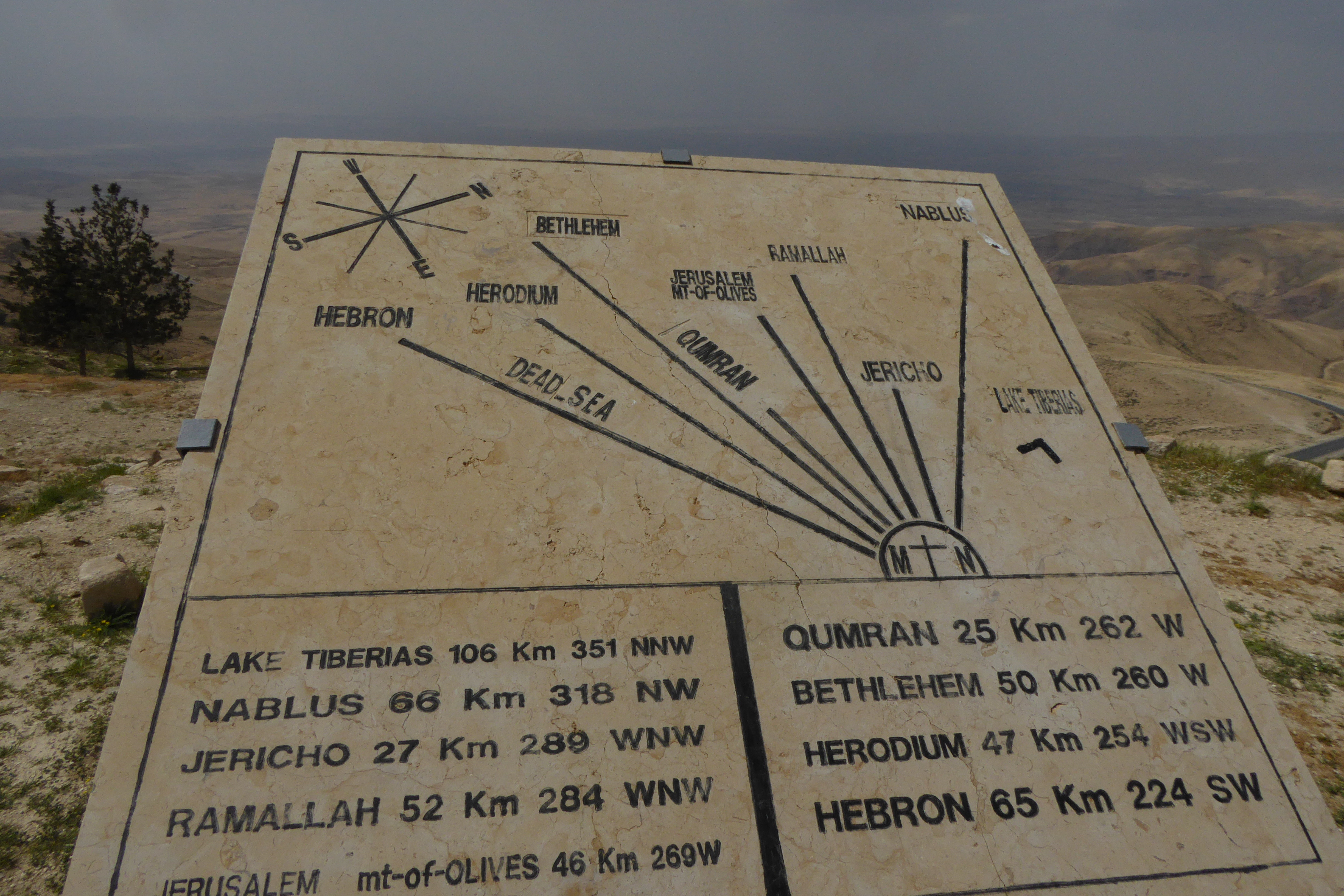



The Moses Memorial Church at Mt Nebo contains excellent Byzantine period mosaics from around 597 AD. The church was abandoned in the 16th century, but was rediscovered in the 1933. The mosaics were rediscovered when the site was excavated. The large mosaic in the baptistry depicts hunting scenes at the top, and more agricultural scenes at the bottom. The animals depicted are in the main, African.




The road down to the Dead Sea offers changing scenery, the scrubby olive trees and occasional pine trees of Mt Nebo to desert like areas. From one spot on this drive, I had a good view of Jericho – quite green looking in the generally brown landscape. I was interested to see towers on the Mount of Olives, and glints of sun off cars driving down from the Jerusalem University.
My dead sea swimming experience was somewhat disappointing. After picking my way through the stony beach without benefit of water shoes, being slathered with mud and making my way into the water, my high hopes of lying on my back in the water were dashed. The sea was quite choppy, and I didn’t exactly float – well not well enough to have been able to read a book. It was difficult to get the mud off and keep the water out of my eyes at the same time, but I did enjoy semi floating around looking across the water to Israel.
Even though I was only semi floating, I had difficulty getting out of the water as I couldn’t put my feet on the ground. I finally managed to float close enough to the beach to to haul myself out of the water, by getting my arms onto the gravel, and hauling myself out of the water far enough, so that I could finally put my feet down. Not the most elegant way to exit the Dead Sea.
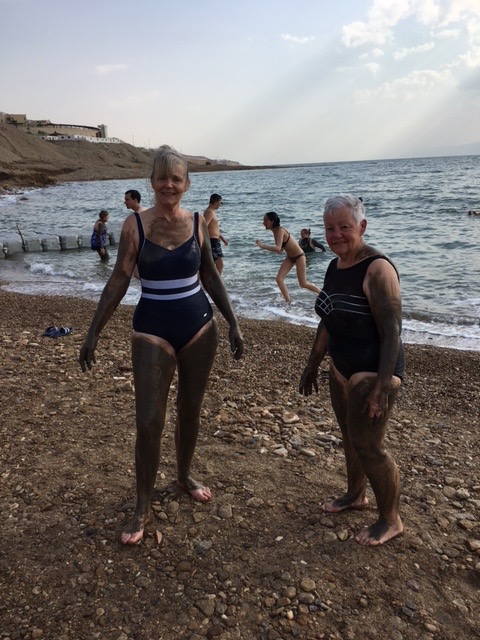
For mosaic tragics, a visit to Madaba is a must. It is known as the city of mosaics, and it certainly has some splendid examples. The 6th century St Georges Church has a stone floor mosaic depicting the earliest map of the holy land. The western part of what remains of the map shows the Mediterranean coast. The eastern part shows the Jordan desert. The north goes as far as Tyre. On the southern side there is a rather odd looking Nile delta. There is a large insert of Jerusalem. Part of the Dead Sea and Jordan valley depiction was defaced by iconoclasts in the 8th century – they removed the faces of the fishermen. Photographs of the map do not do it justice, and I feel privileged to have seen the map in situ. The Madaba reproduction map below (Wikimedia Commons Creative Commons Attribution-Share Alike 3.0) illustrates the remains of the map which measures 15m x 5.6m

The images below are of the detail of parts of the mosaic map.
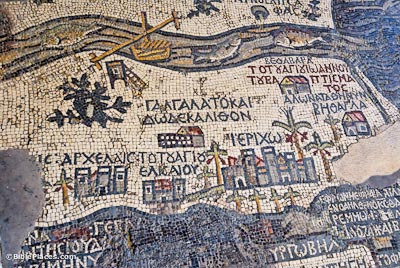

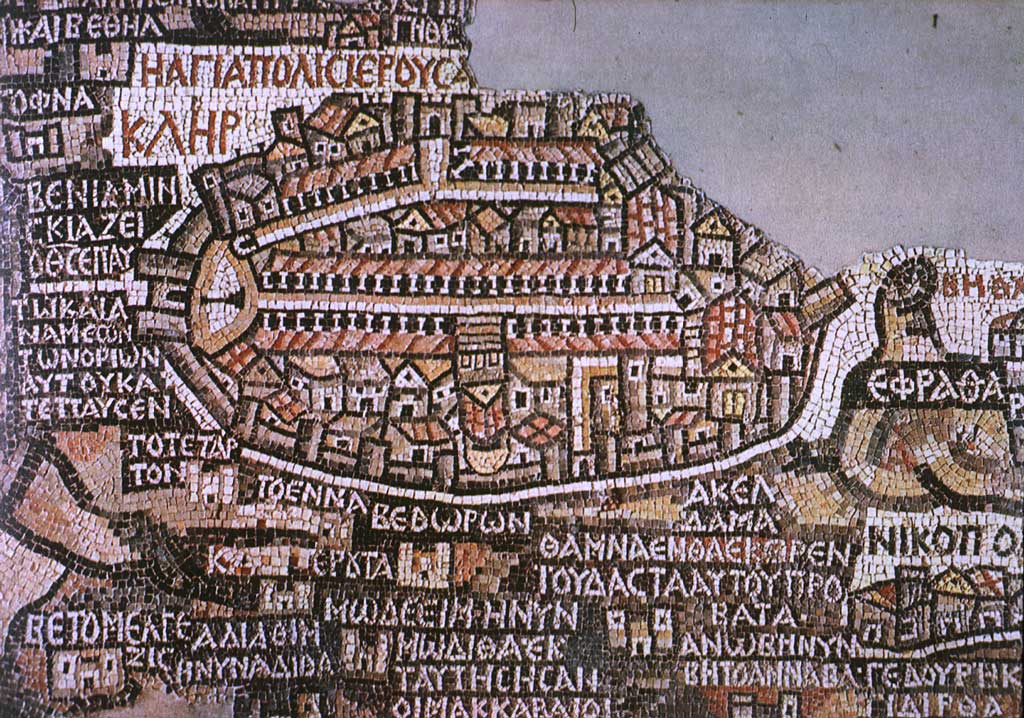
The Archaeological Park 1 in Madaba has a mosaic floor in the Hippolytus Hall, inspired by a greek tragedy by Euripides – Hippolytus. Those familiar with the tragedy will recognise the various people depicted – I must say that I personally love the cupids, particularly Eros being stung by bees (lower left of upper panel).



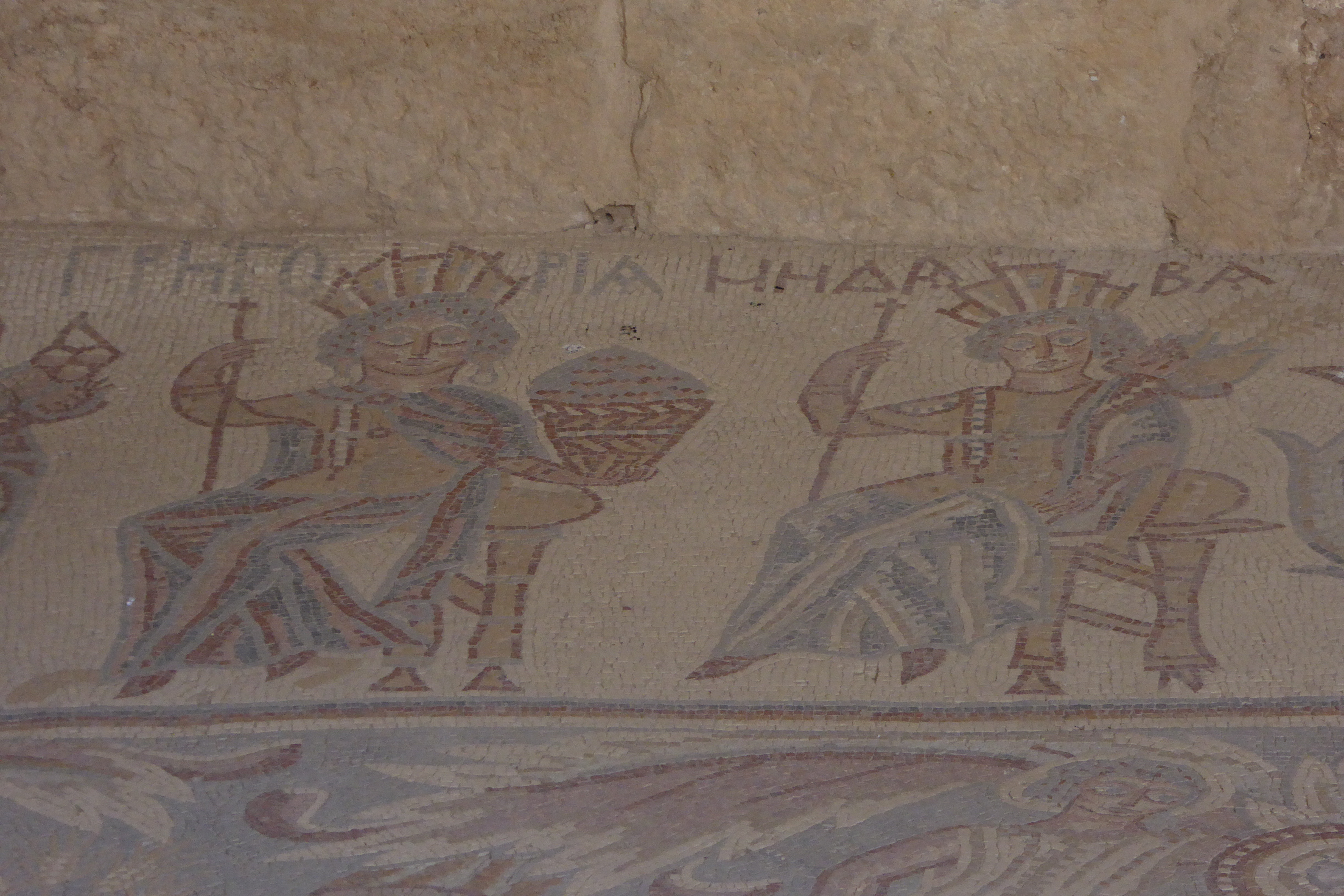
I did not have enough time to see all the mosaics in Madaba – a return visit is on the list.
If you have enjoyed reading this you may like to visit Jordan – Part 1
If you love mosaics go to my previous posts Mosaics: Villa Romana del Casale – Piazza Armerina, Morgantina, Sicily. and An Obsession with Mosaics
Jordan – Part 3 is coming soon.
l;
